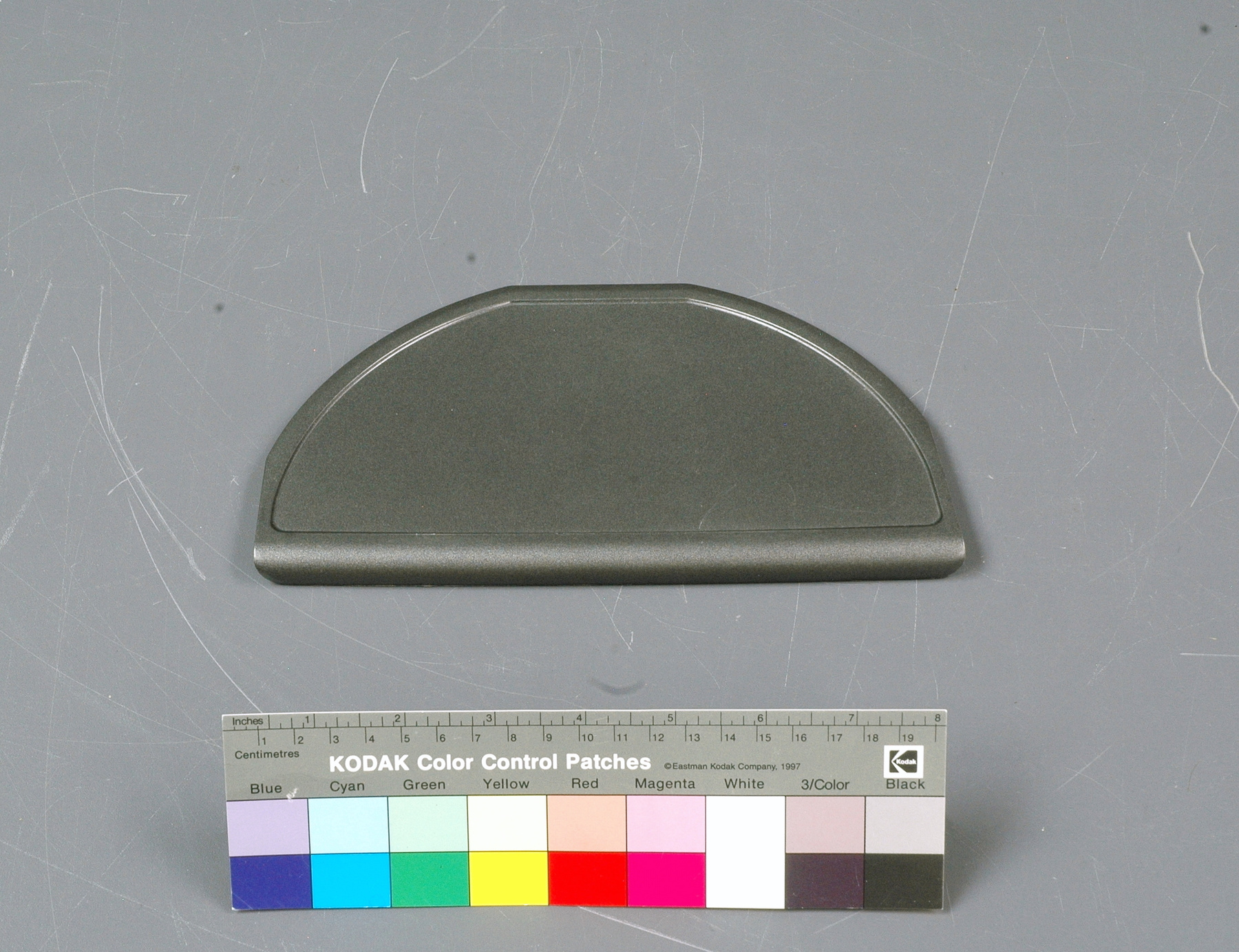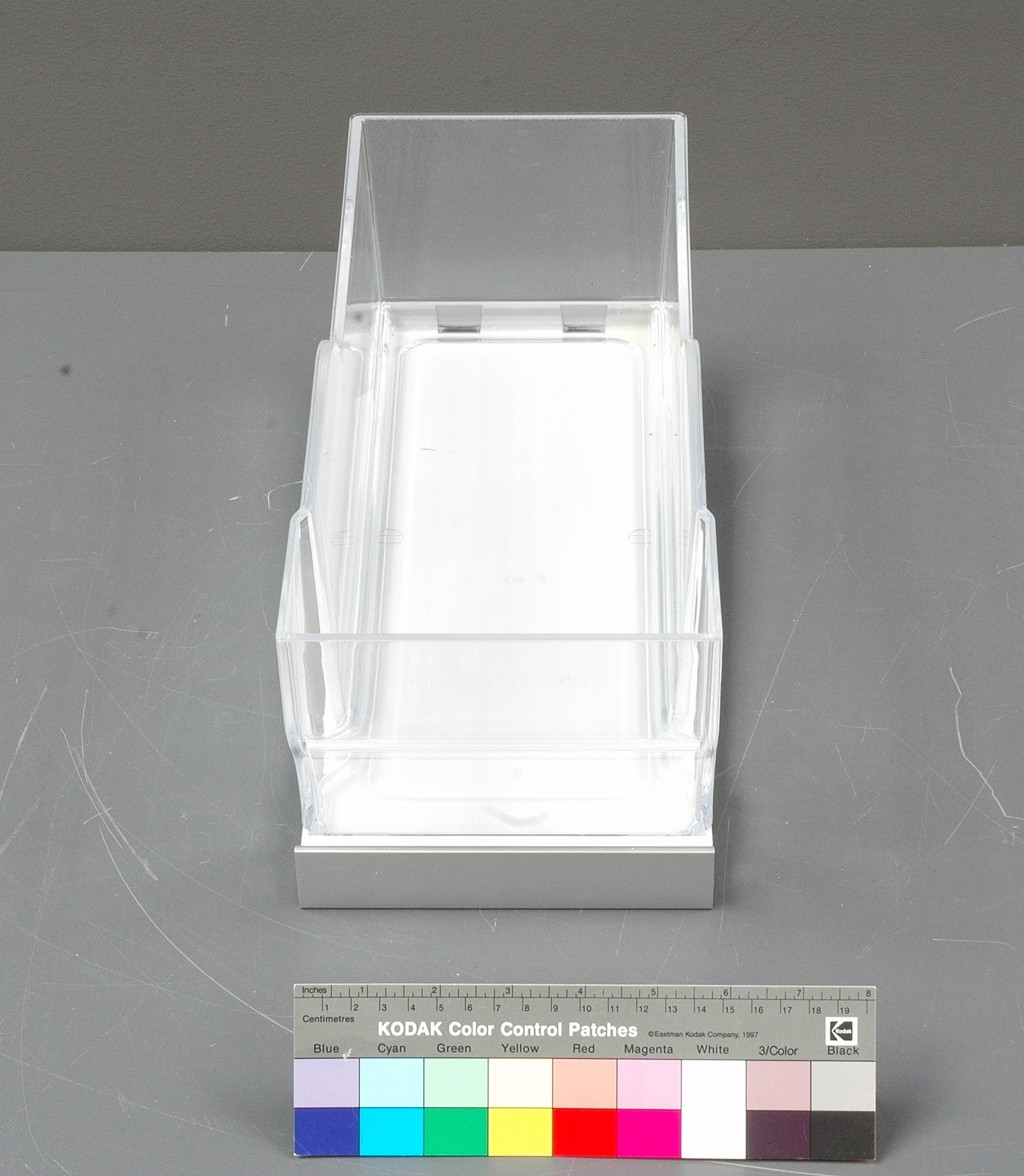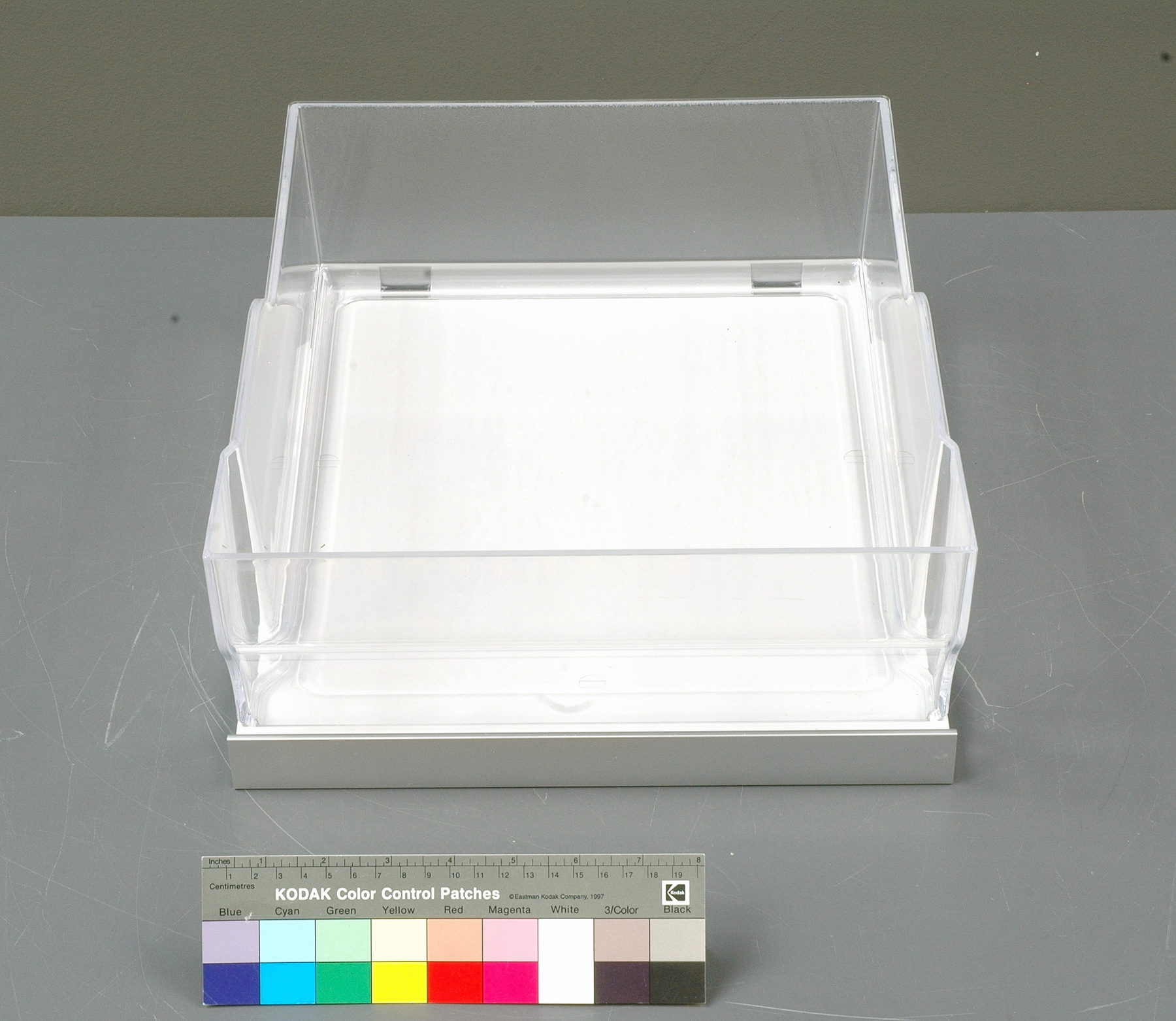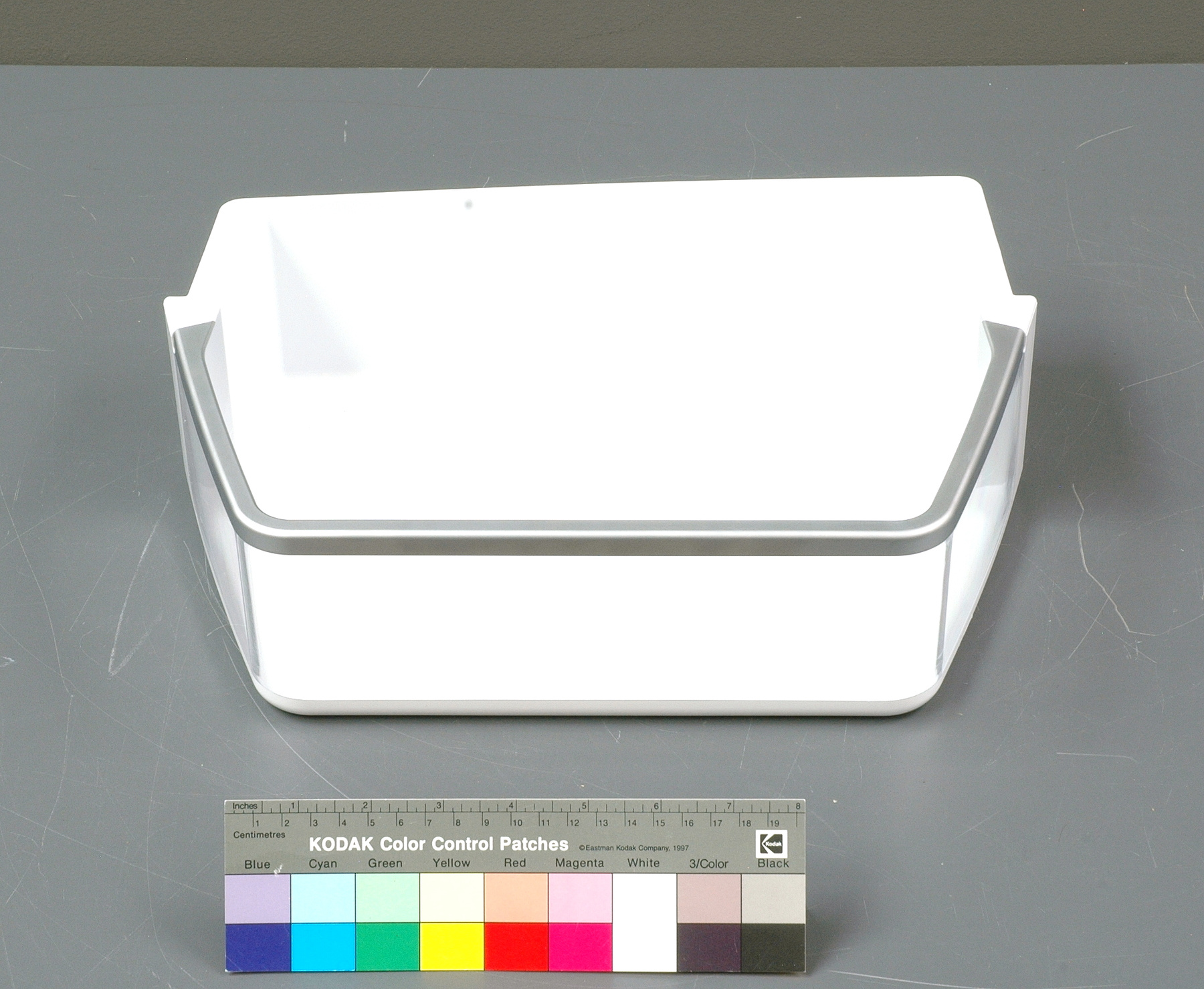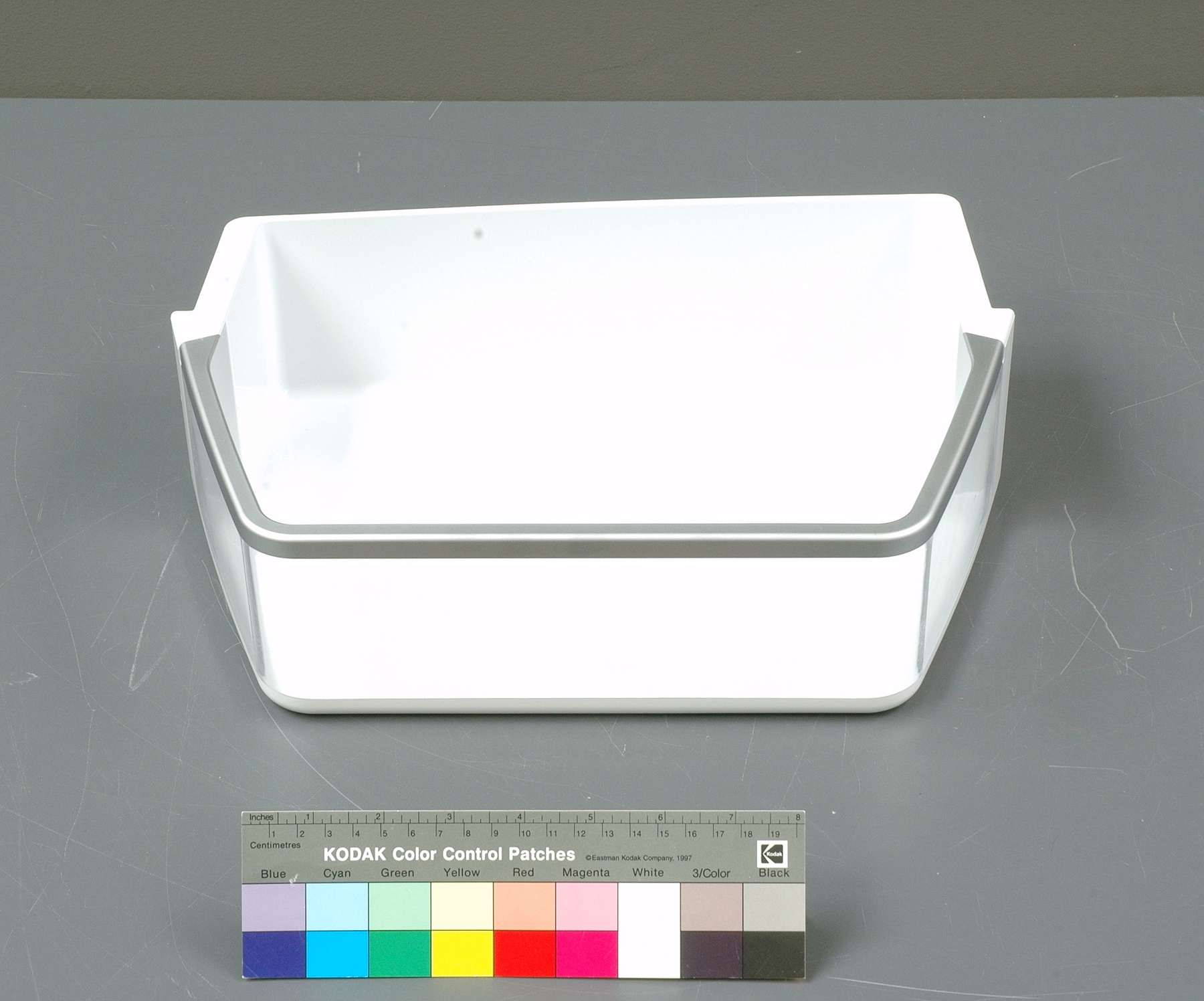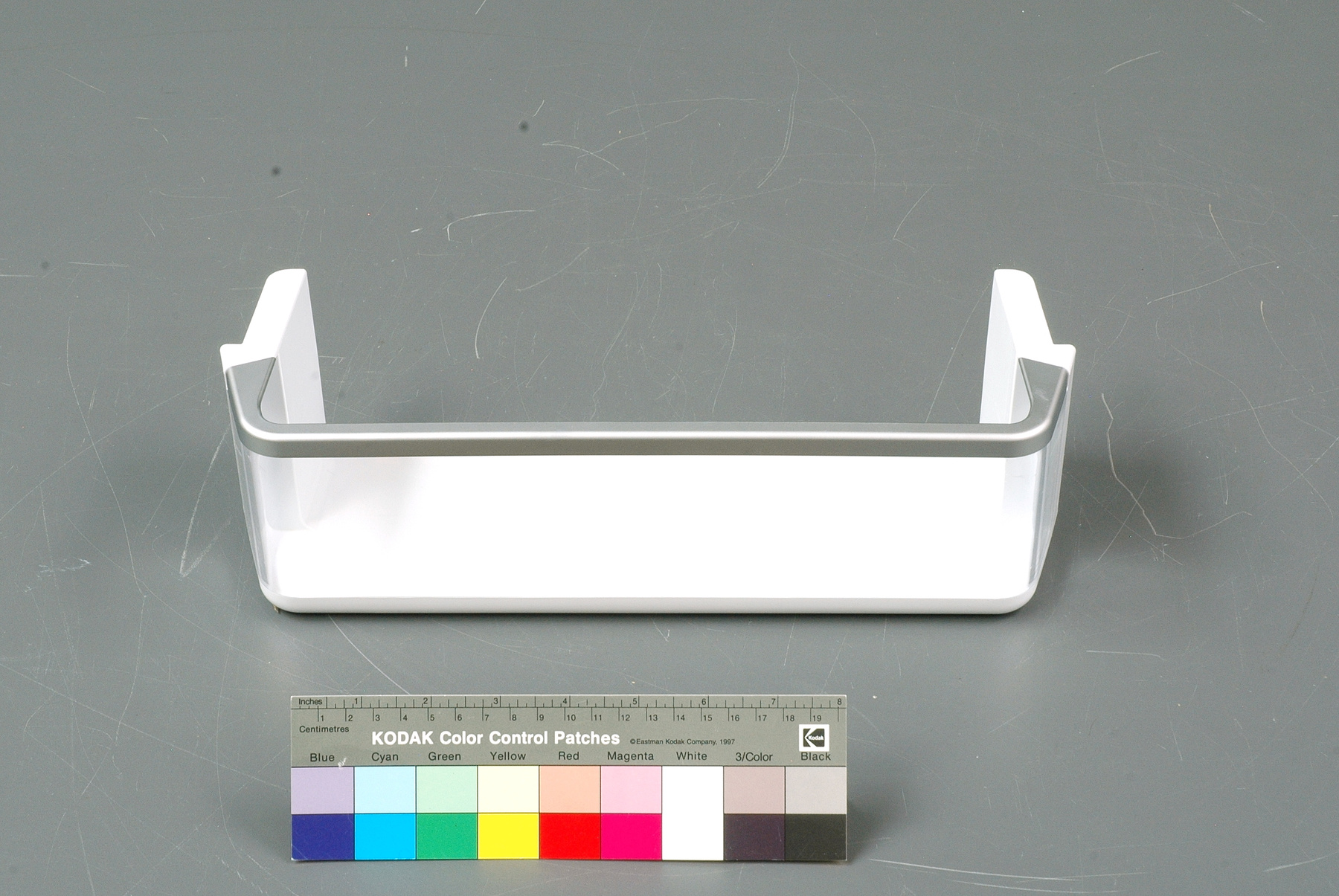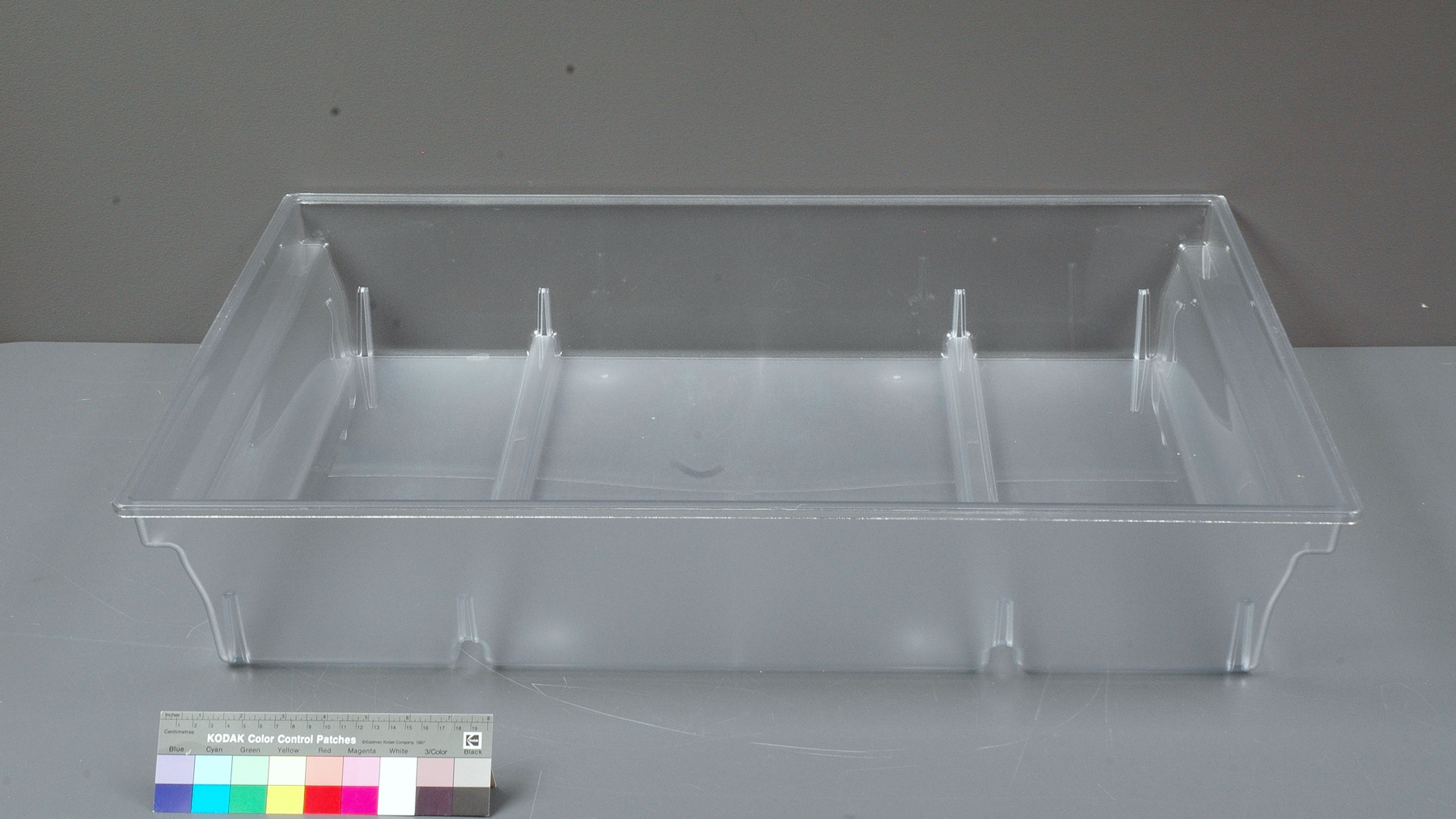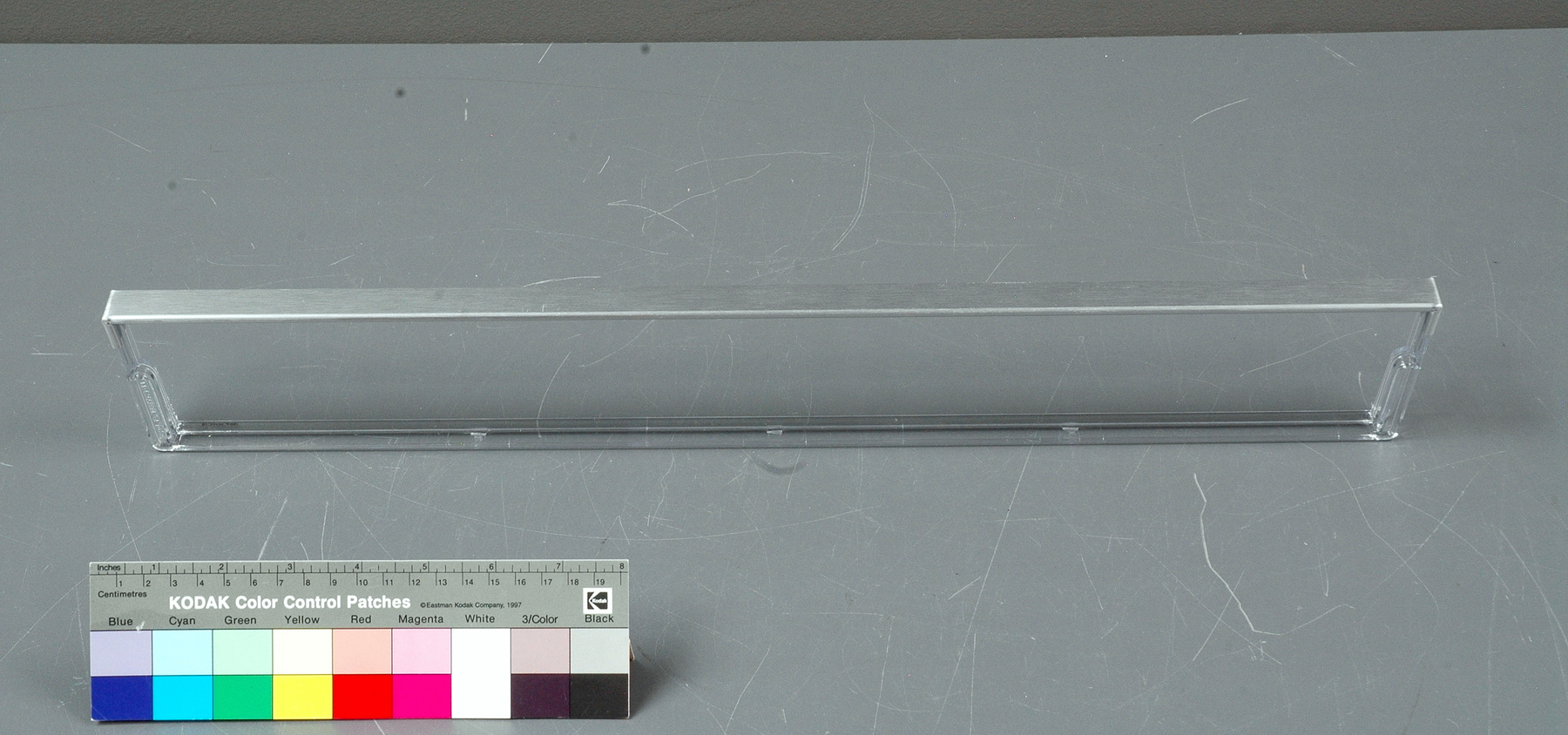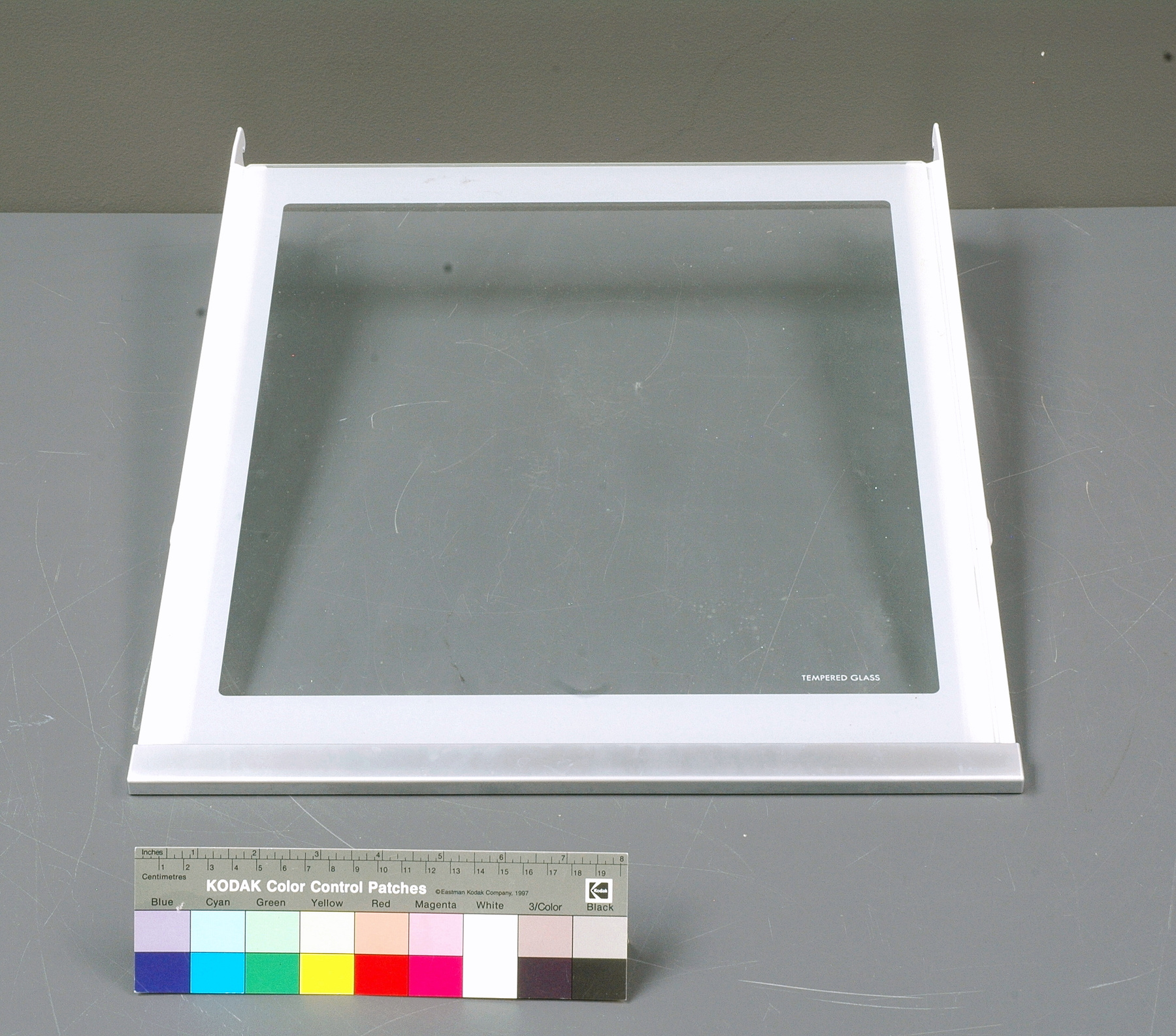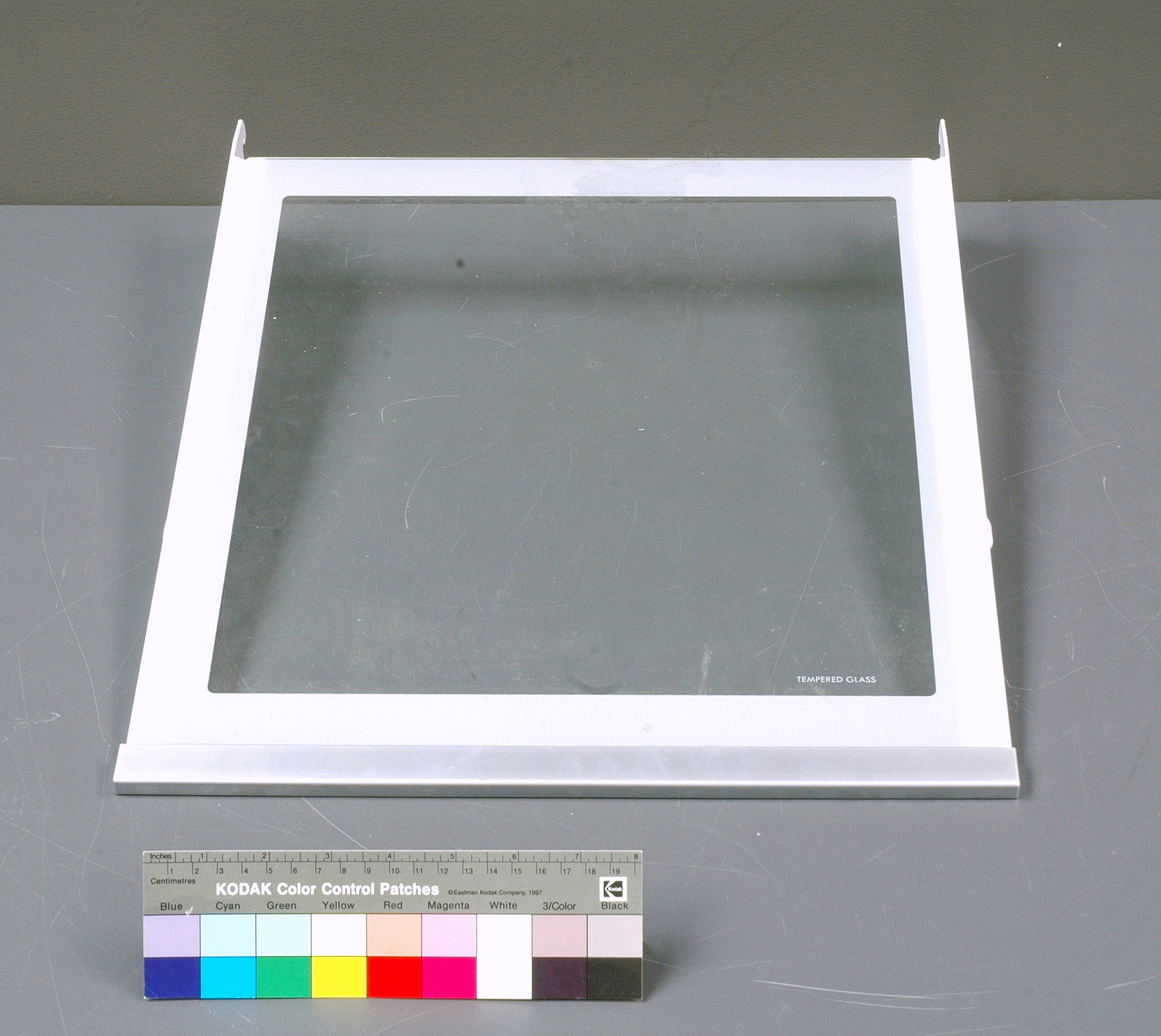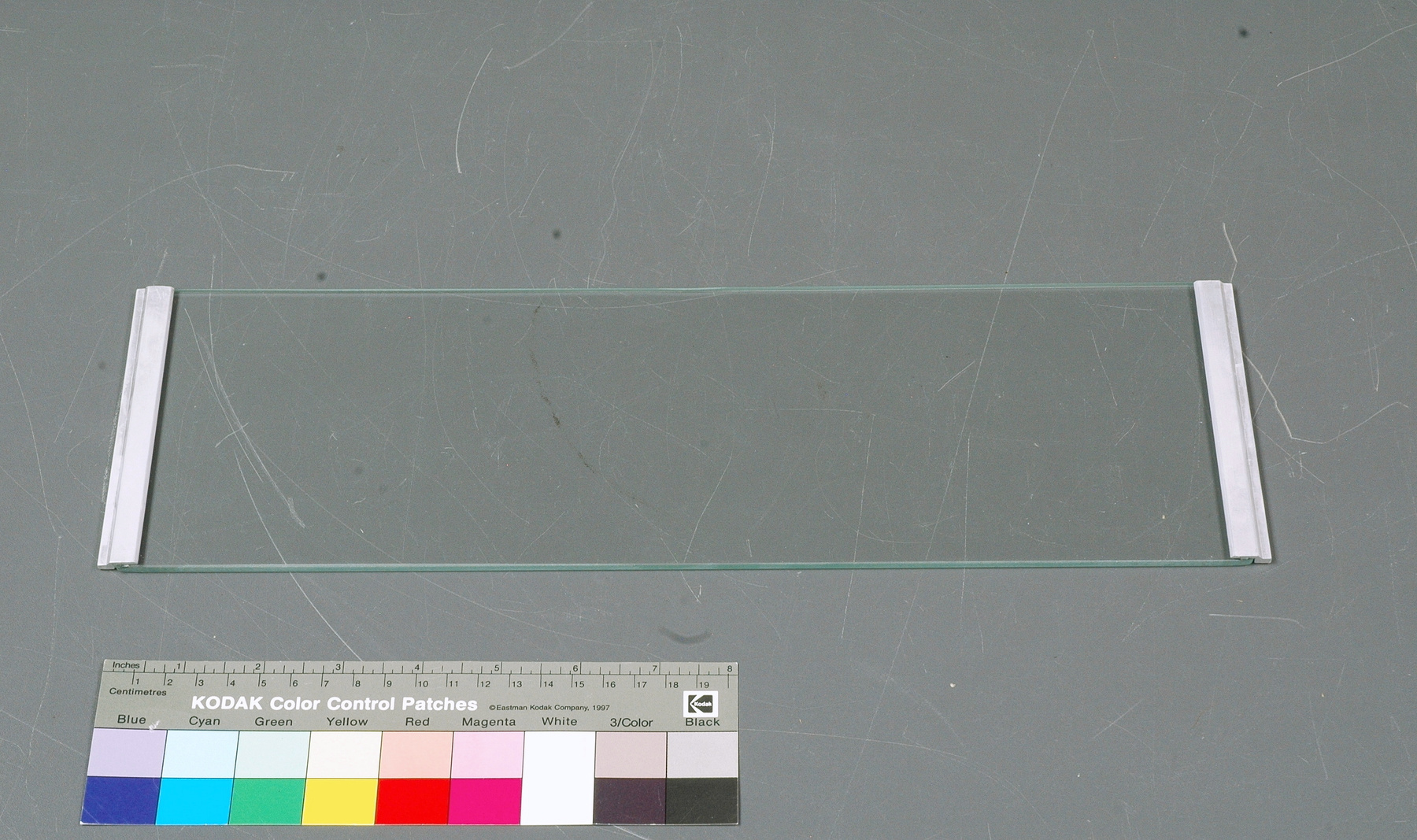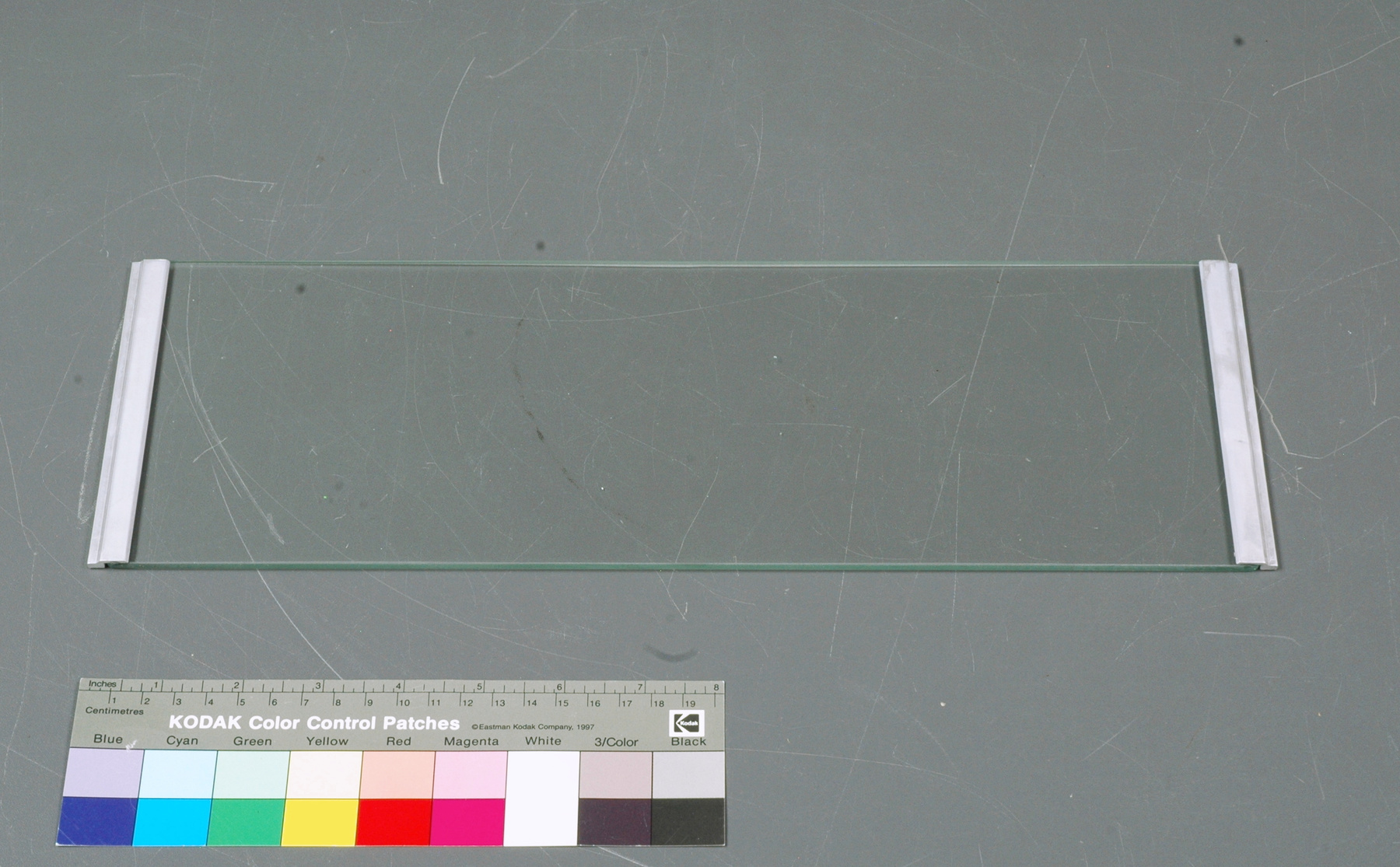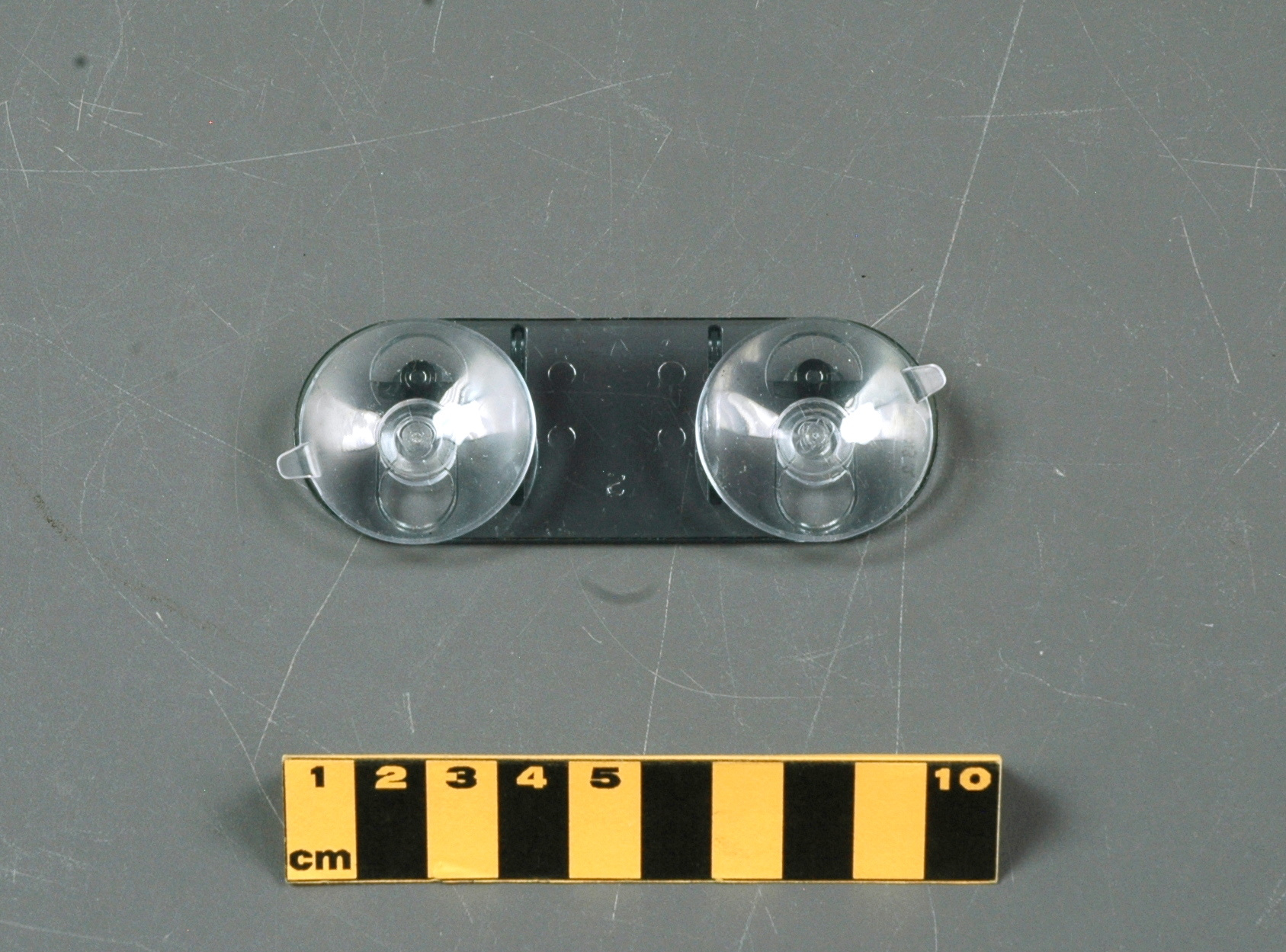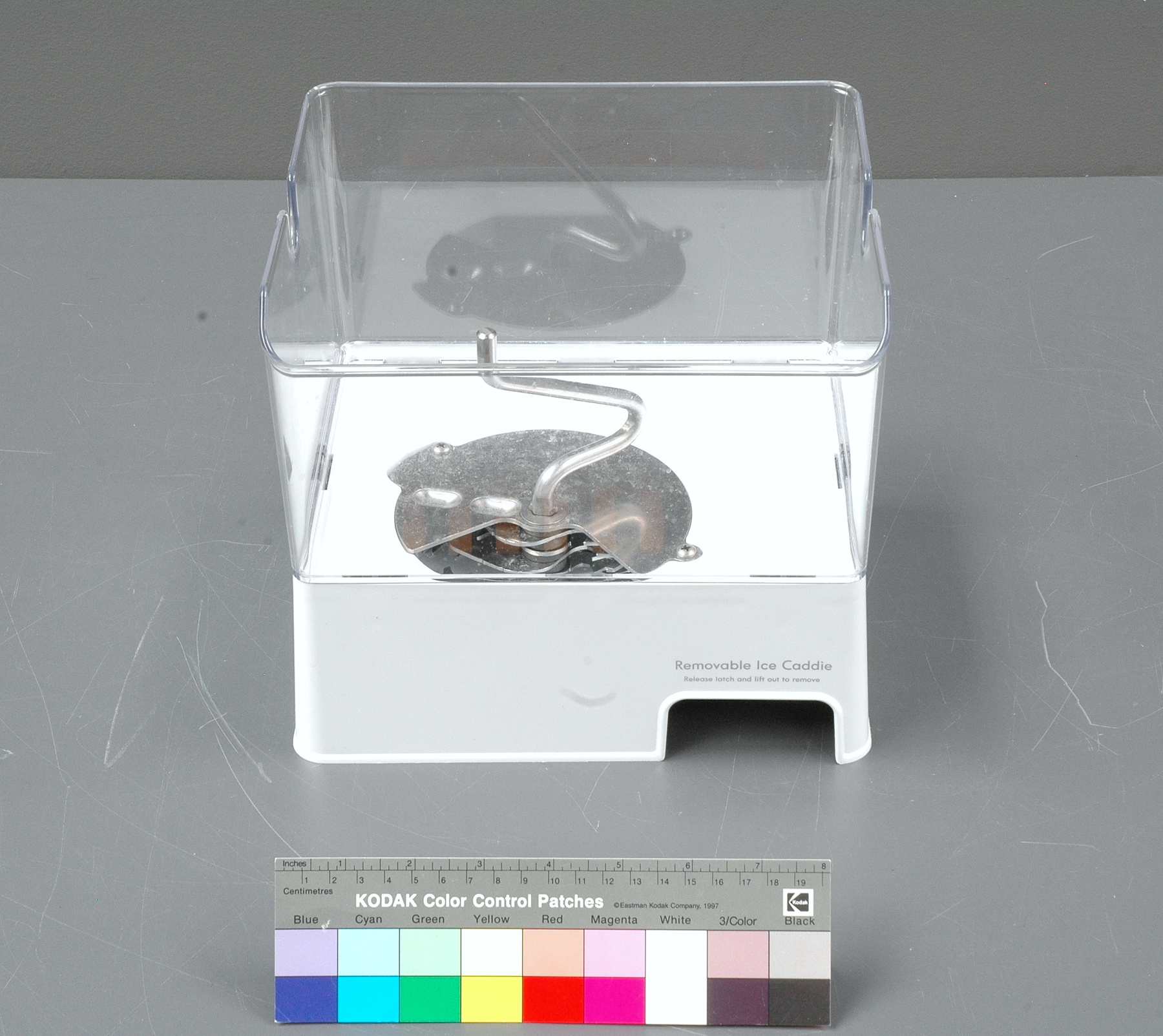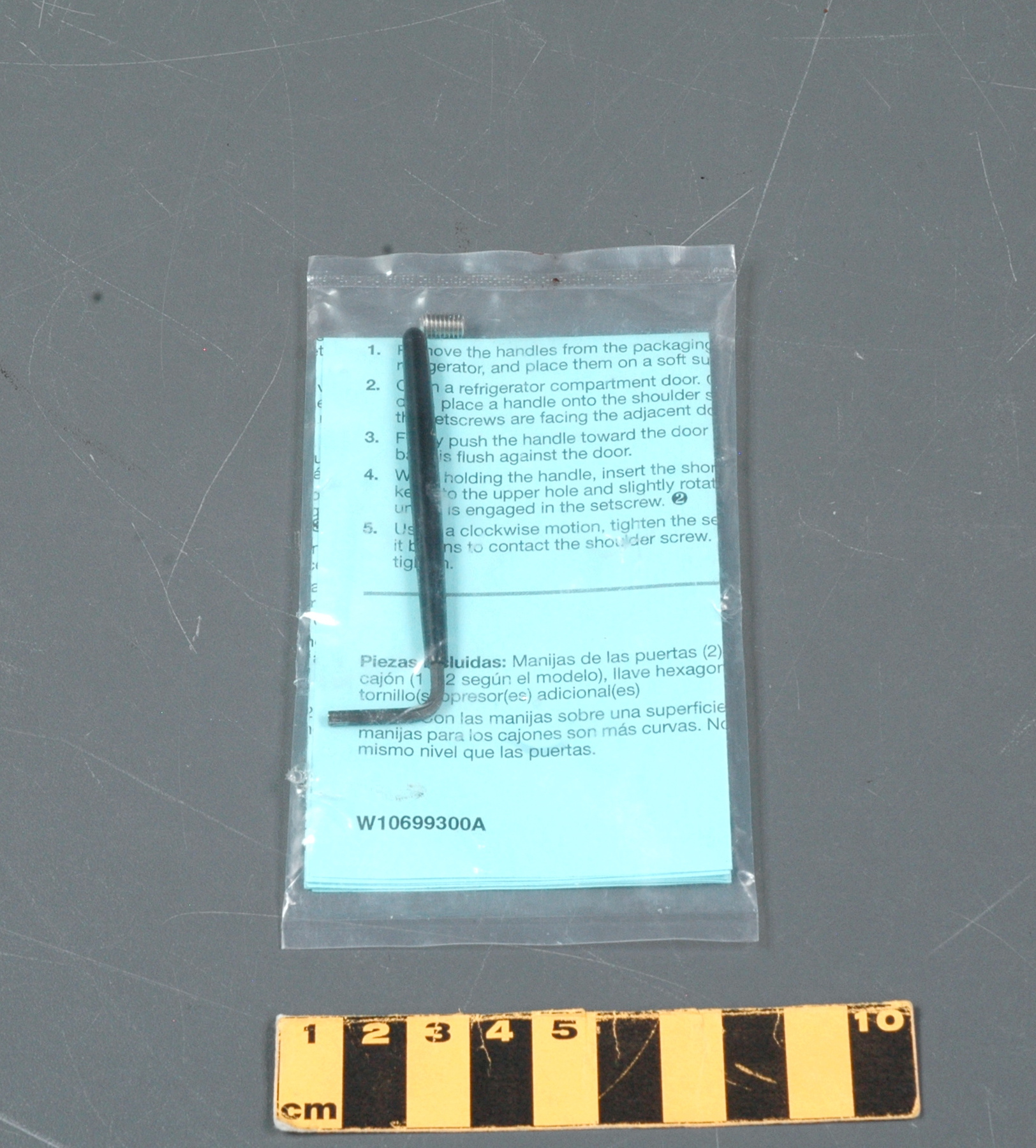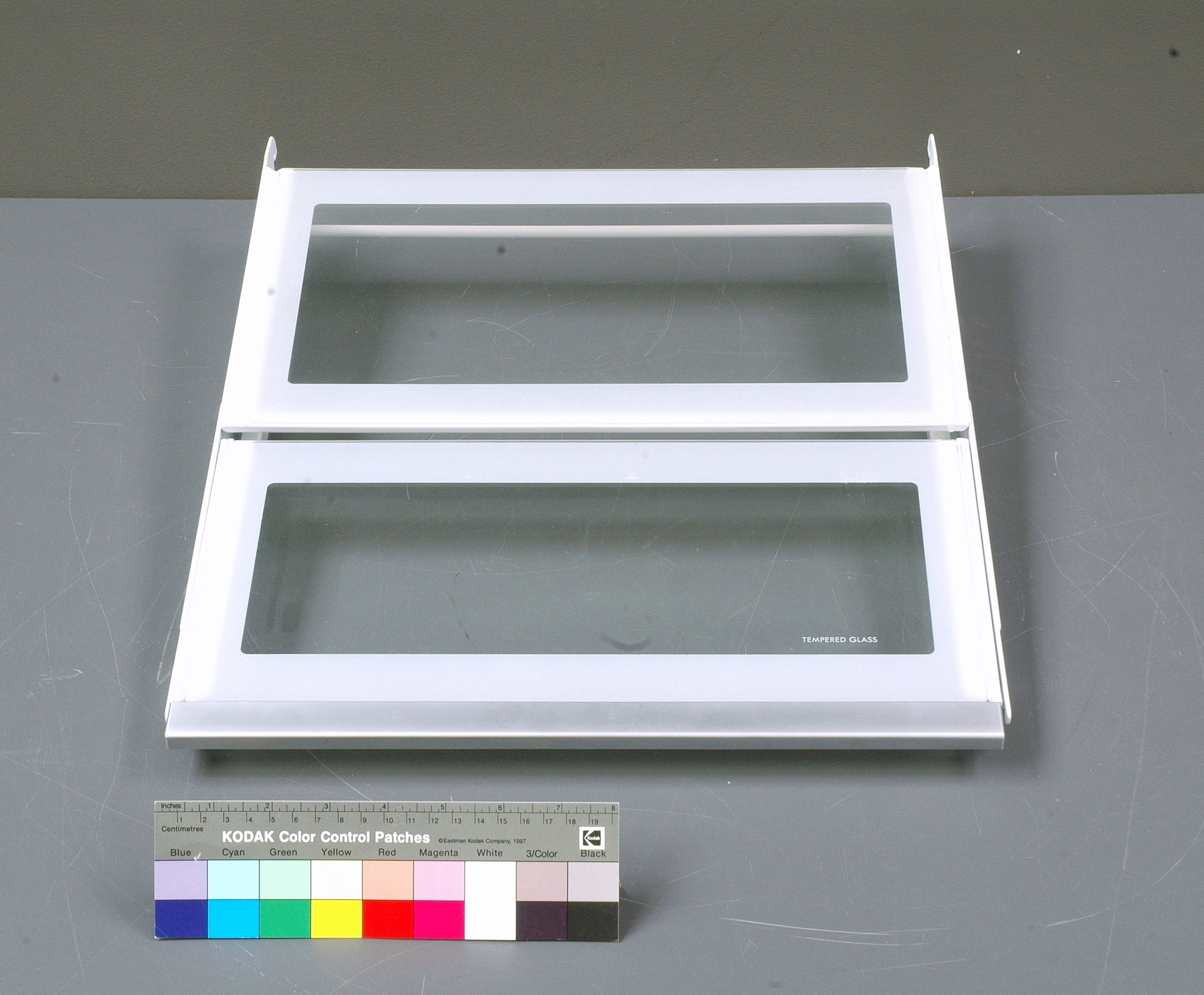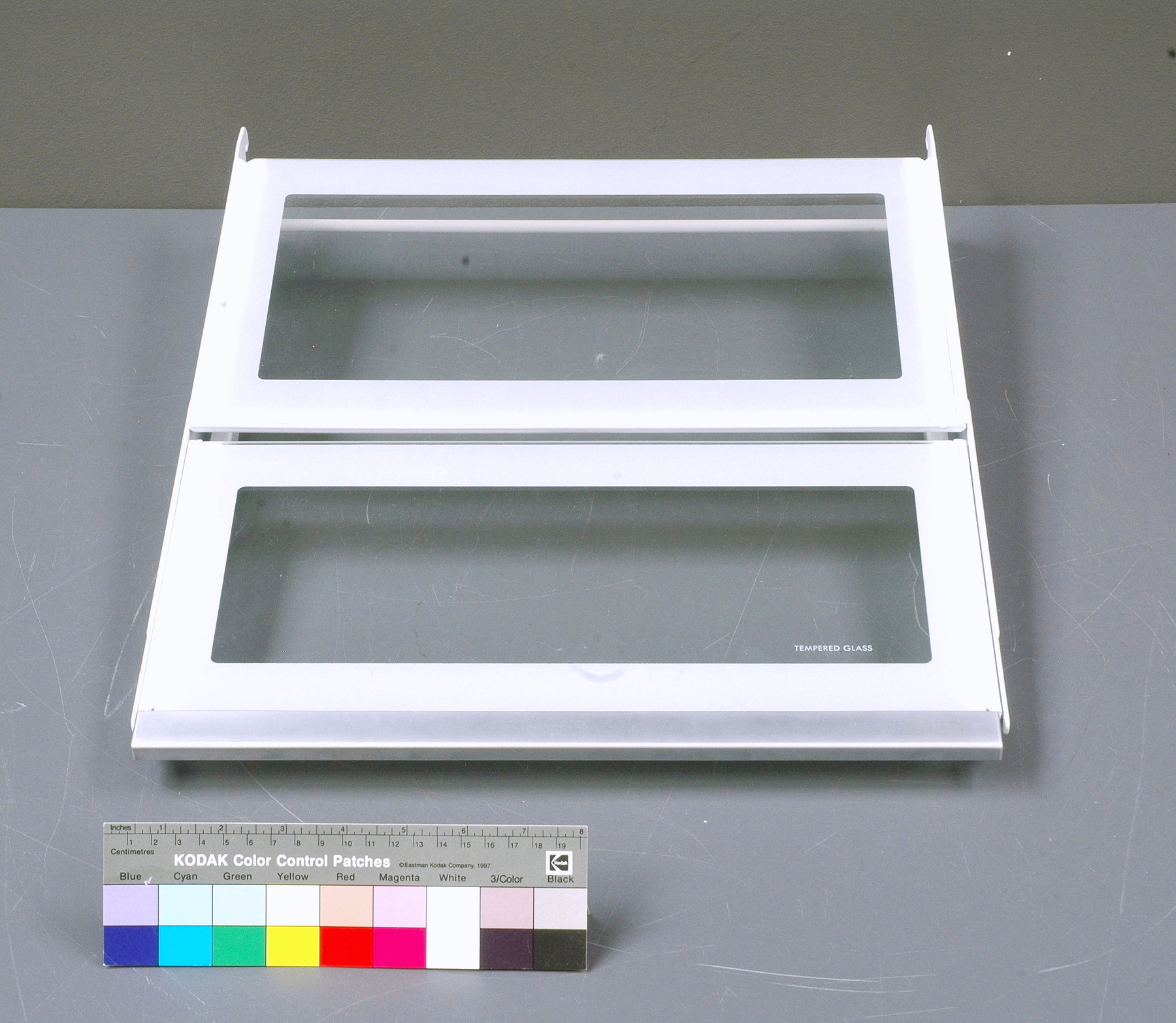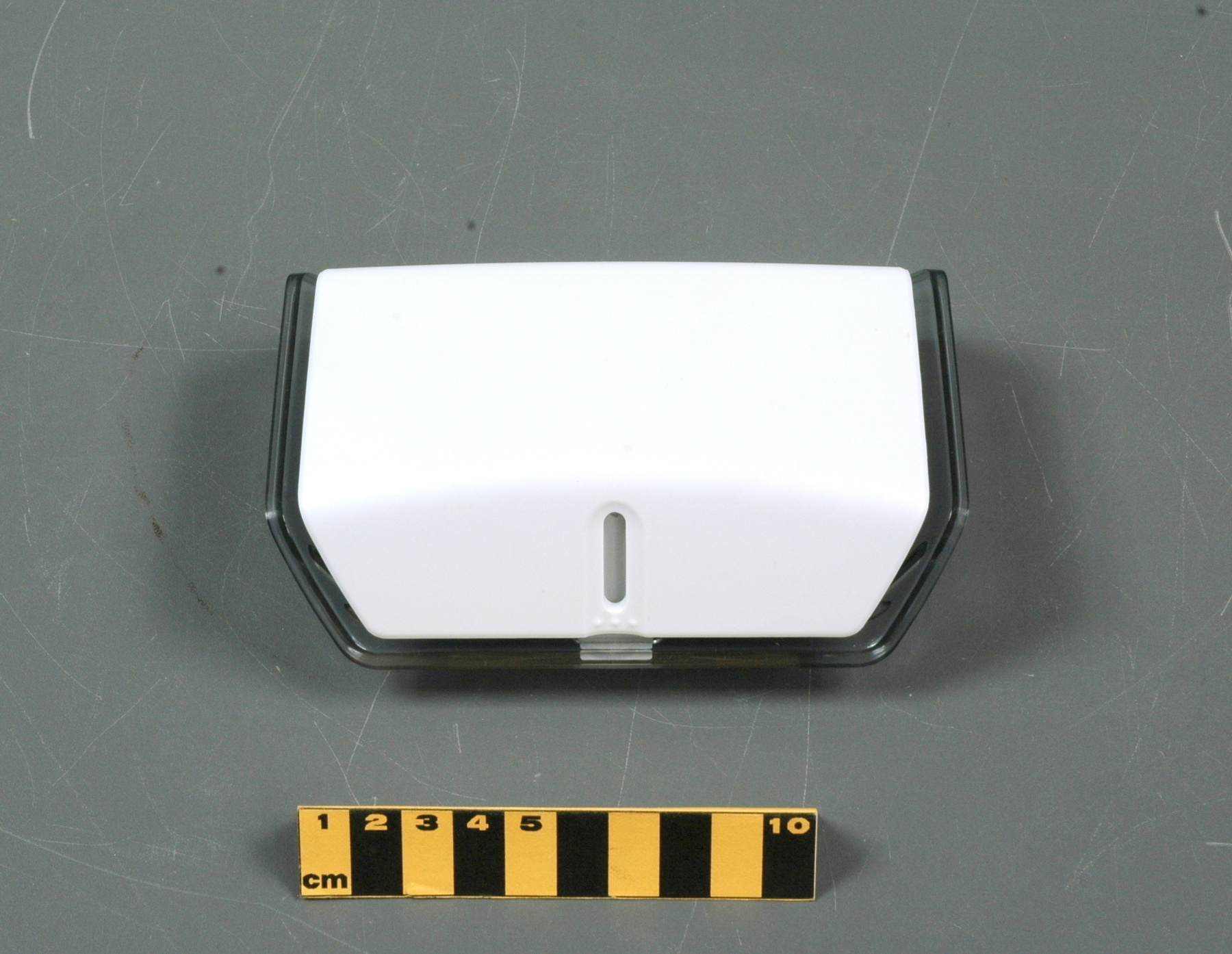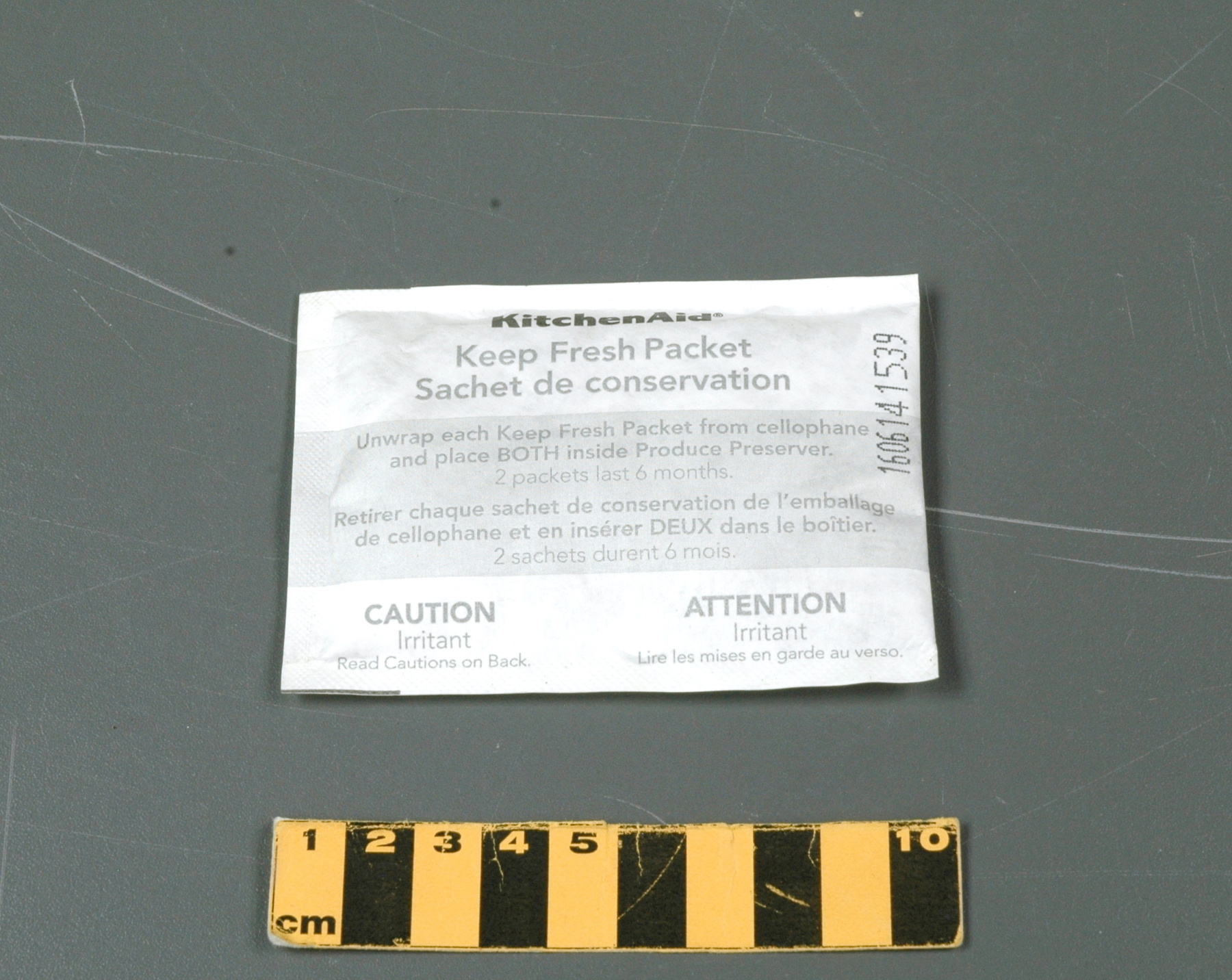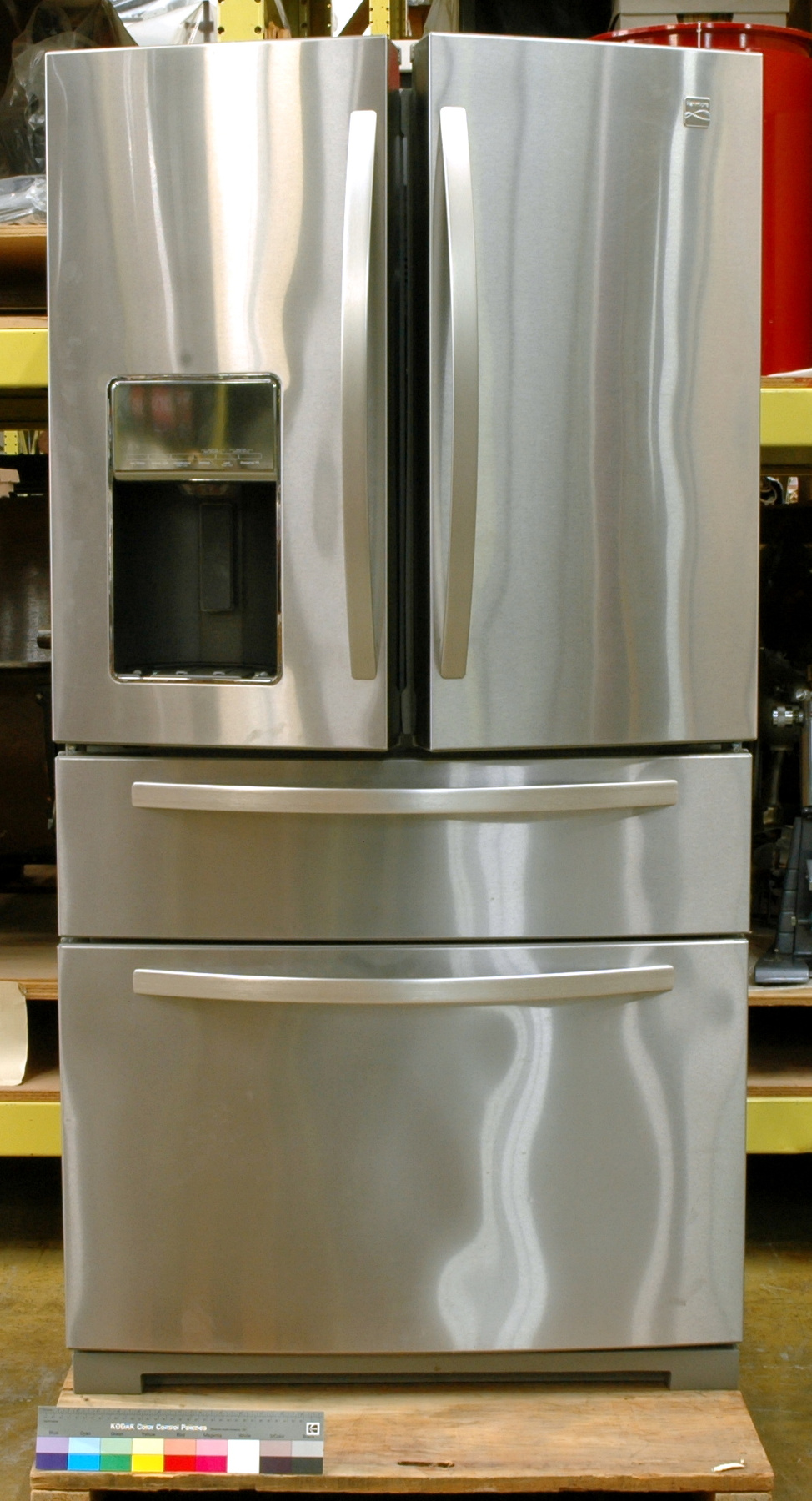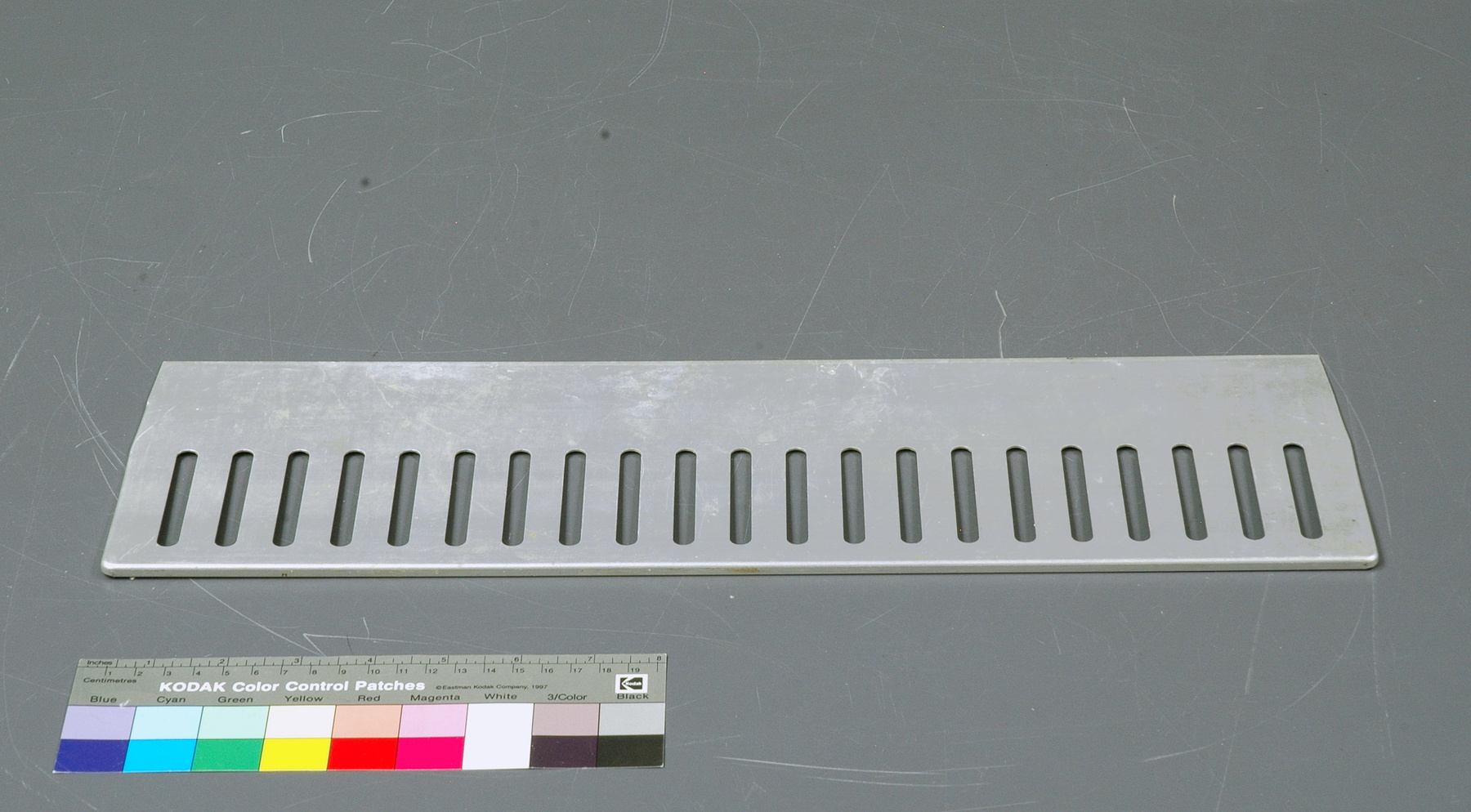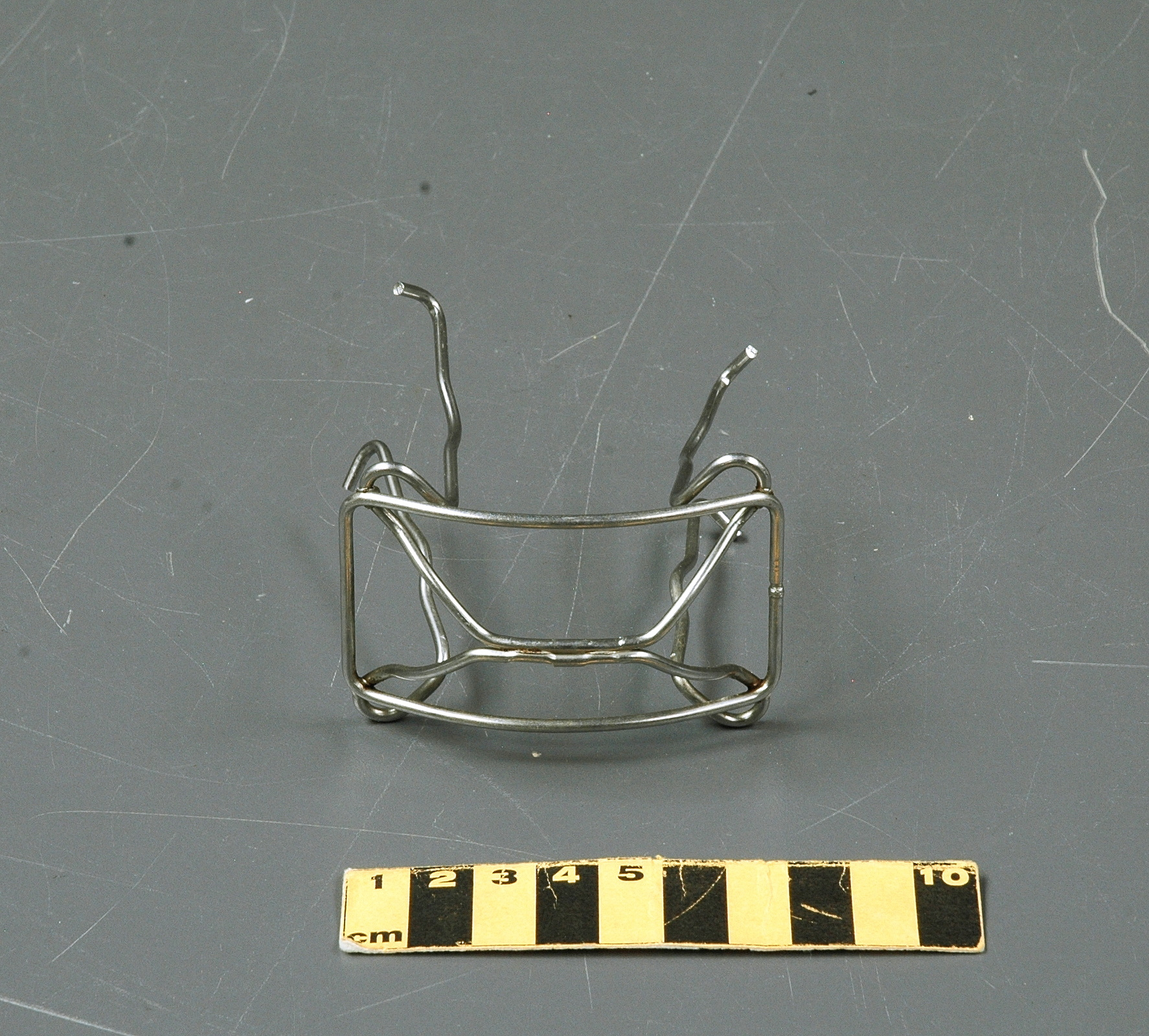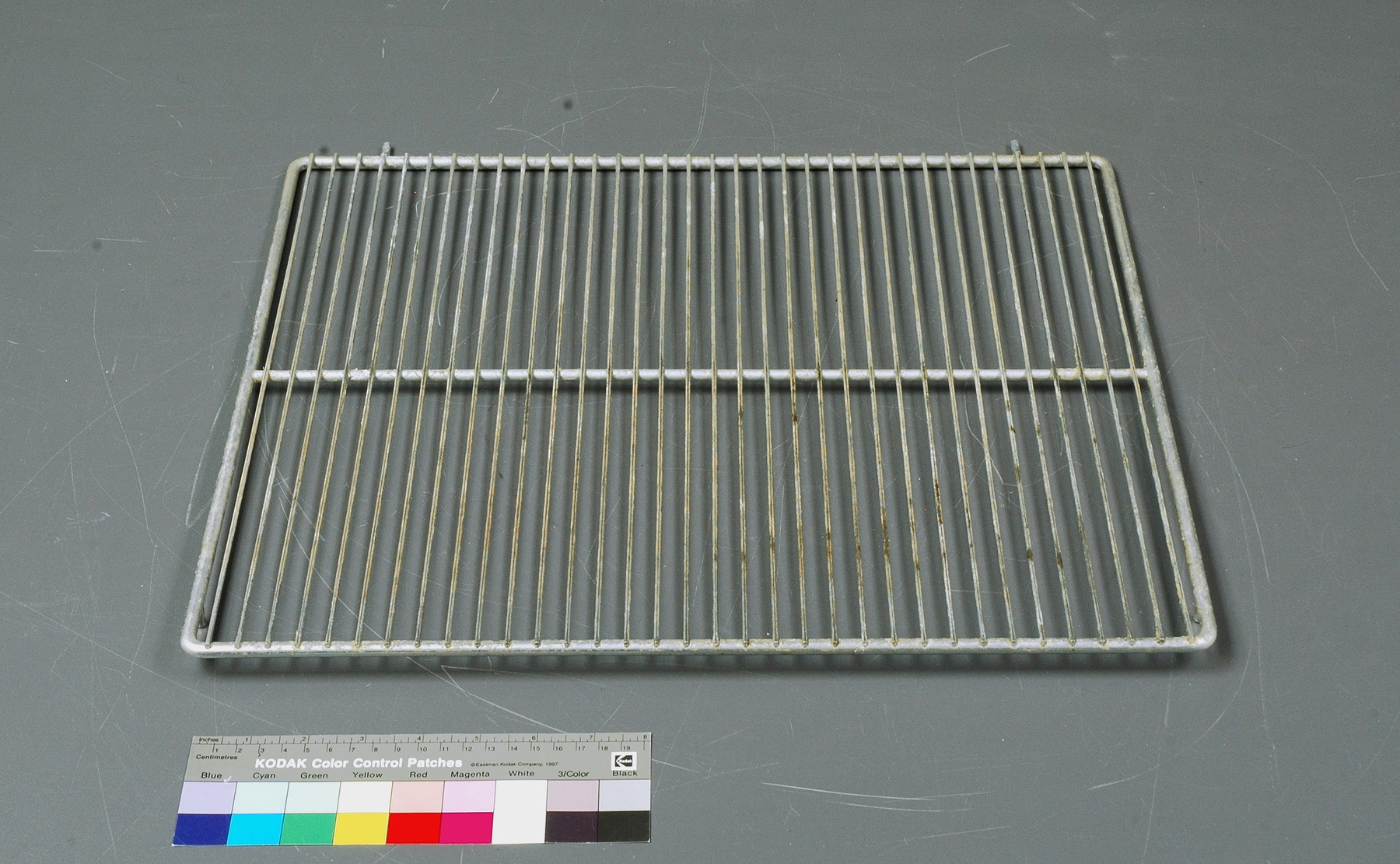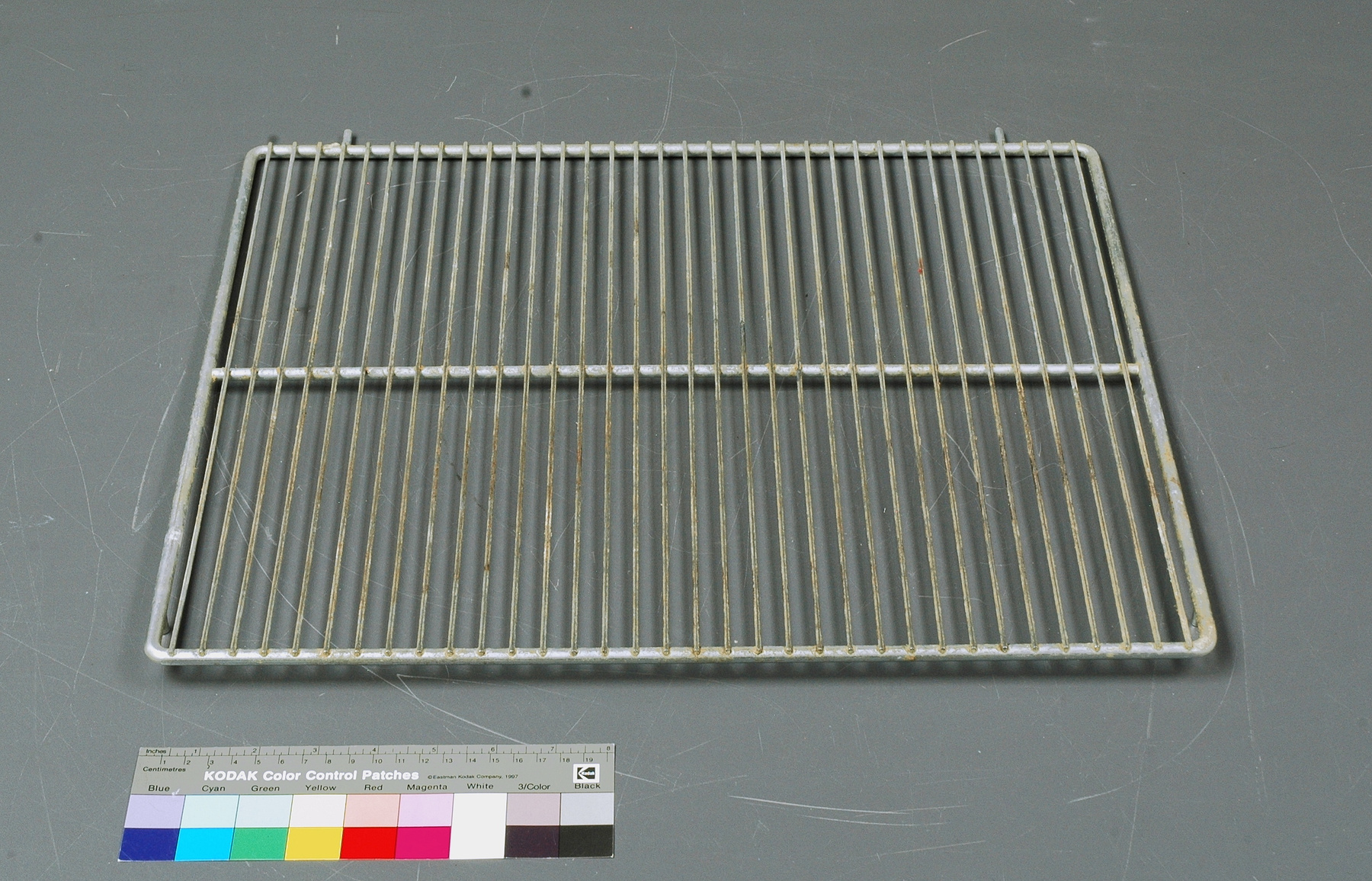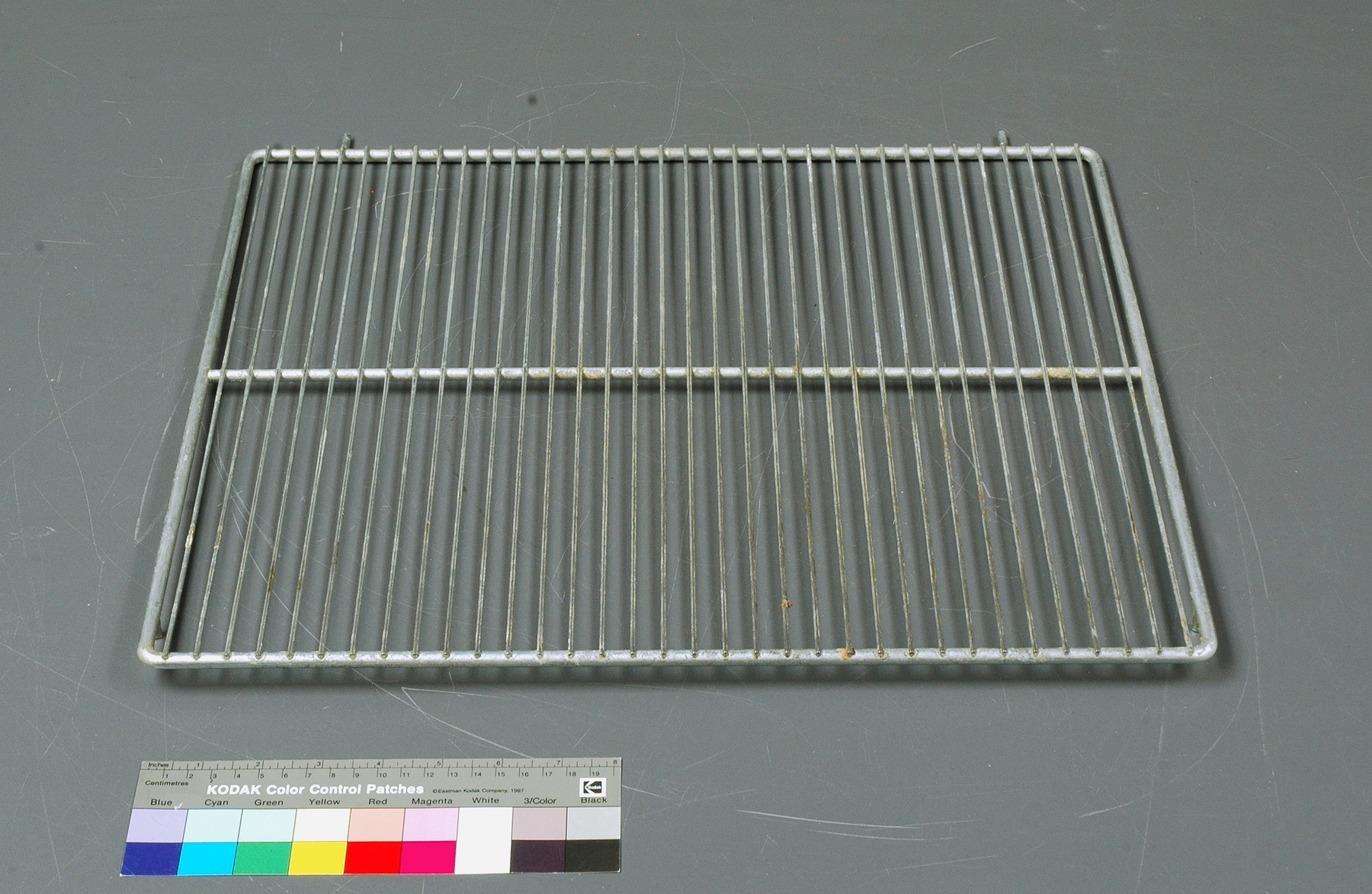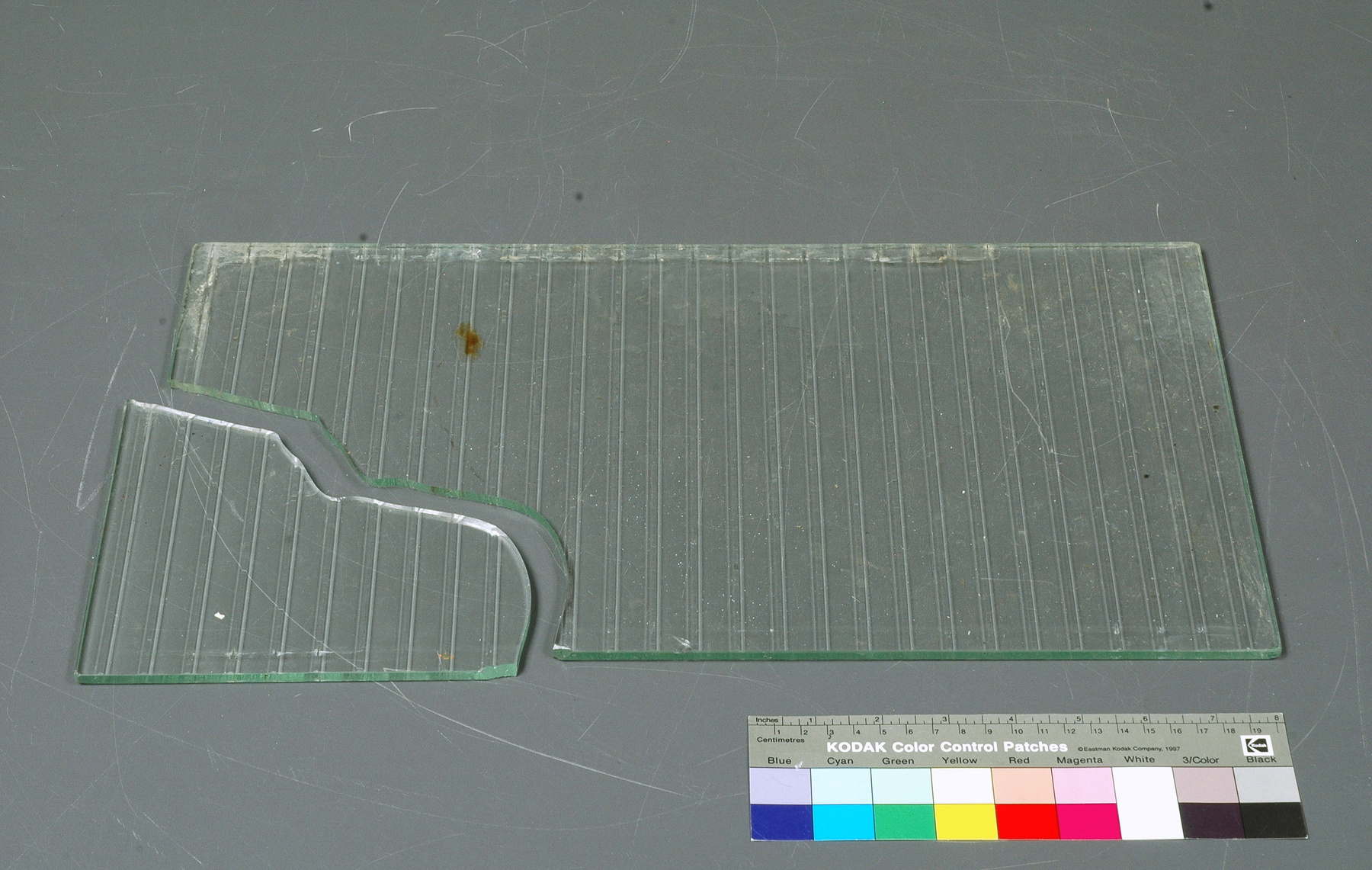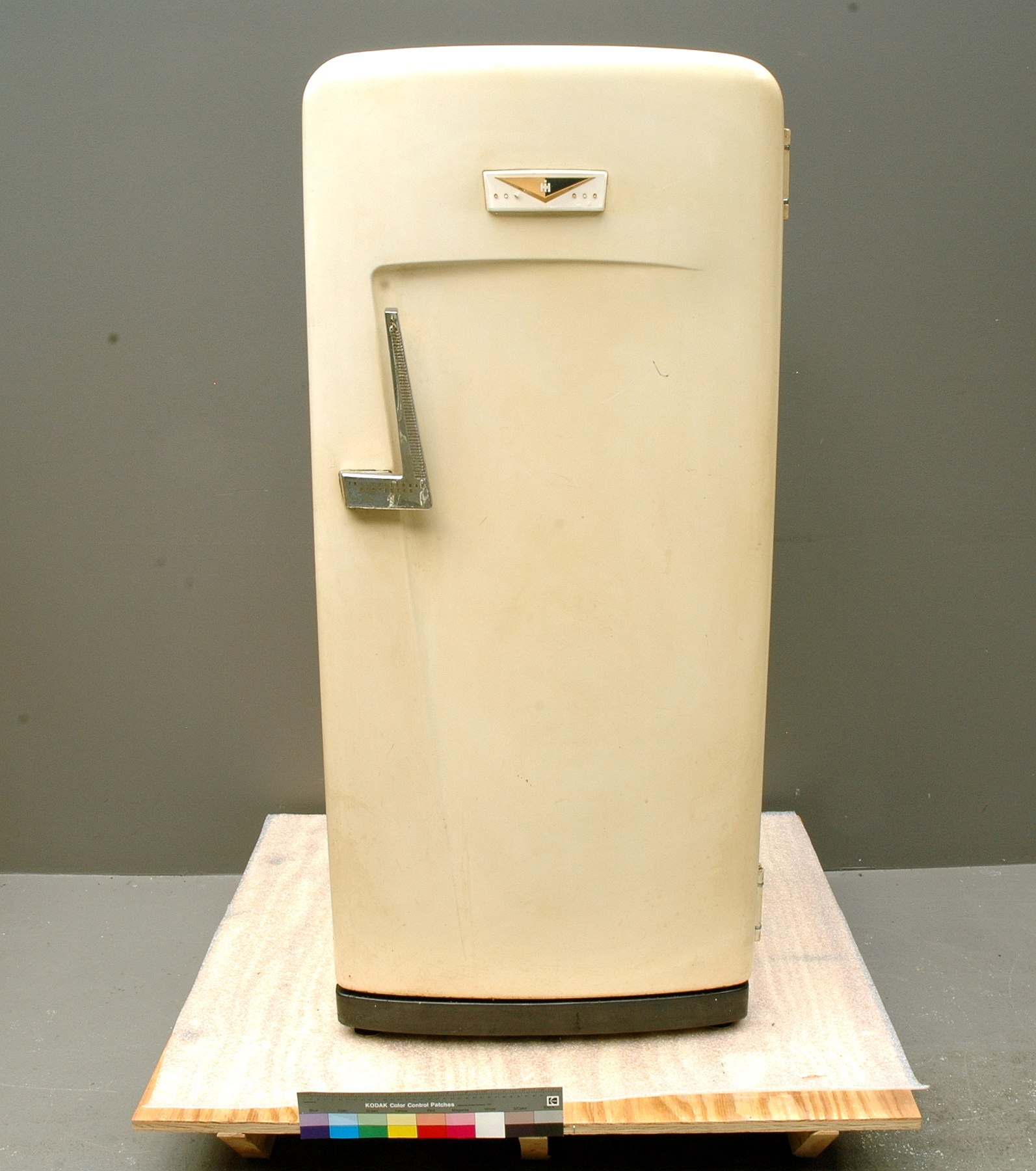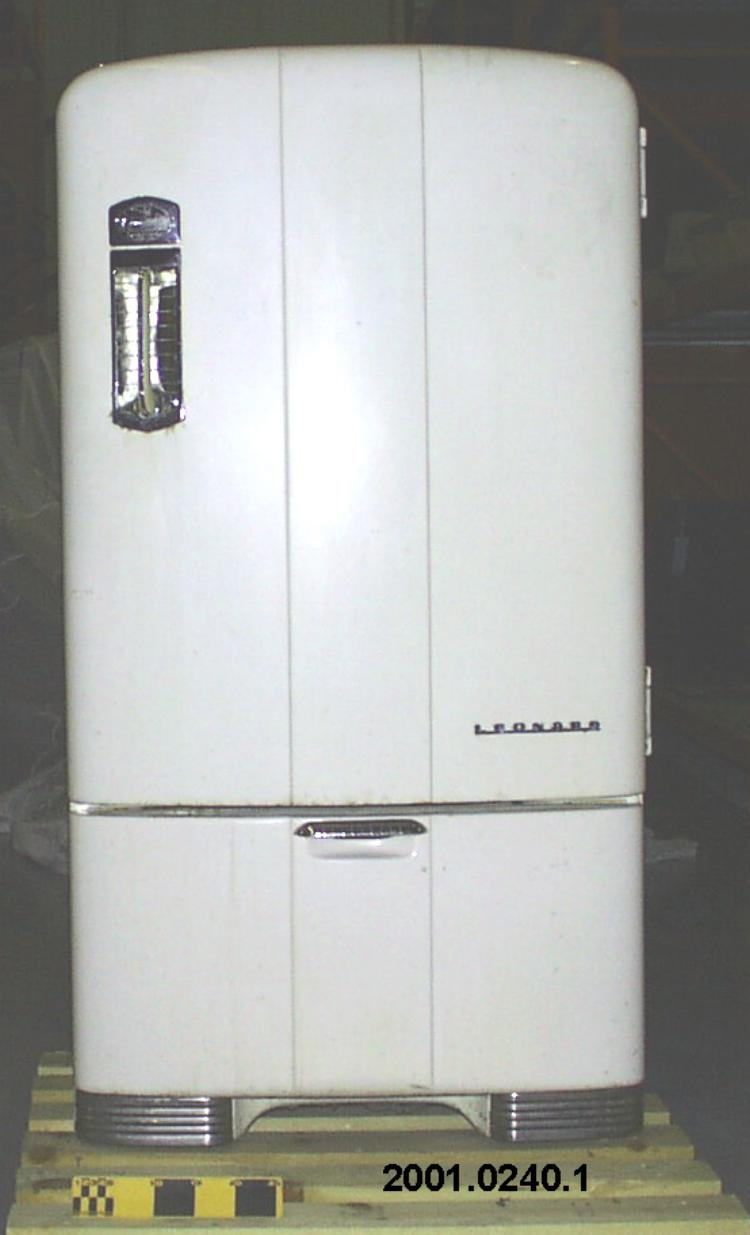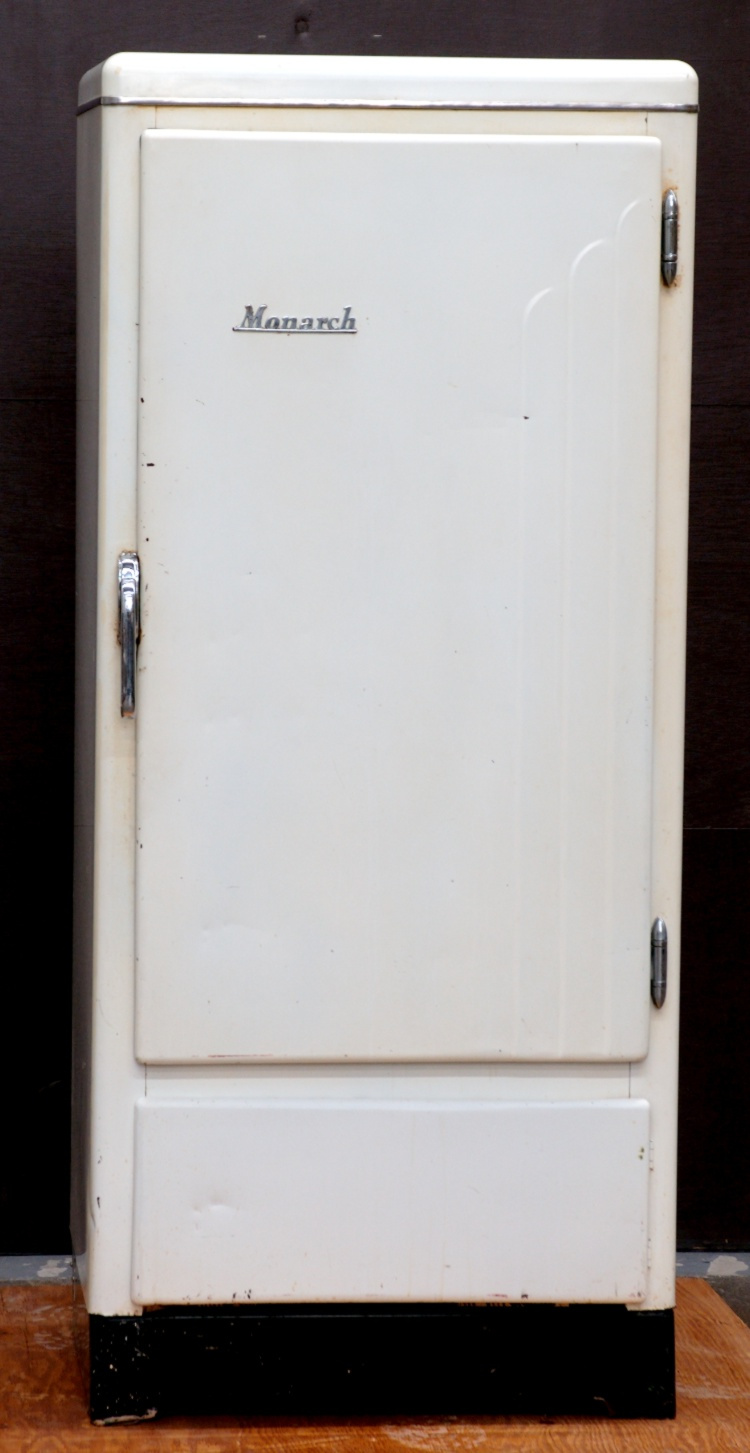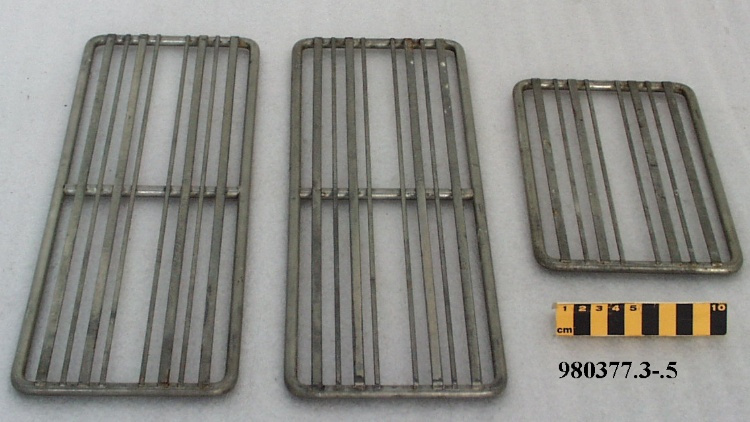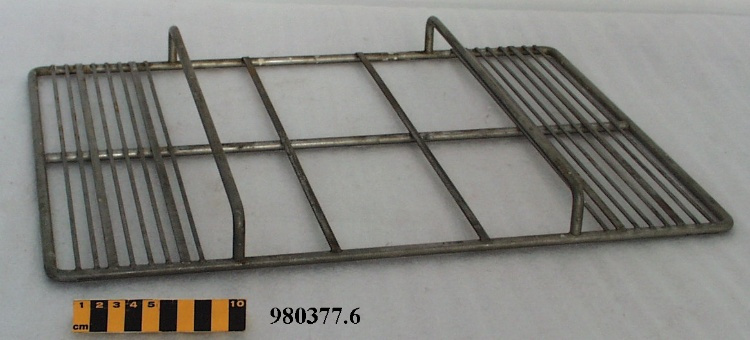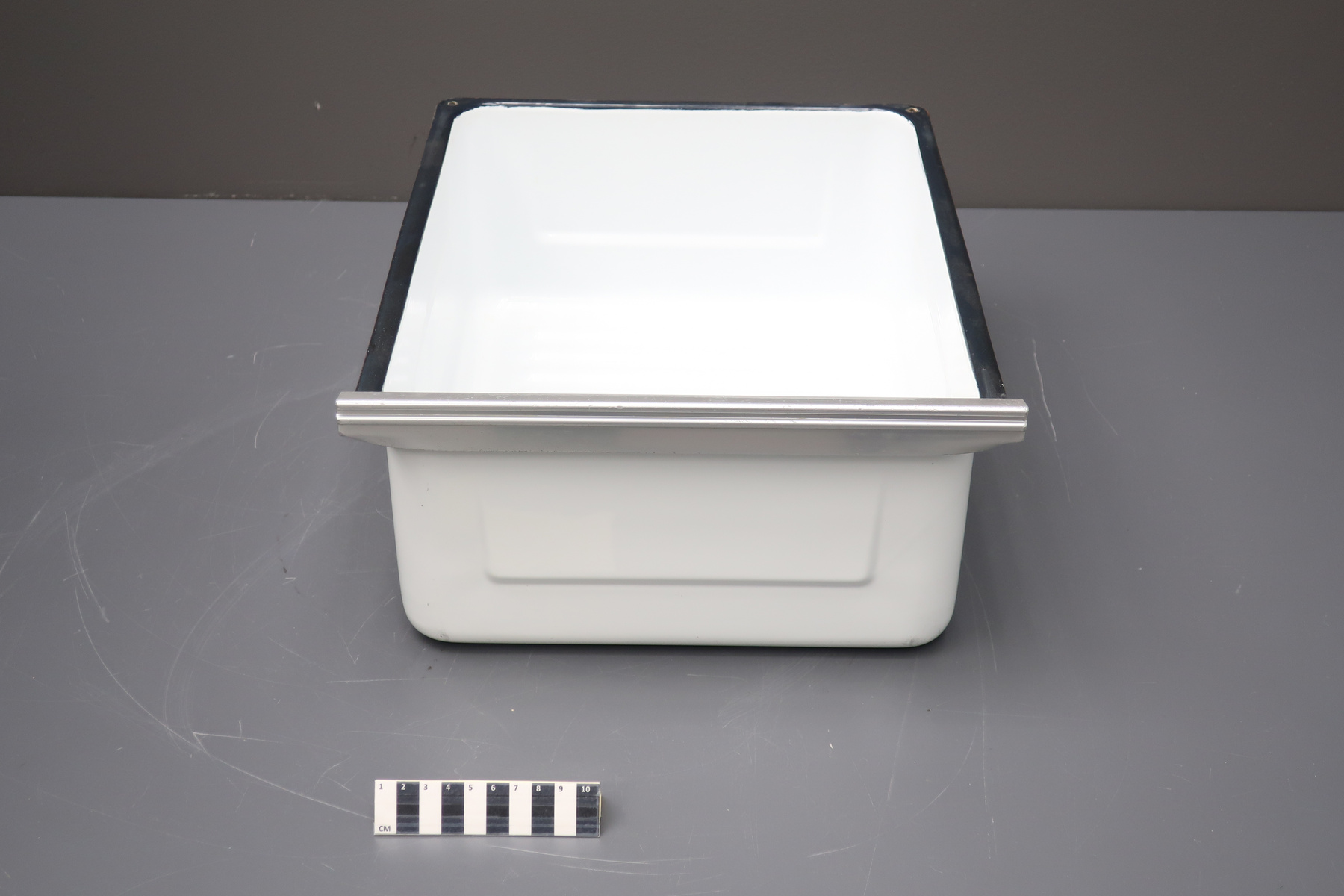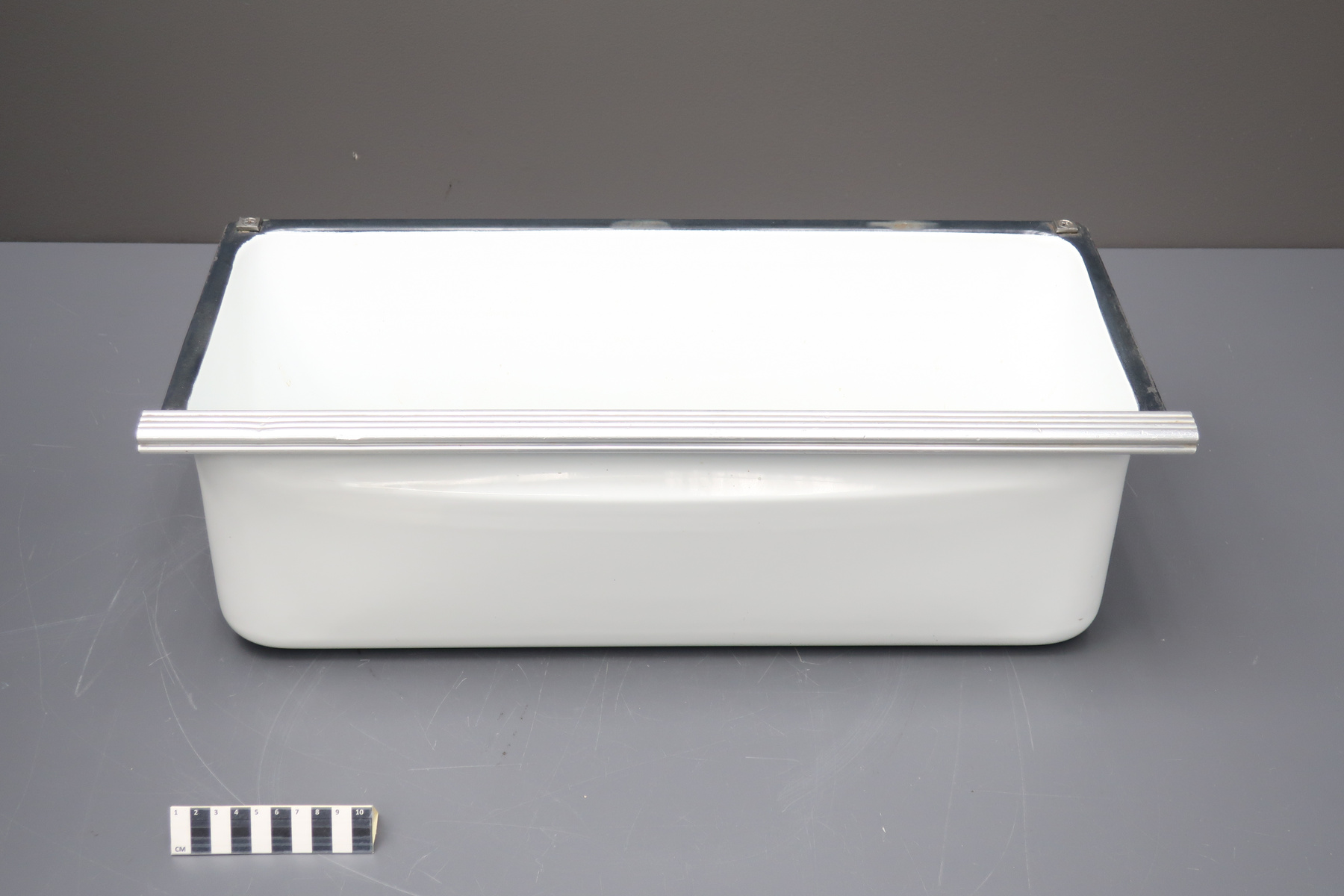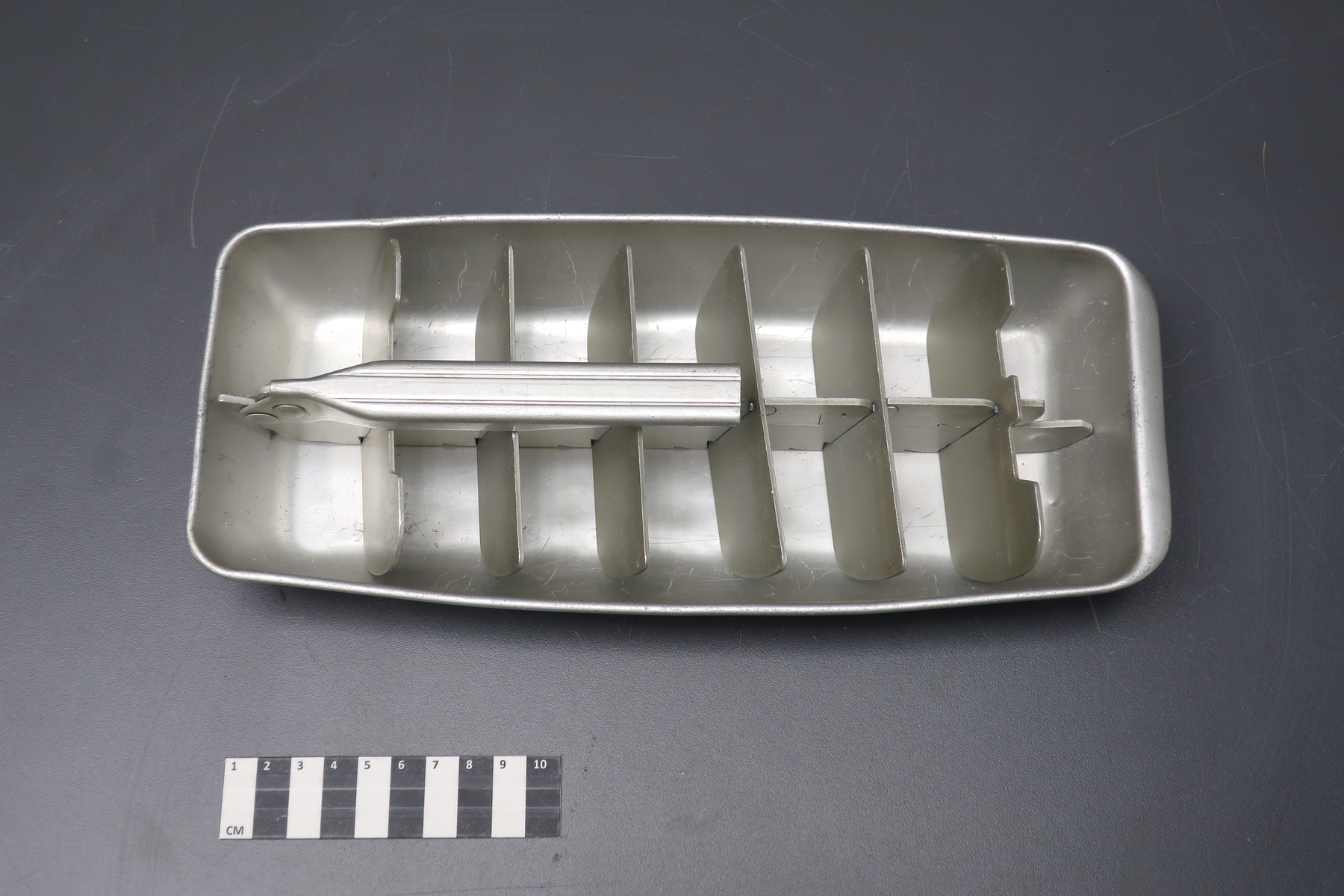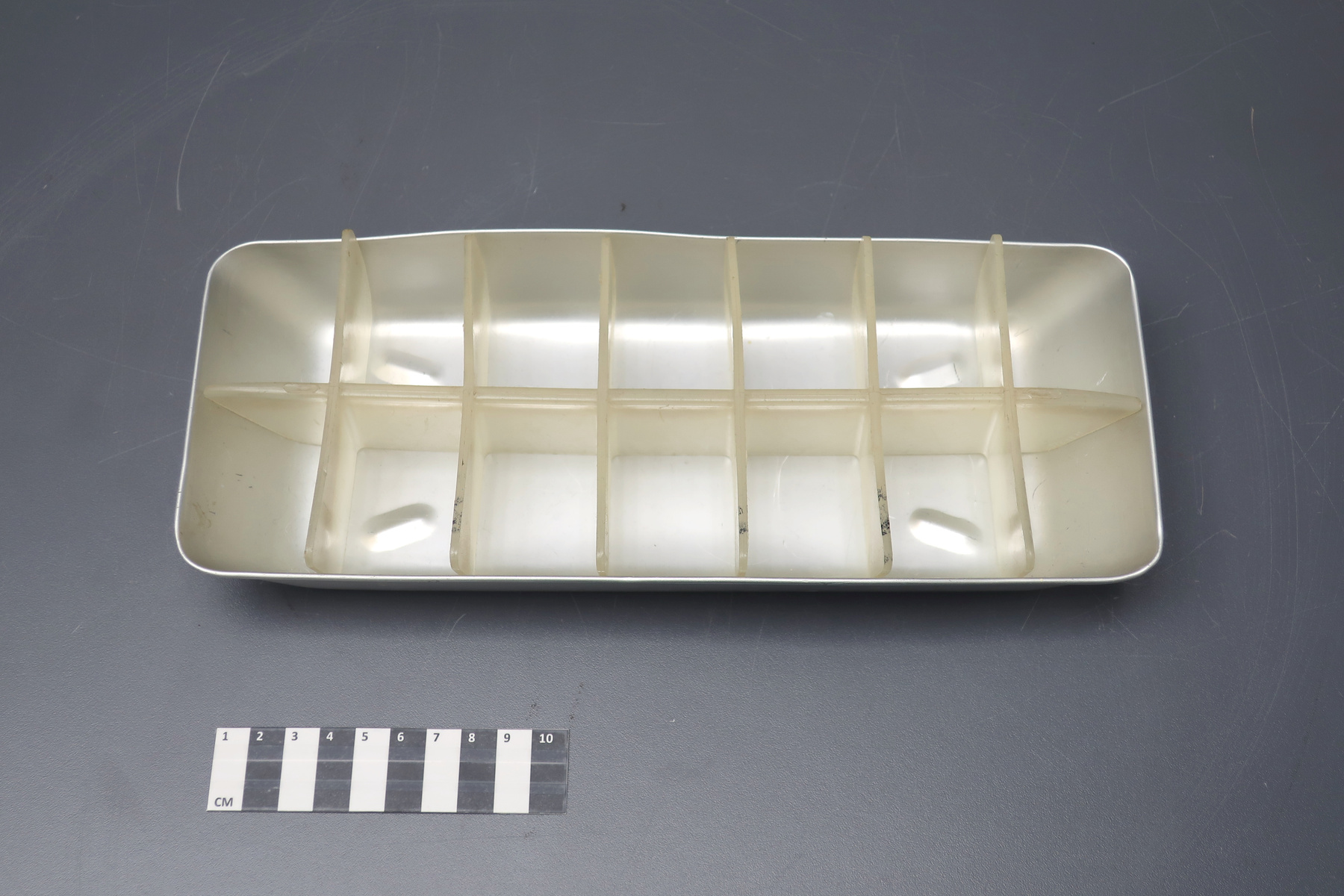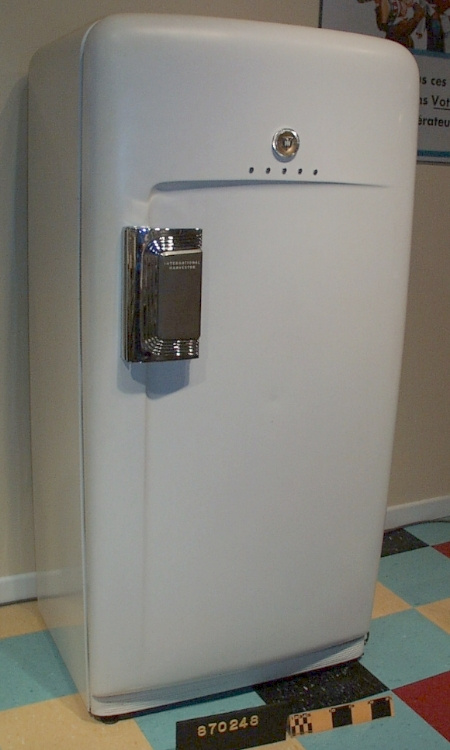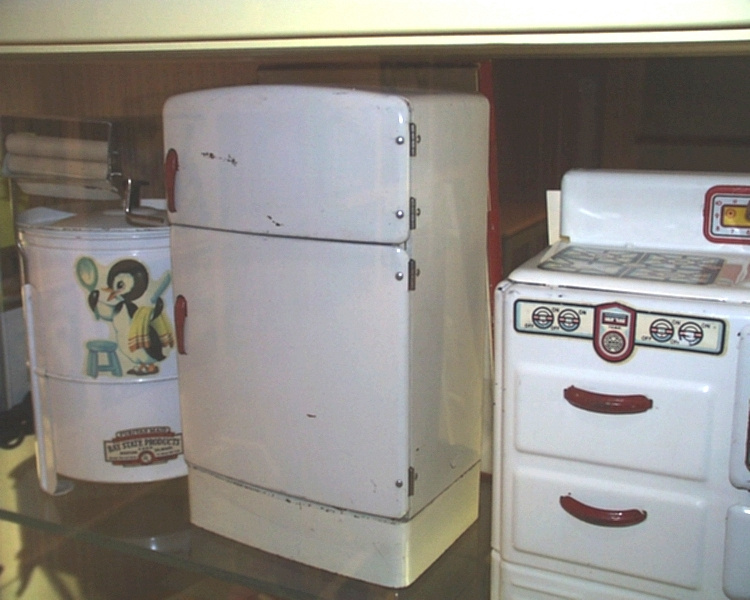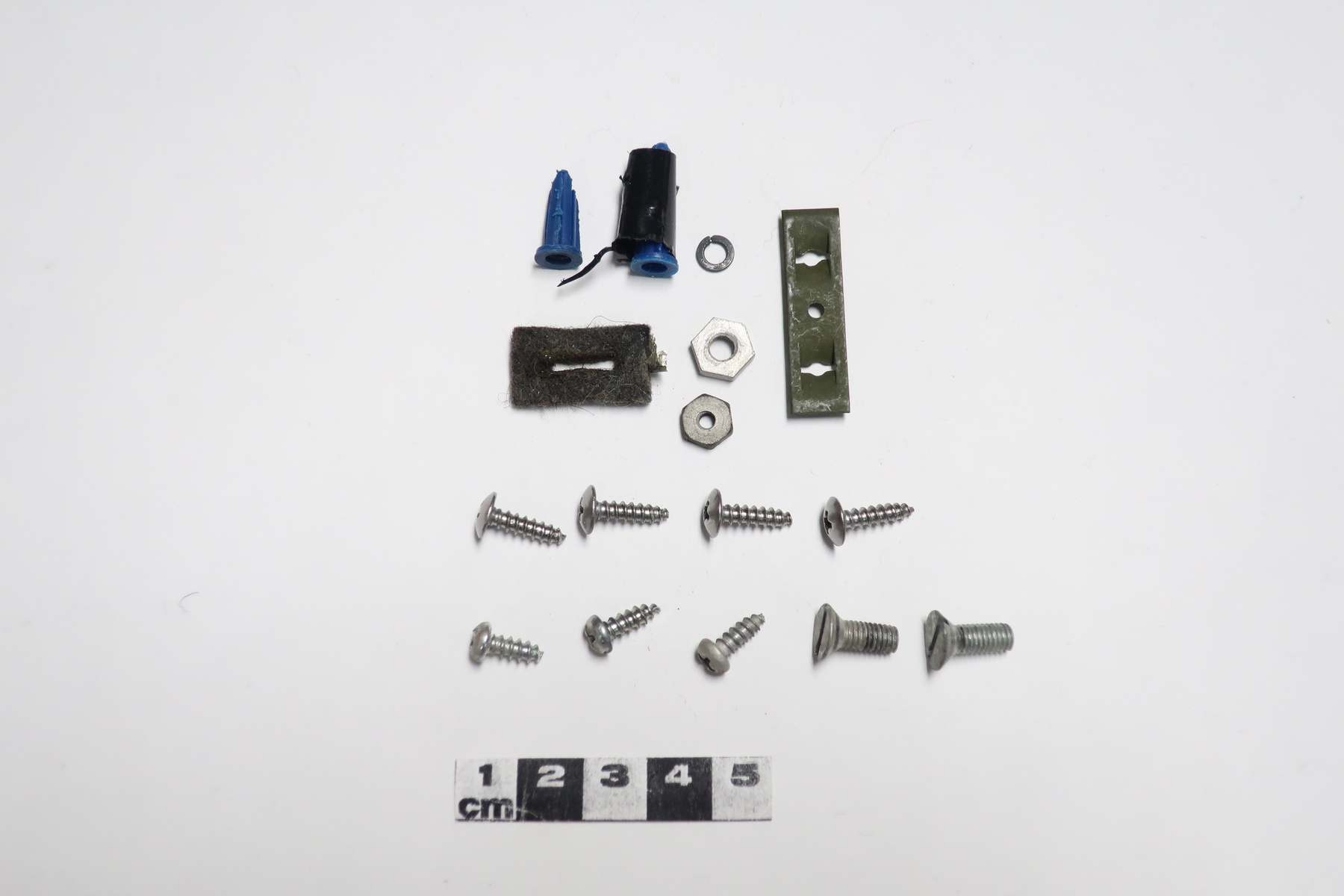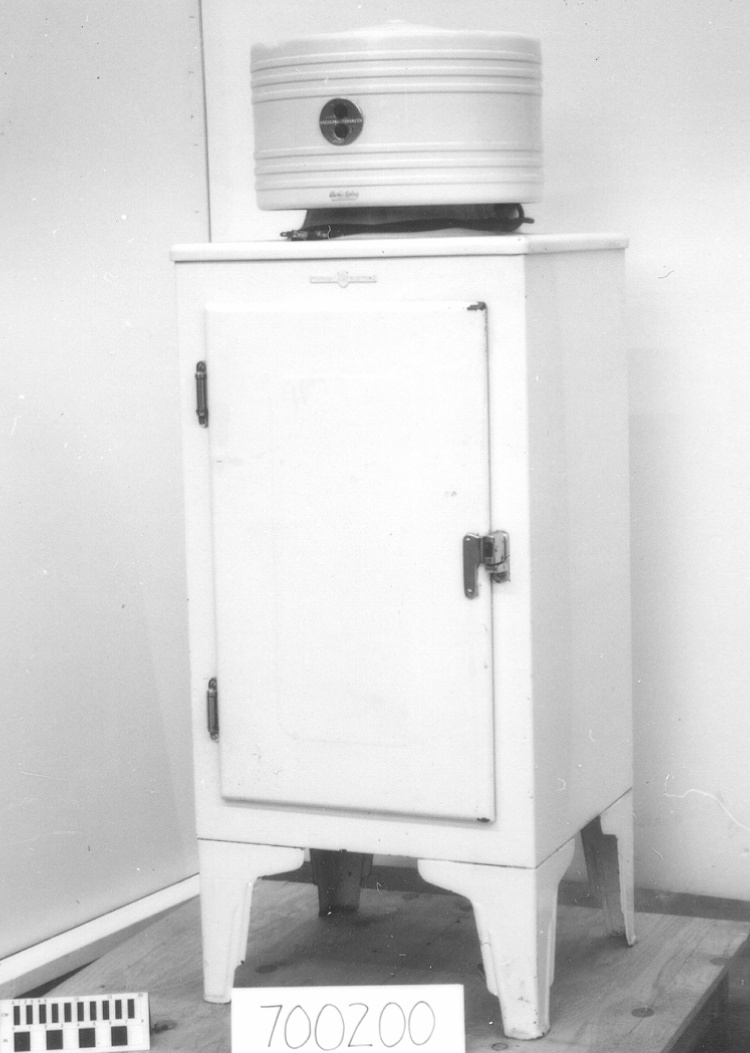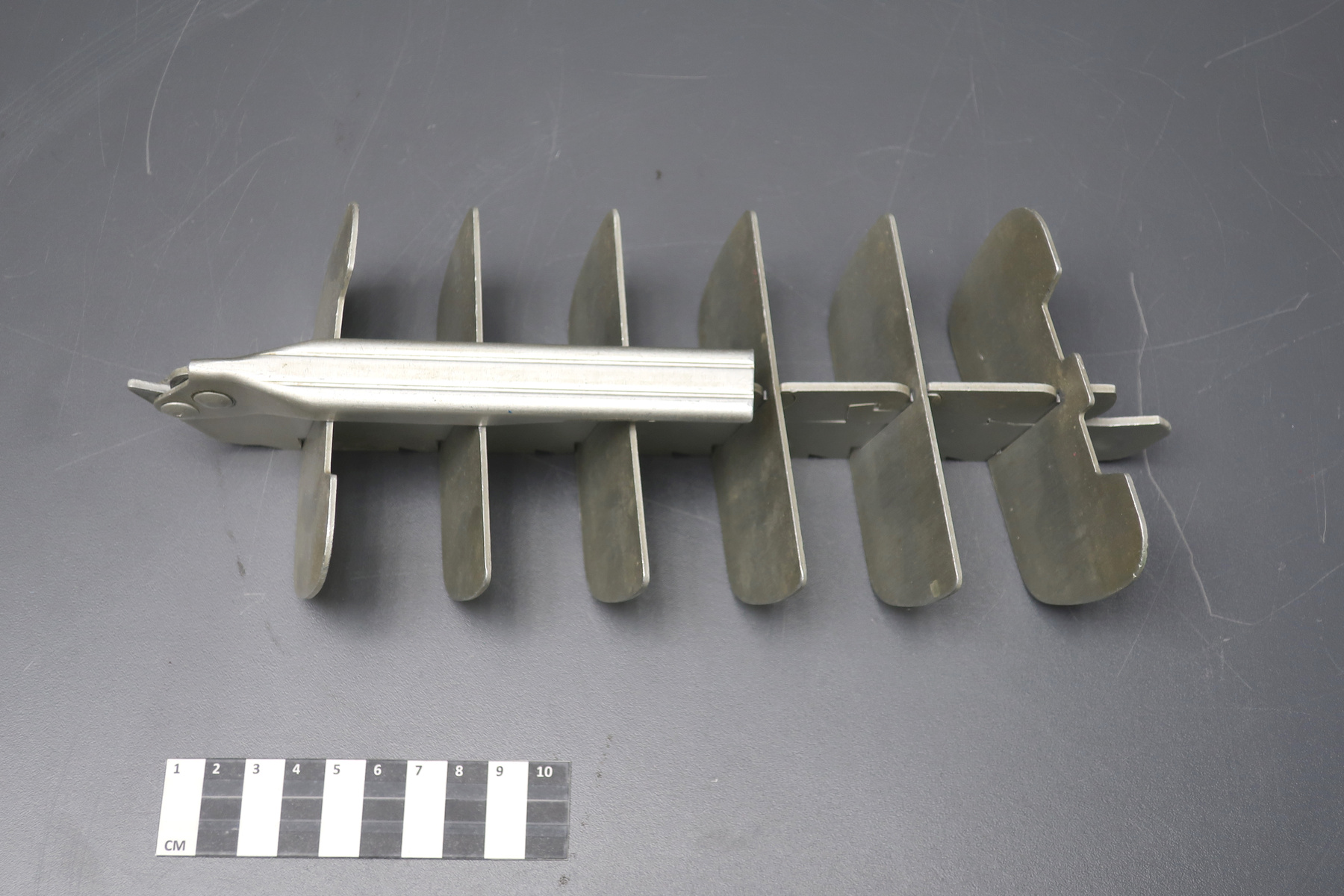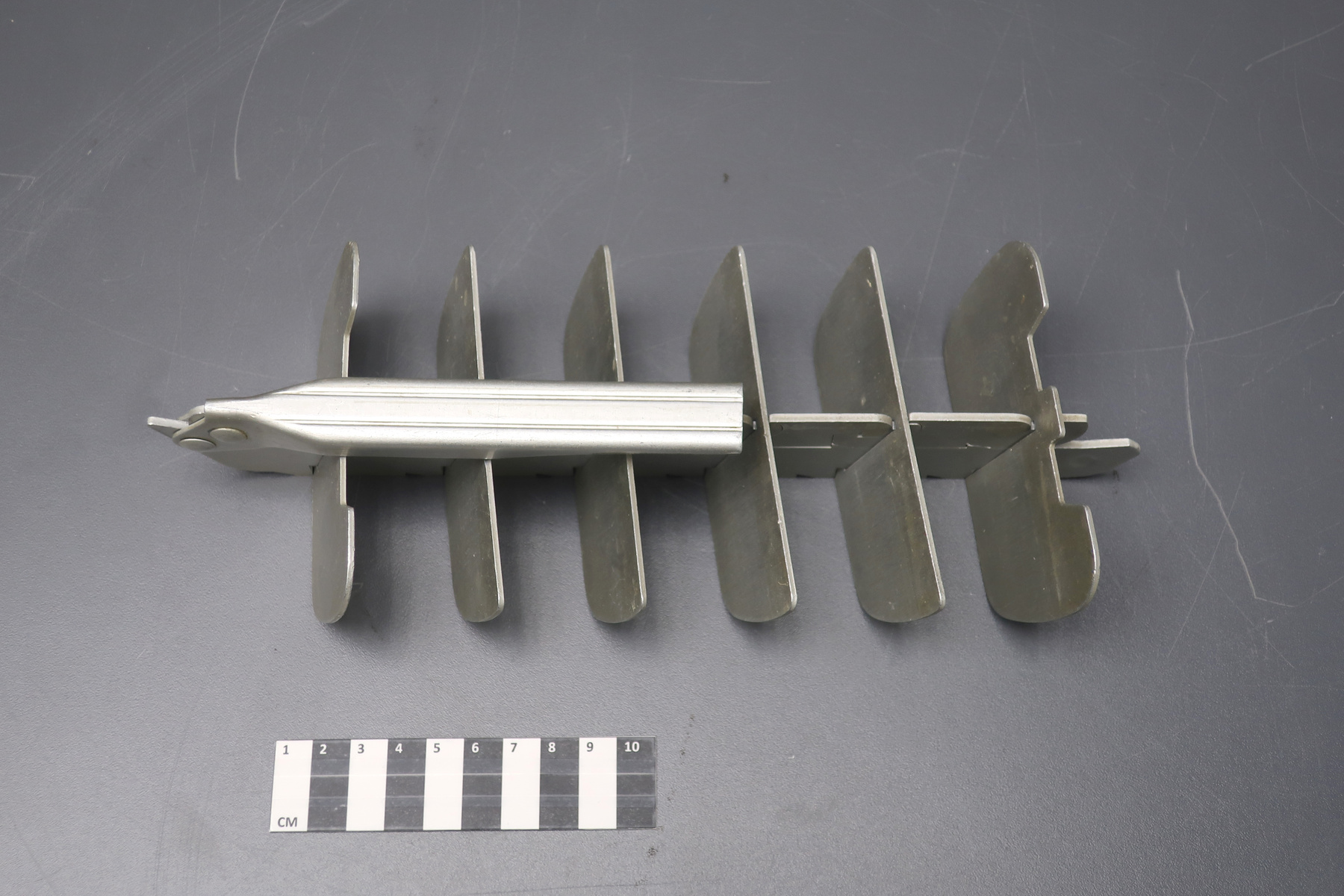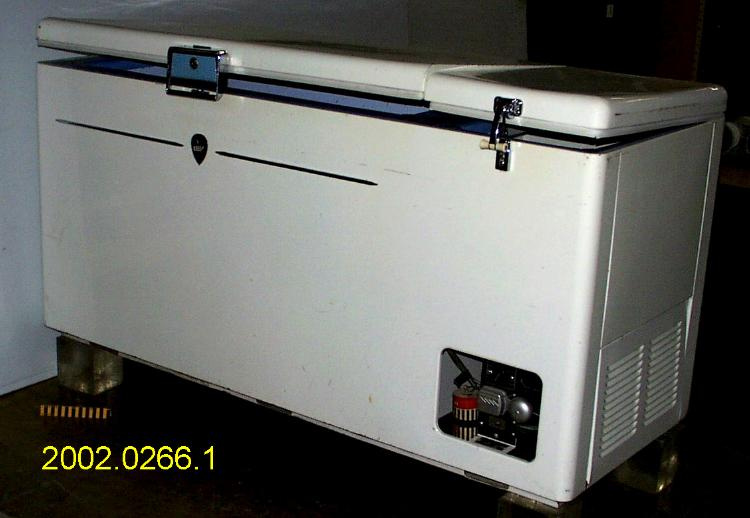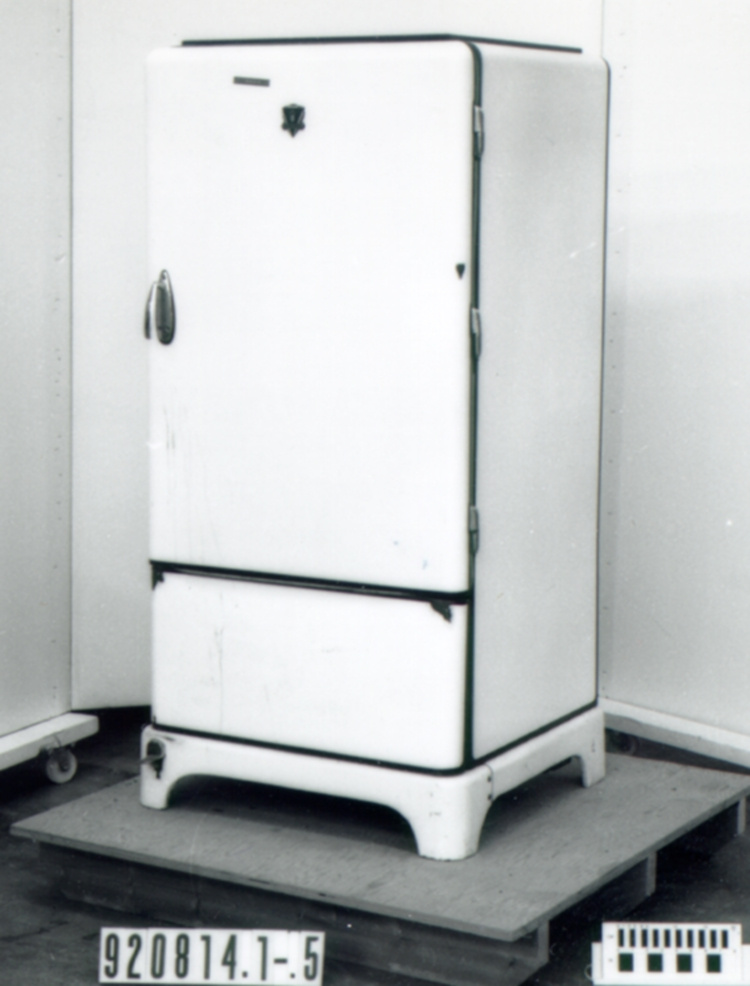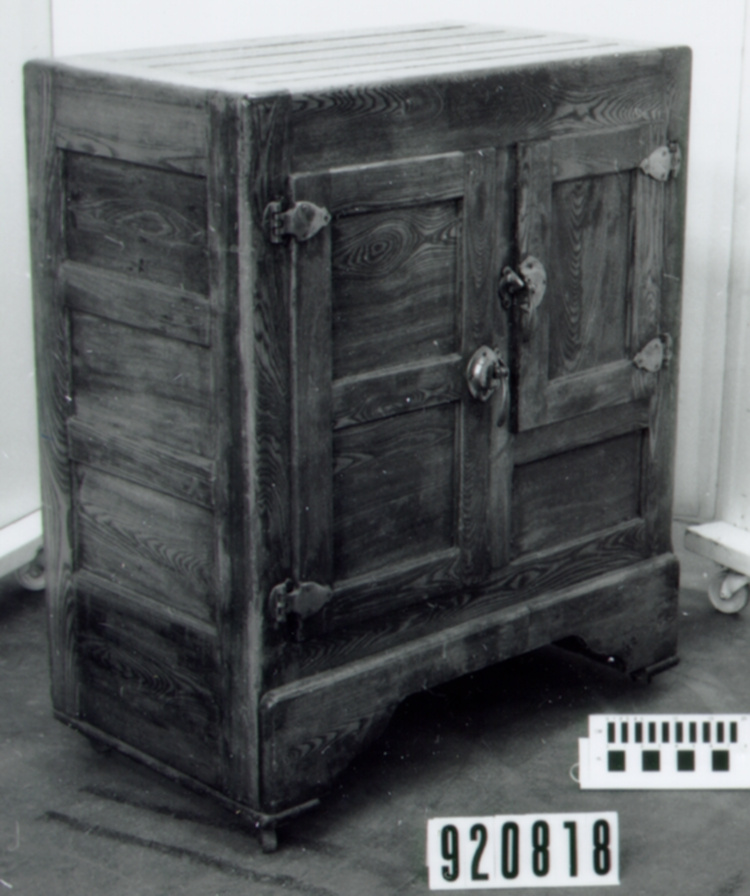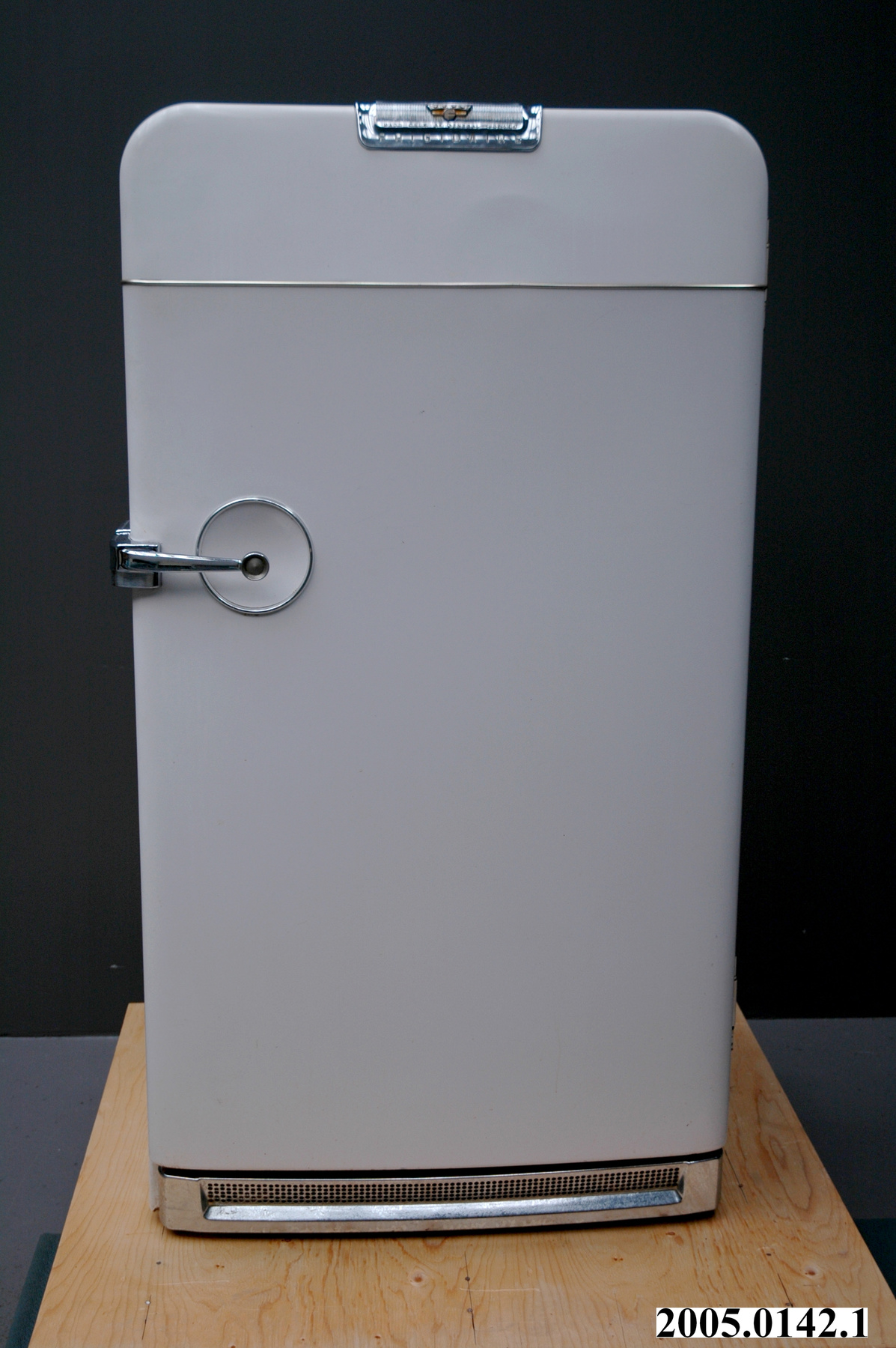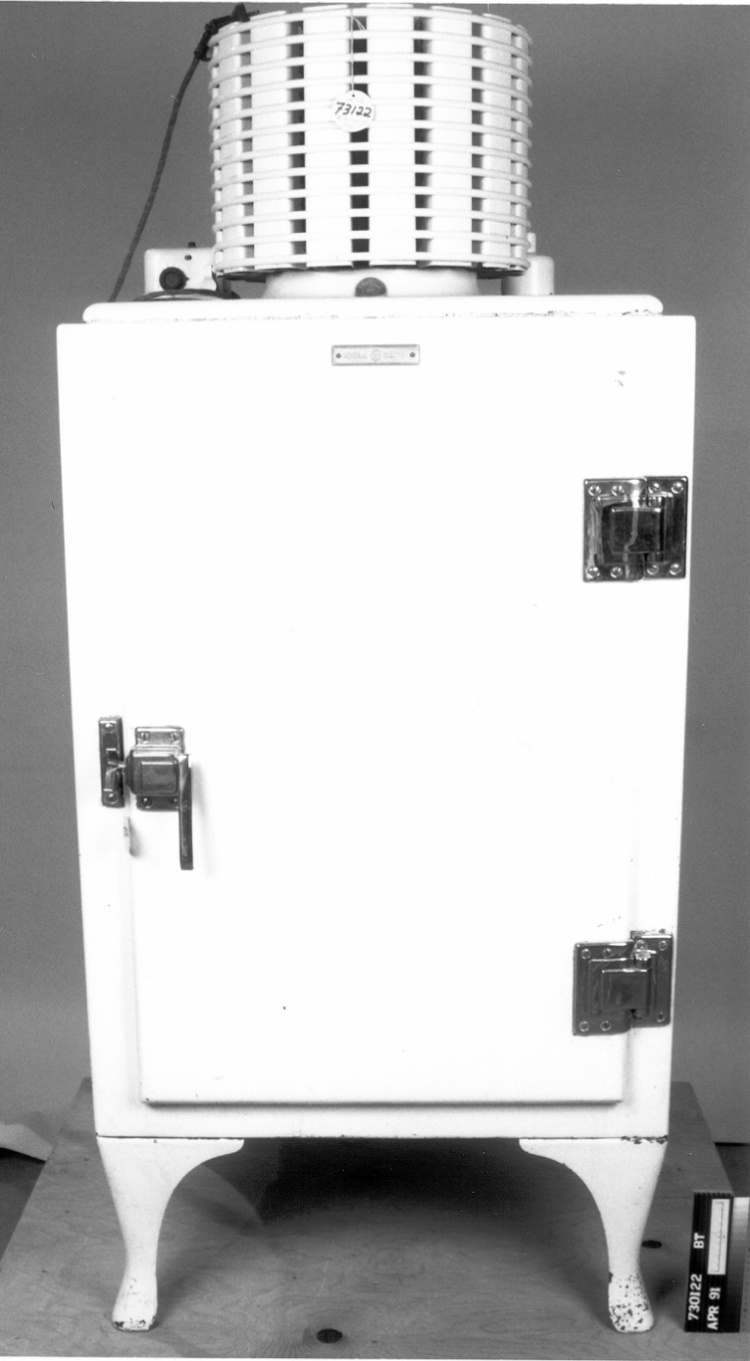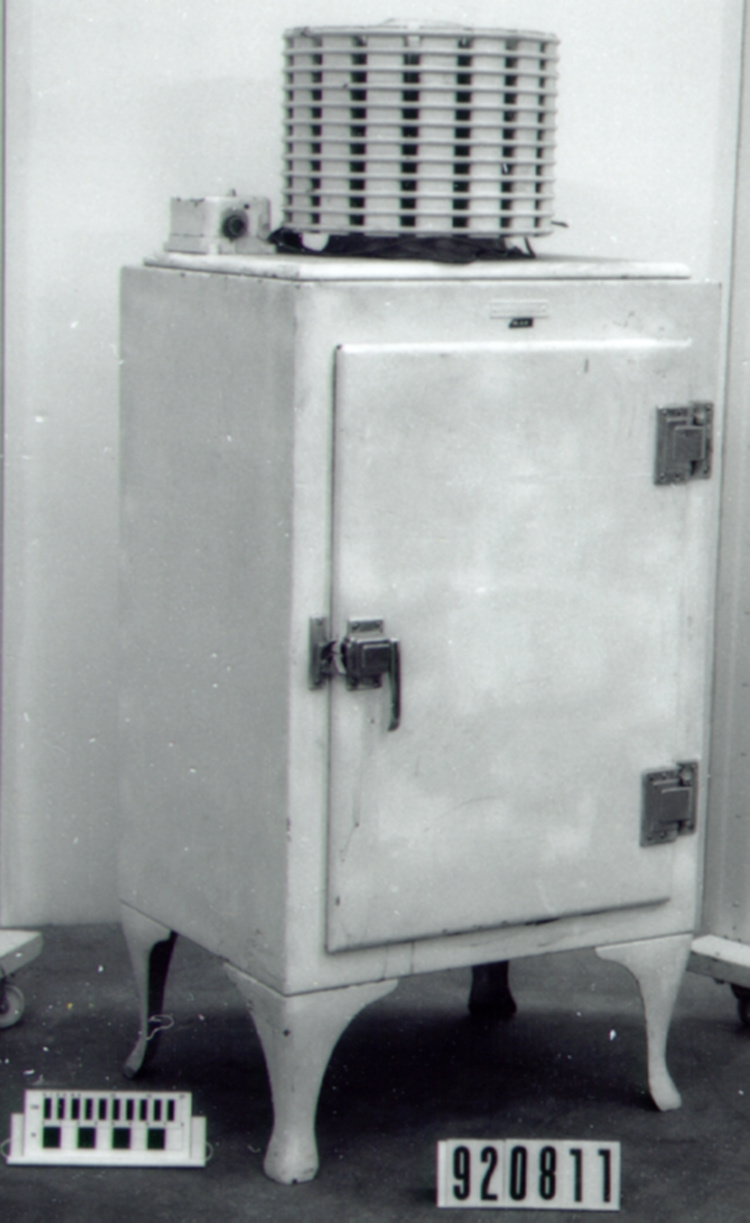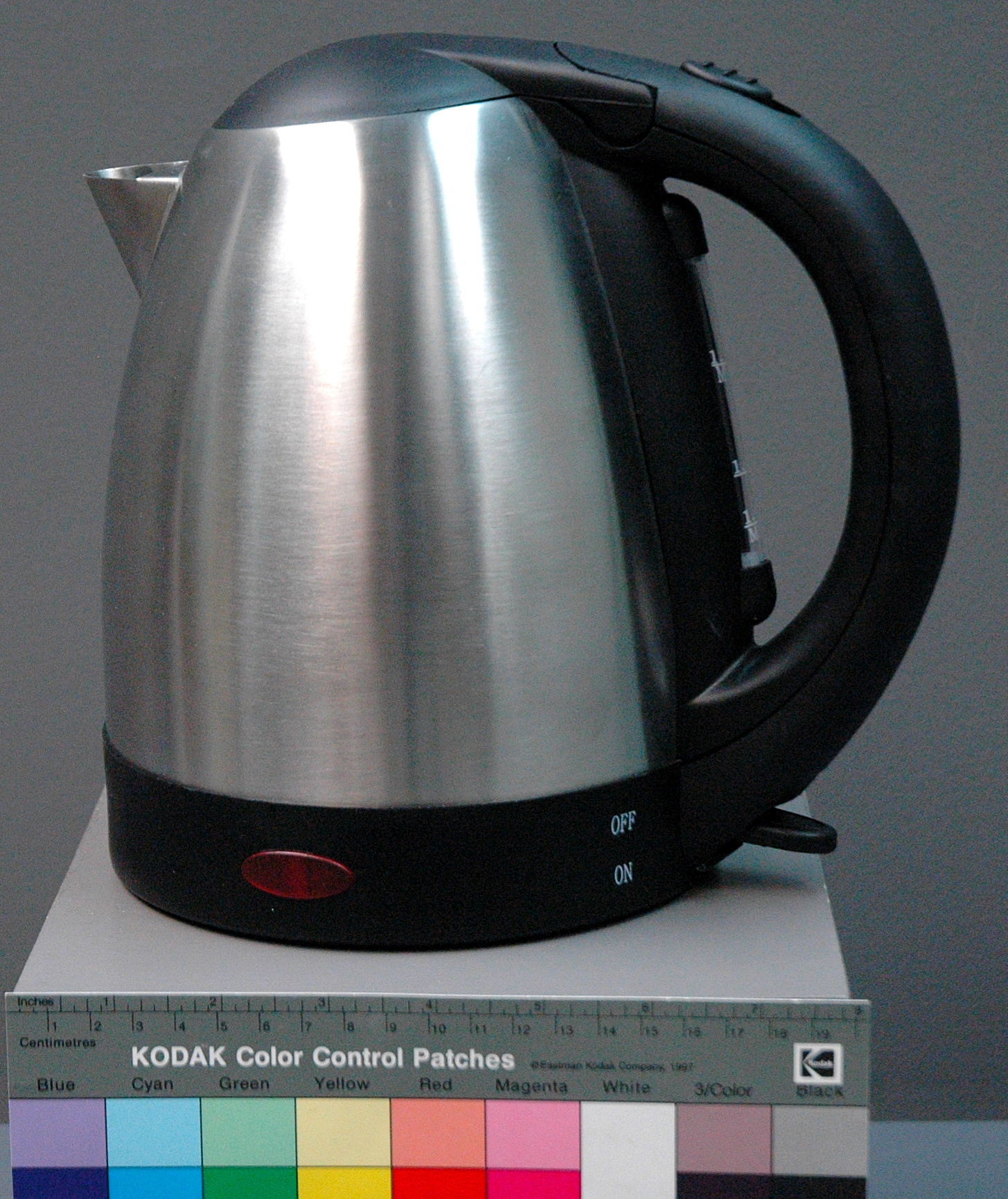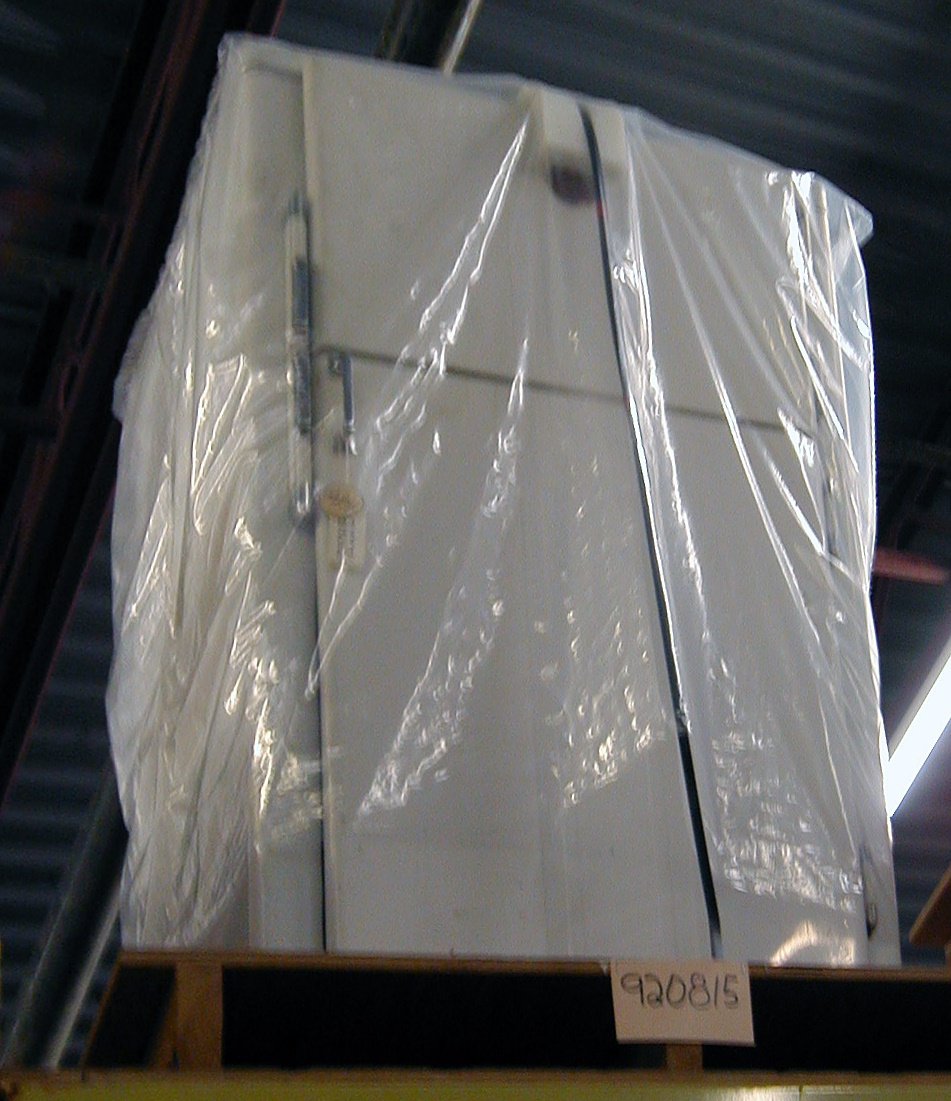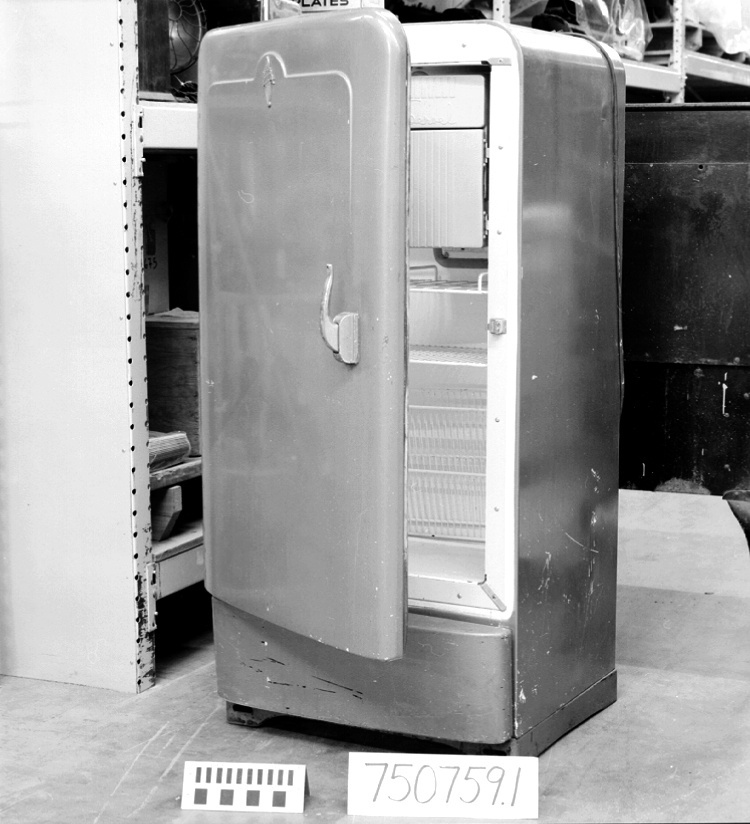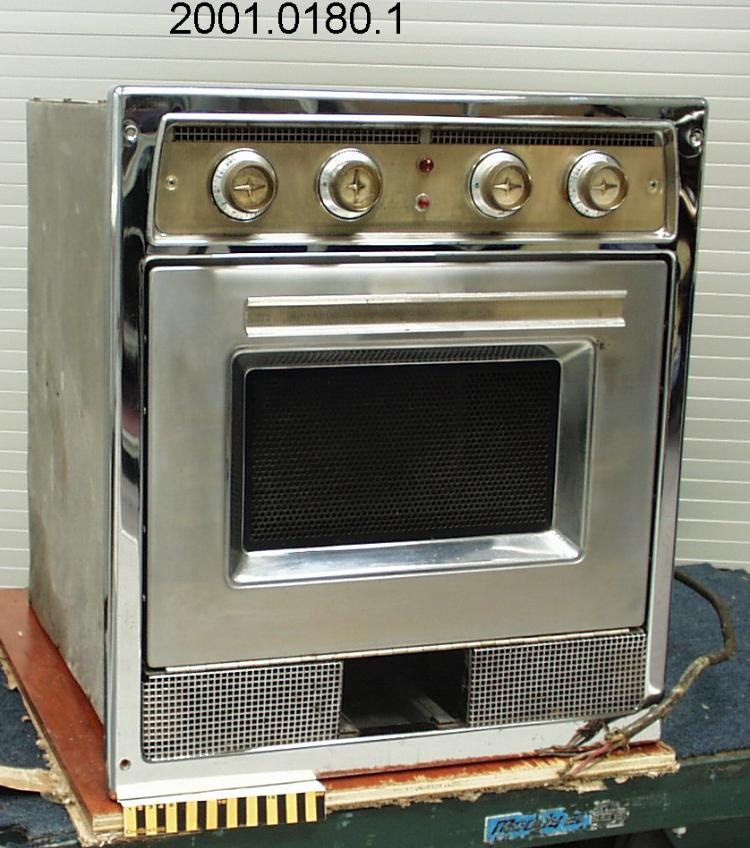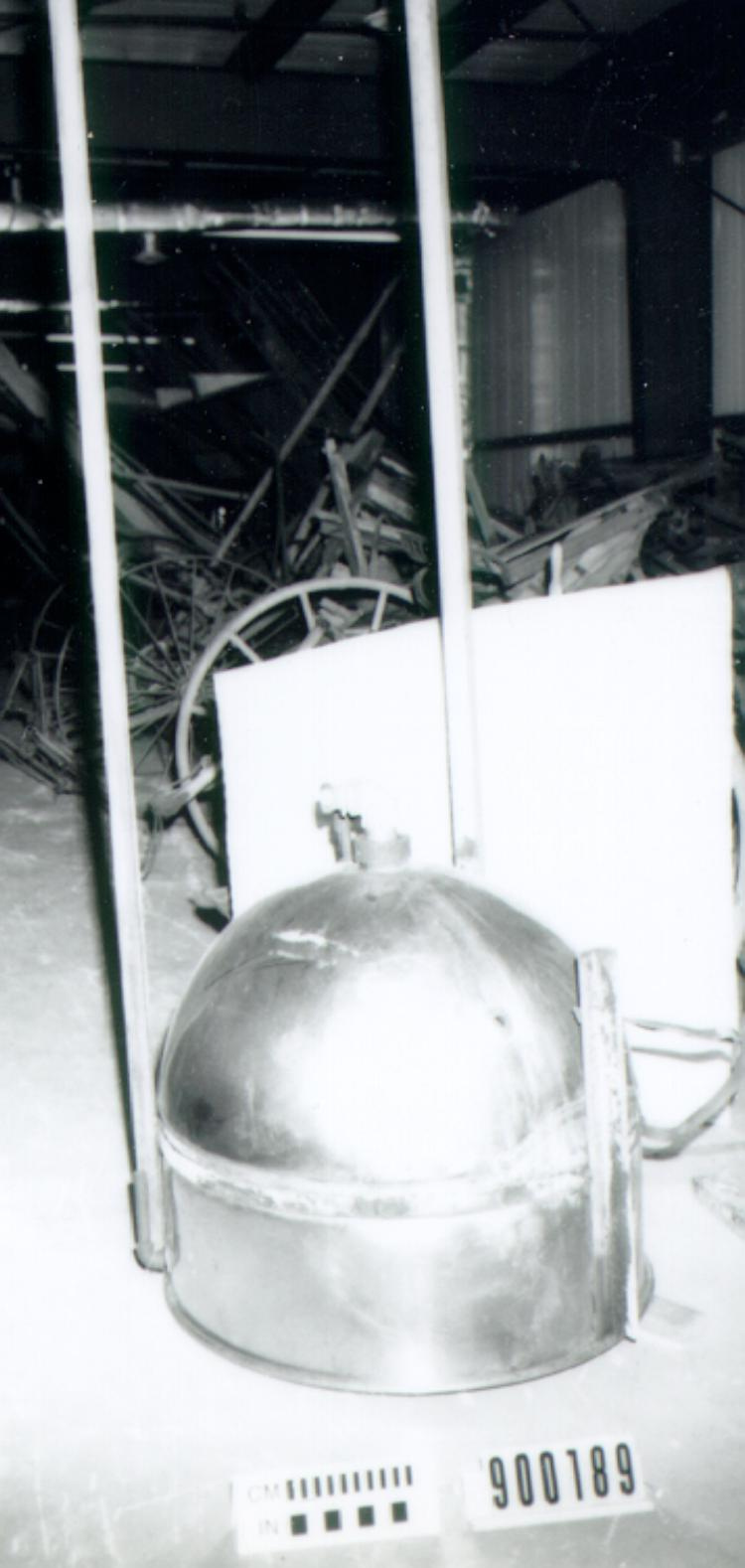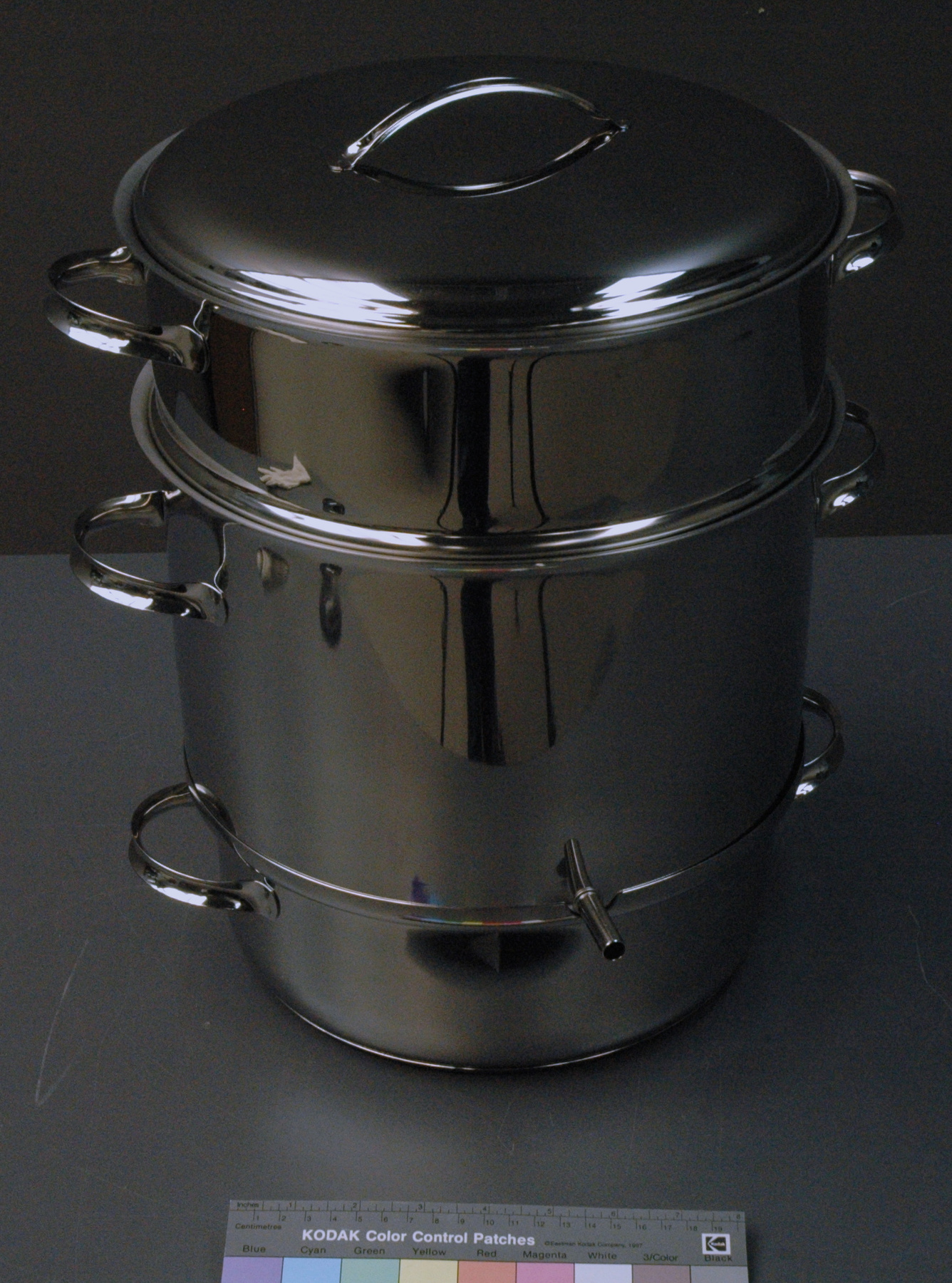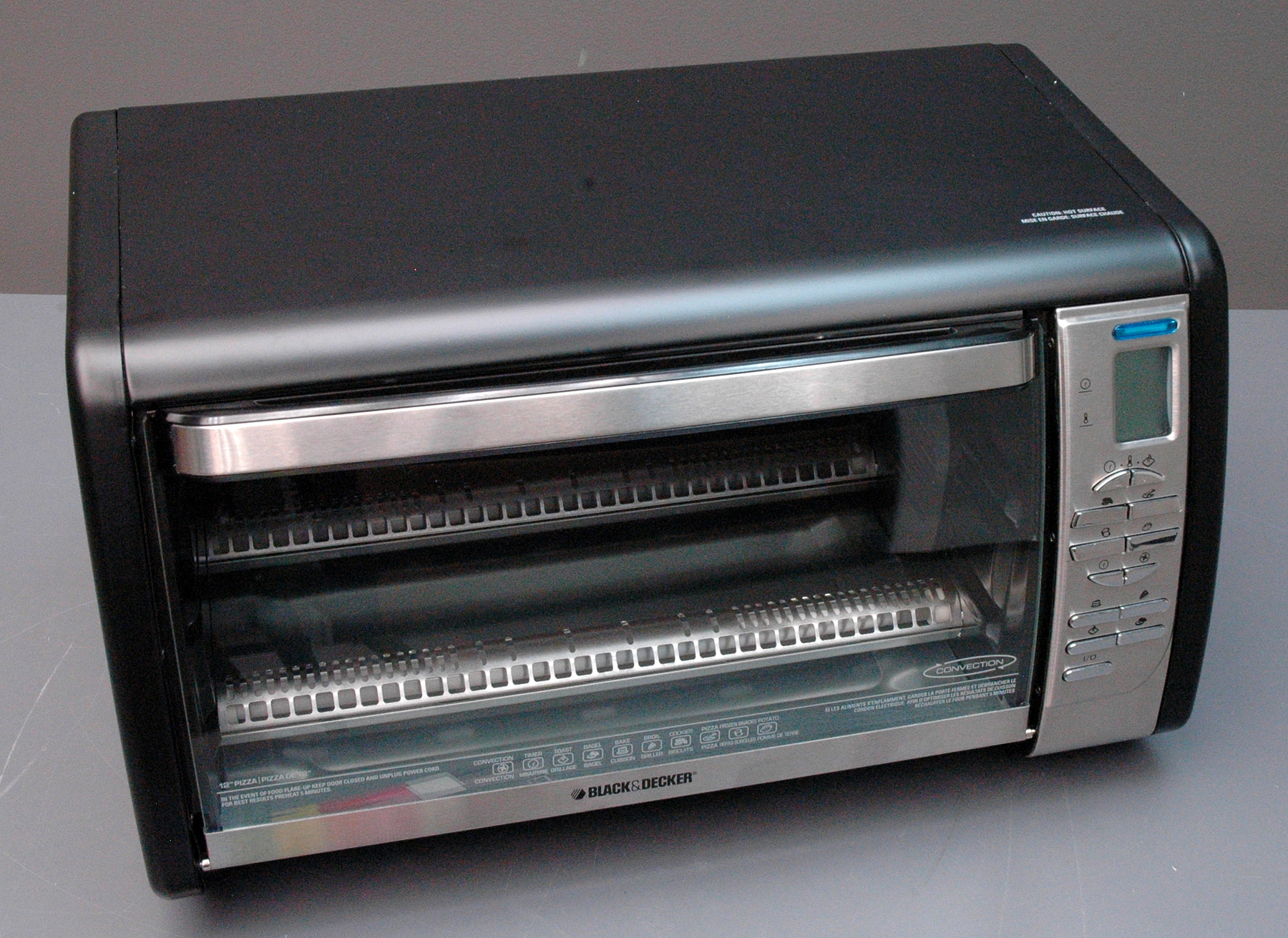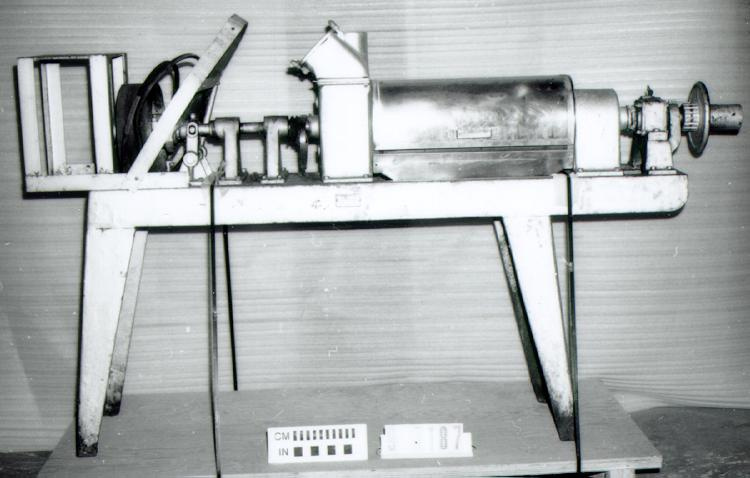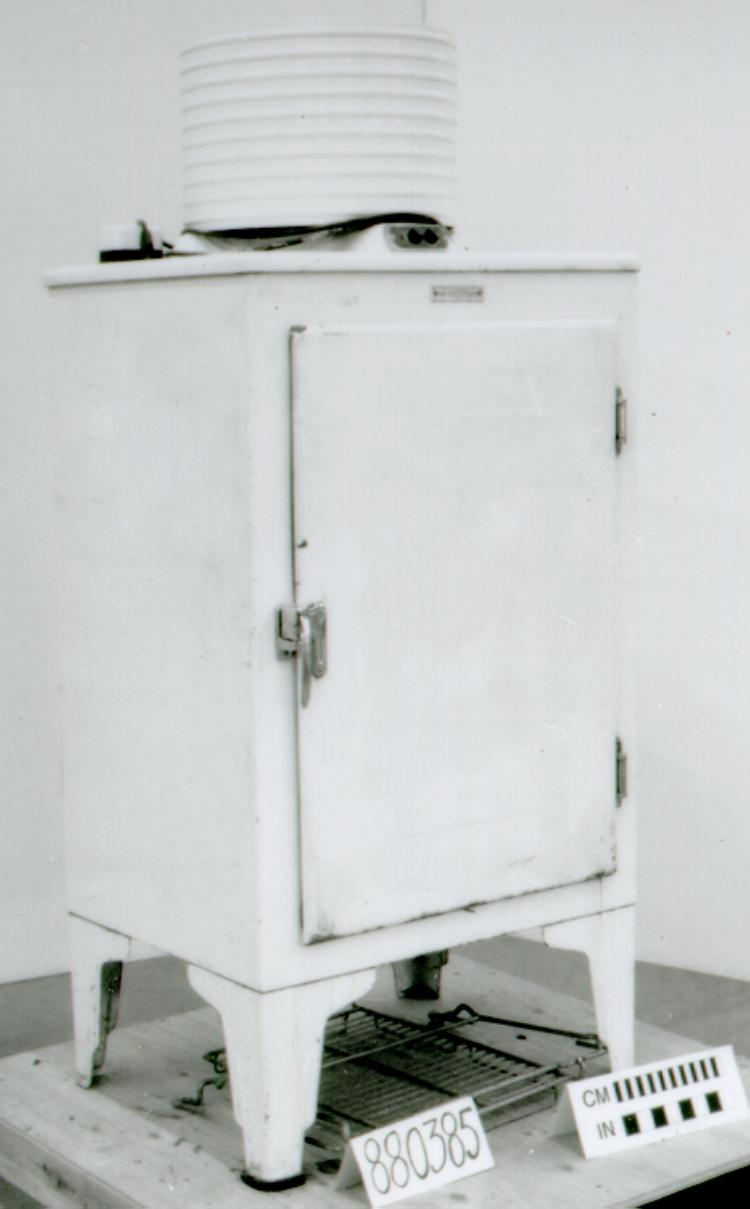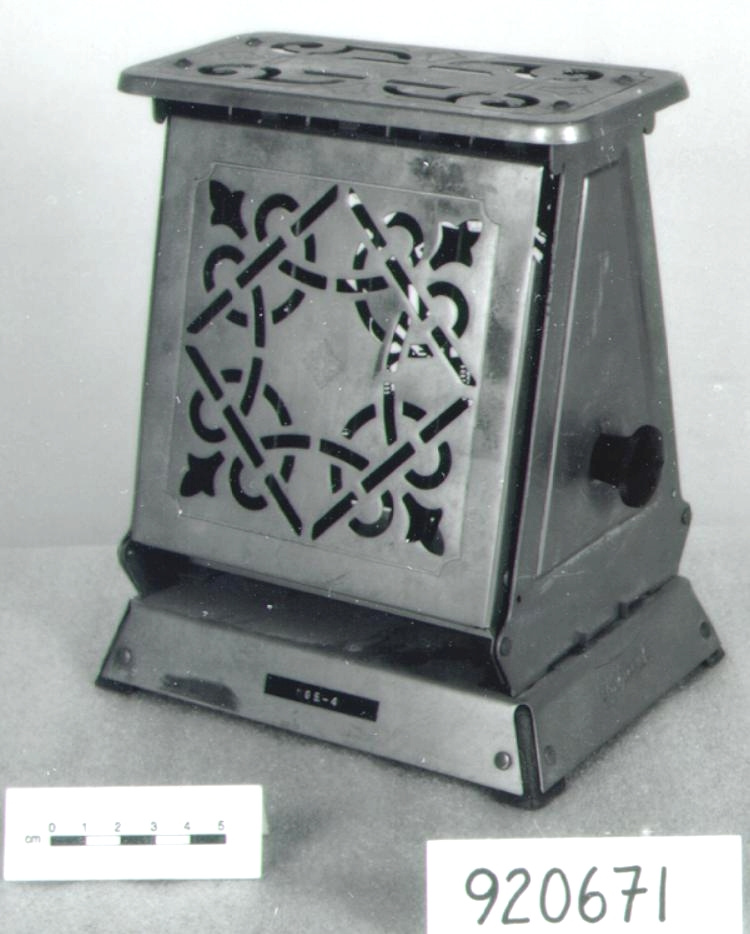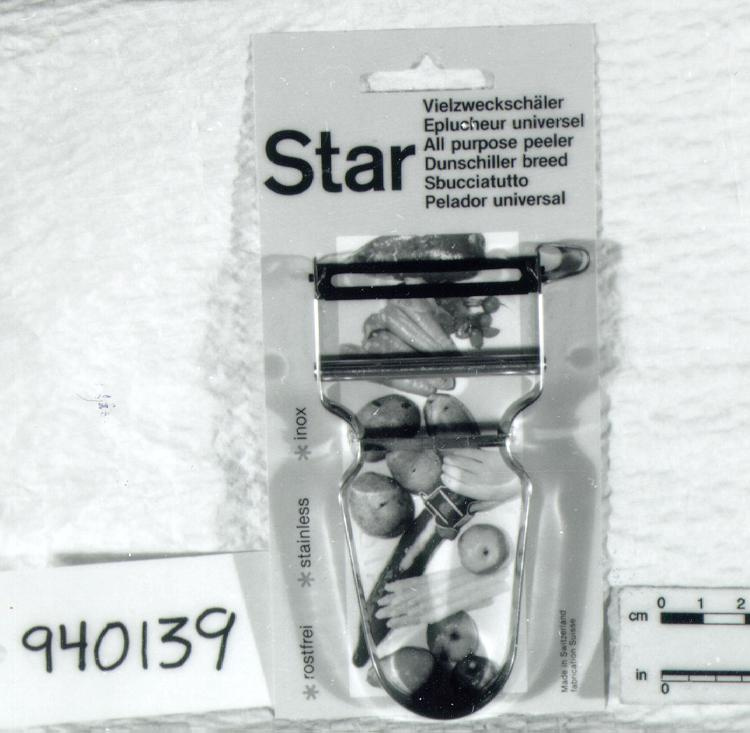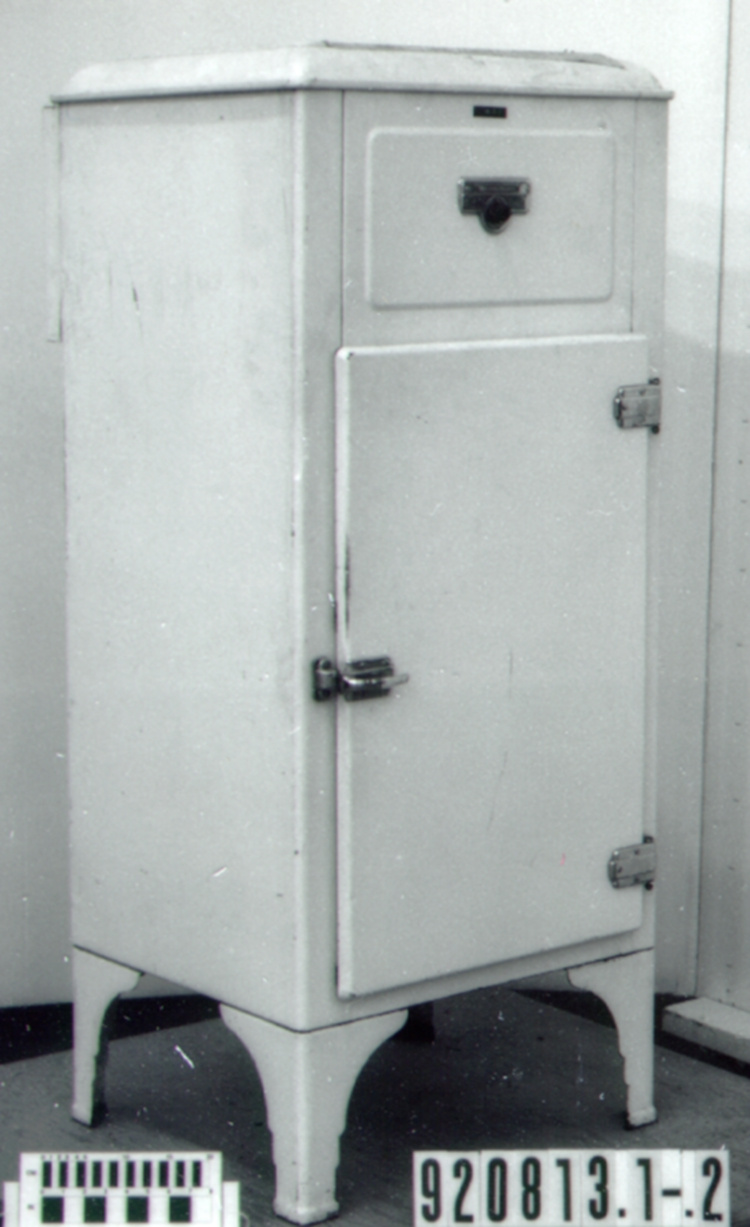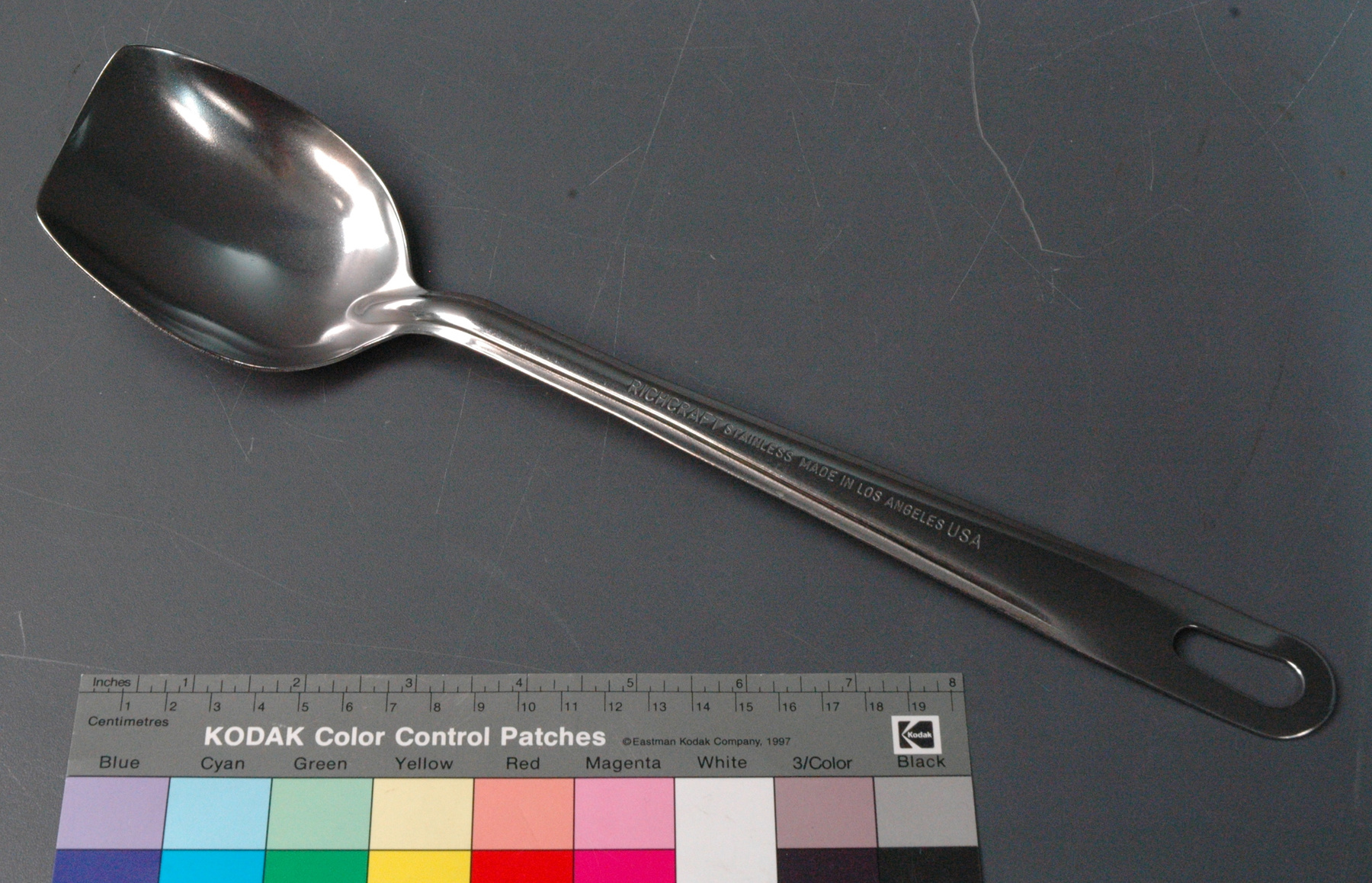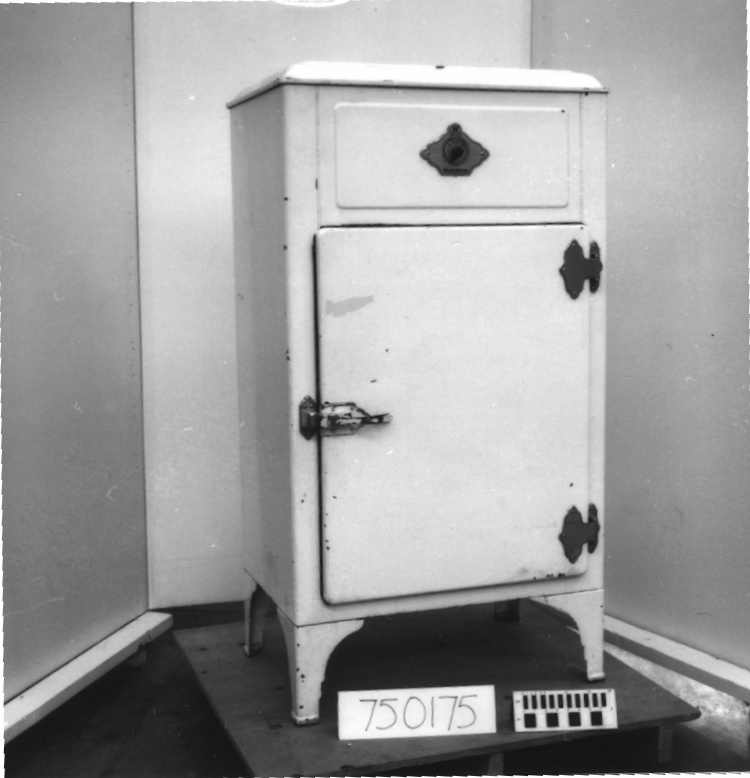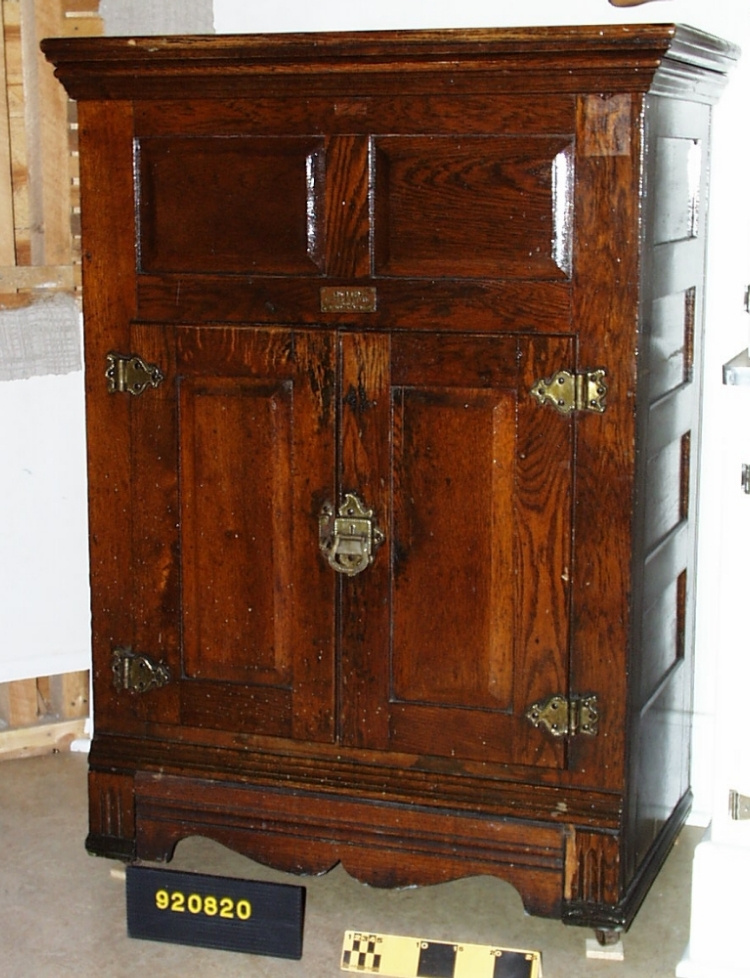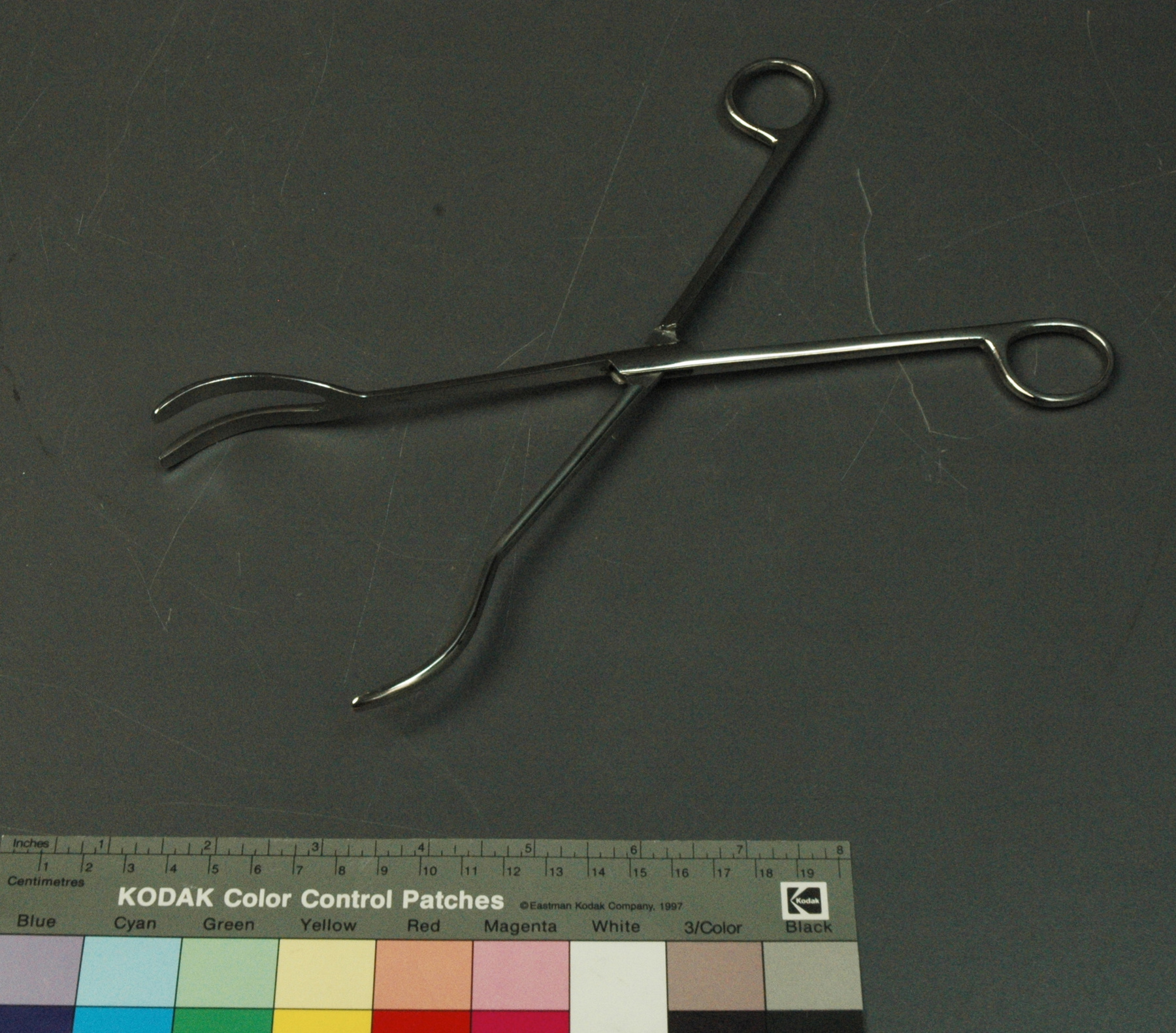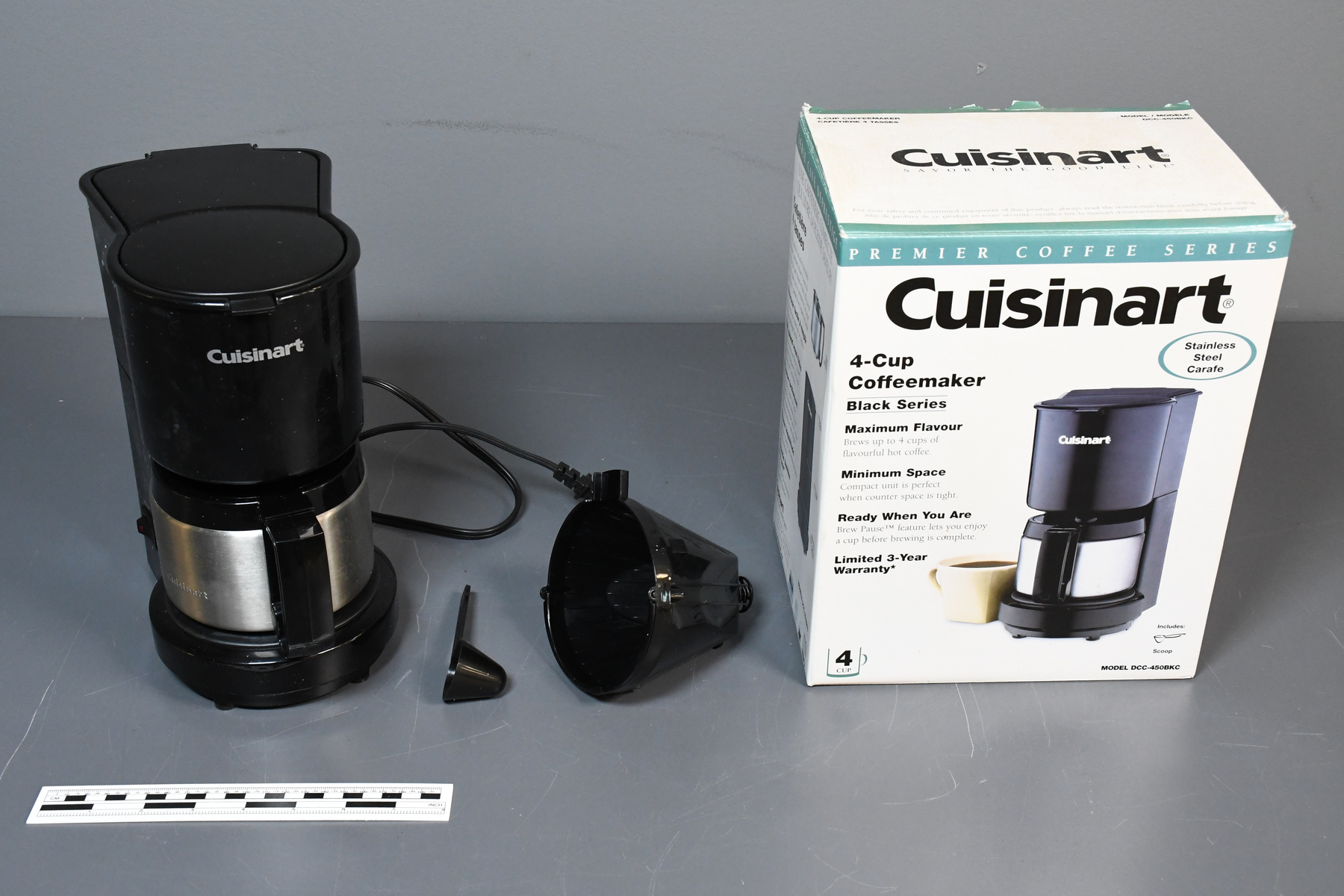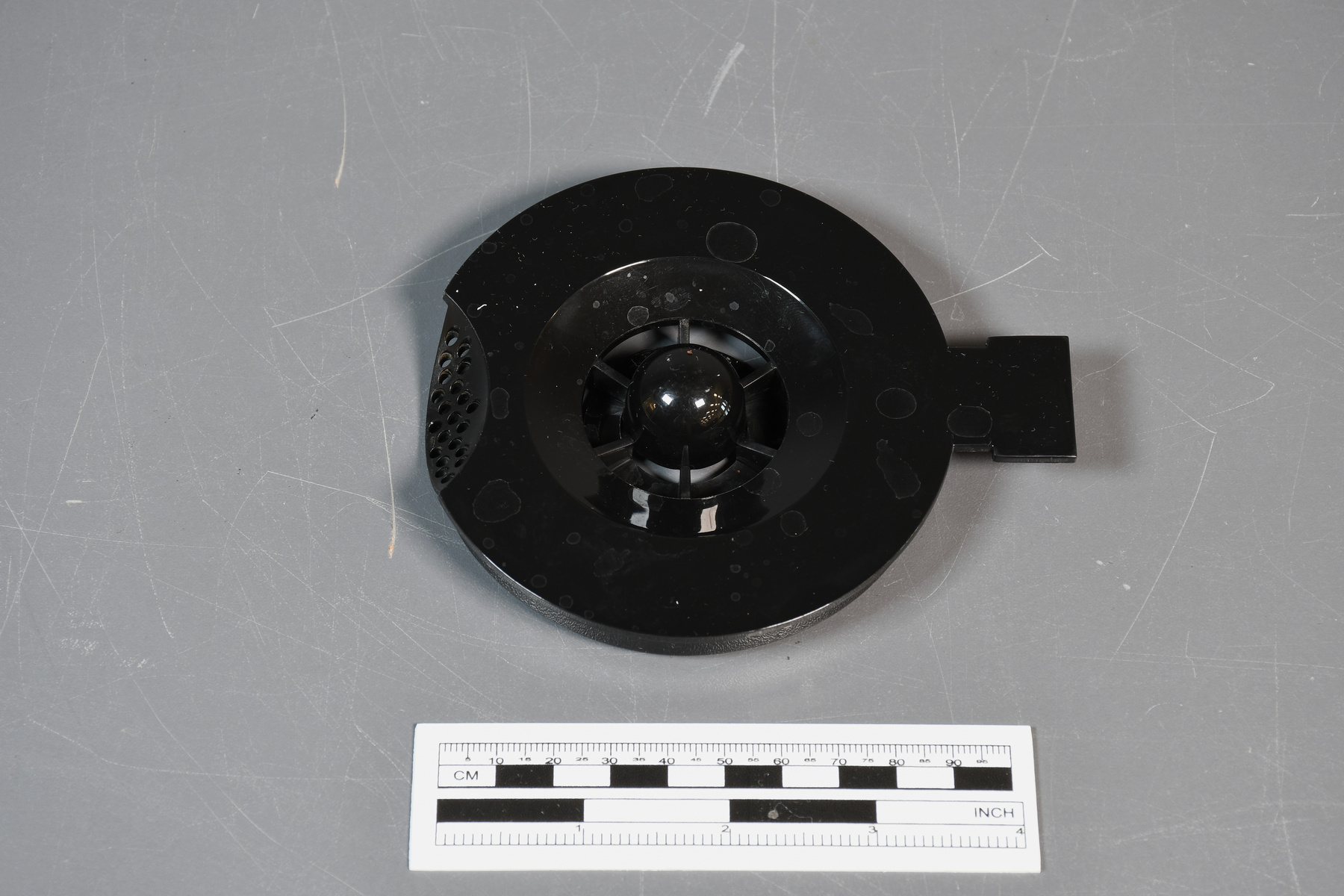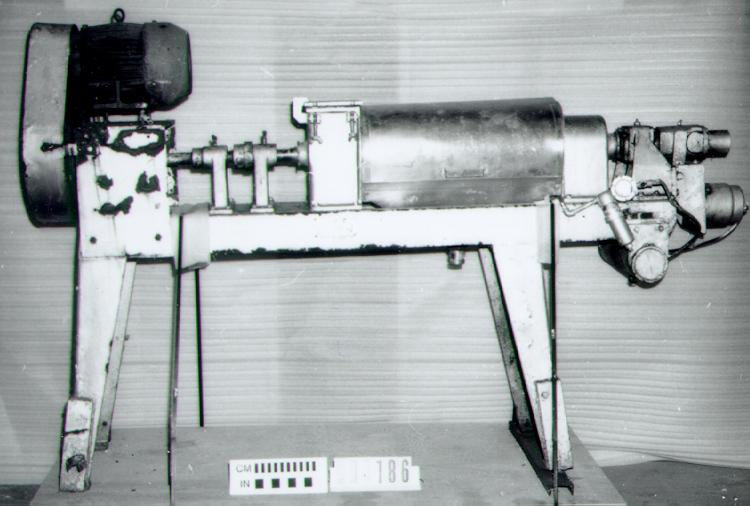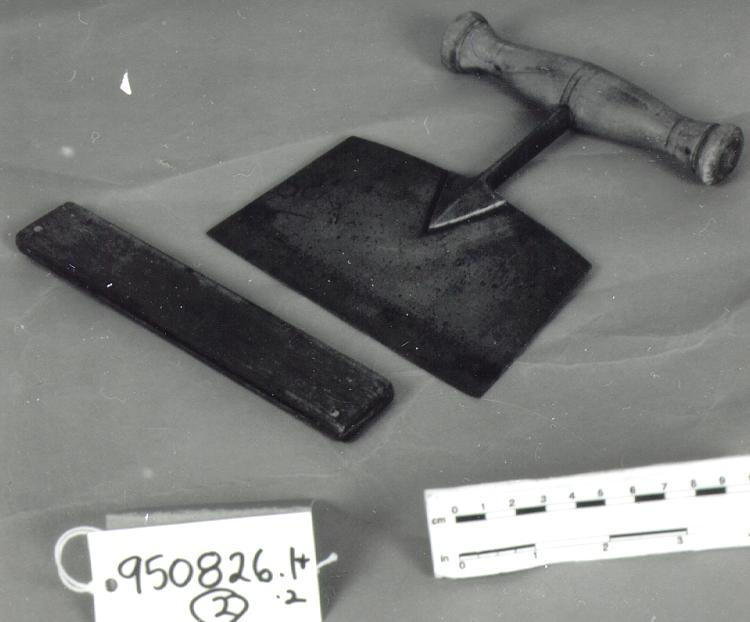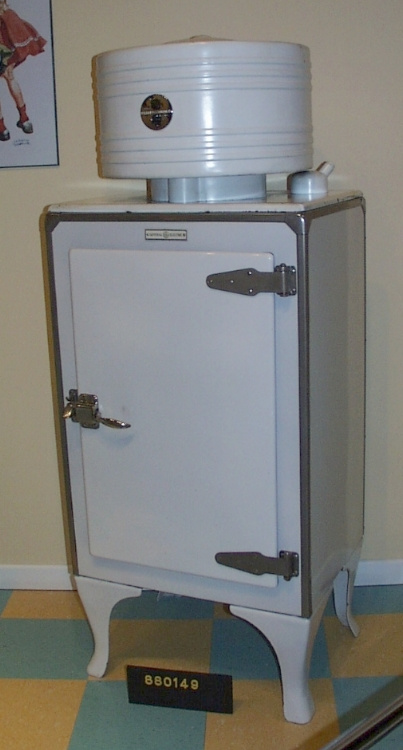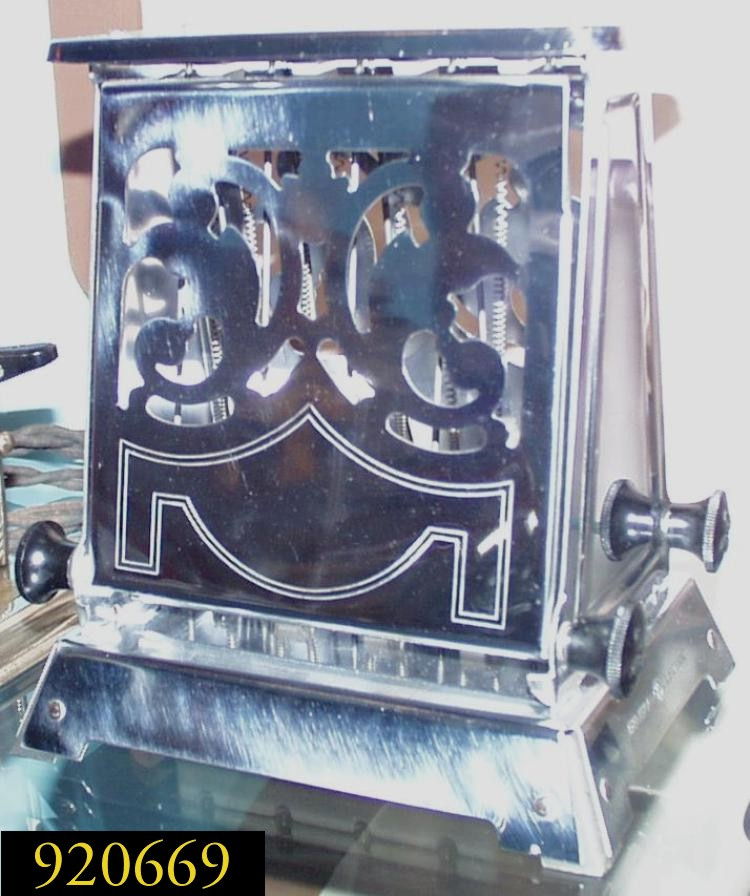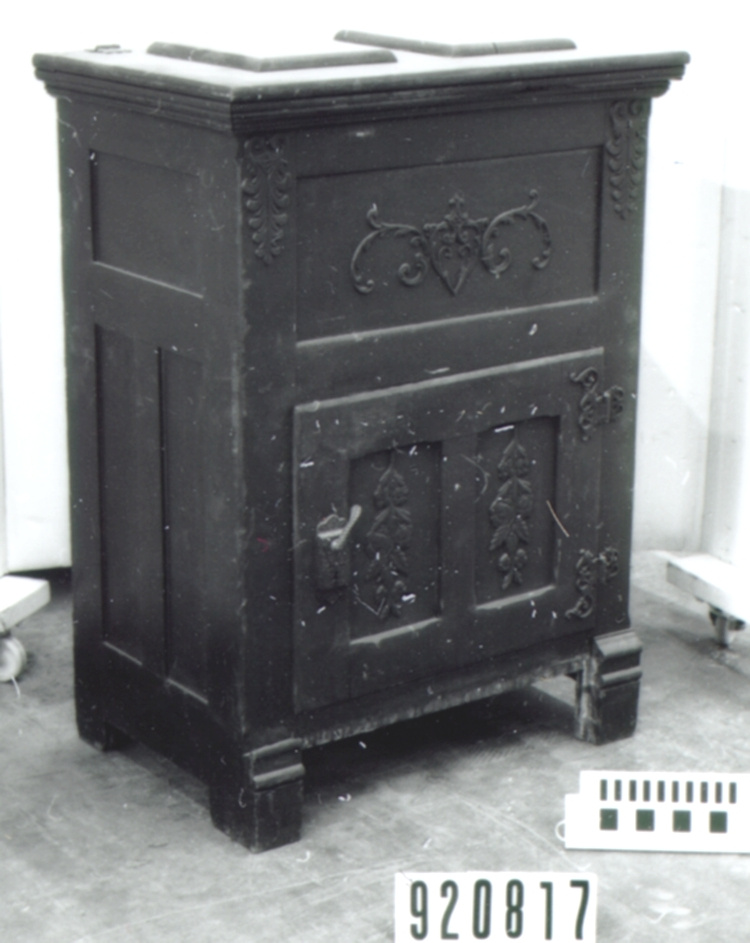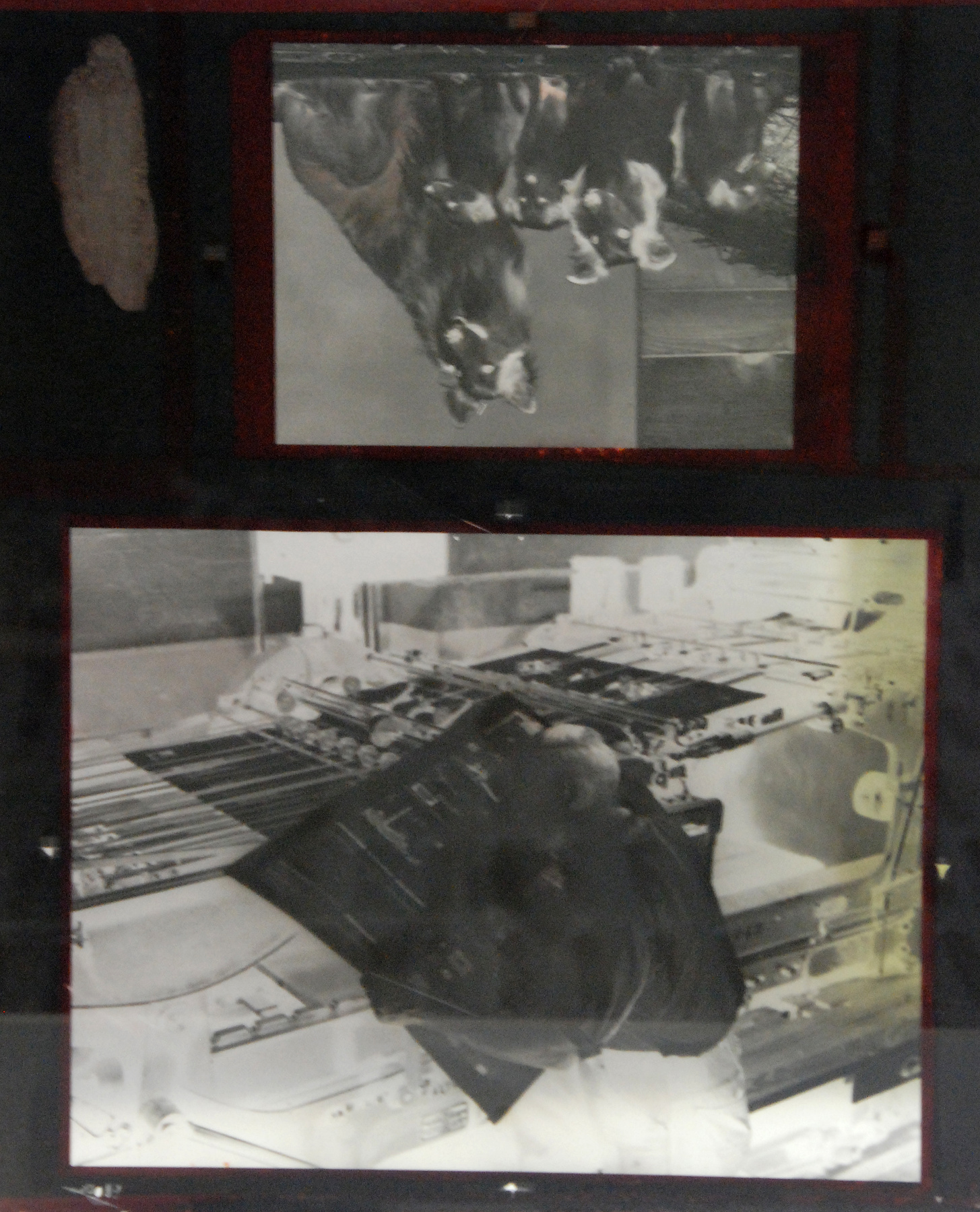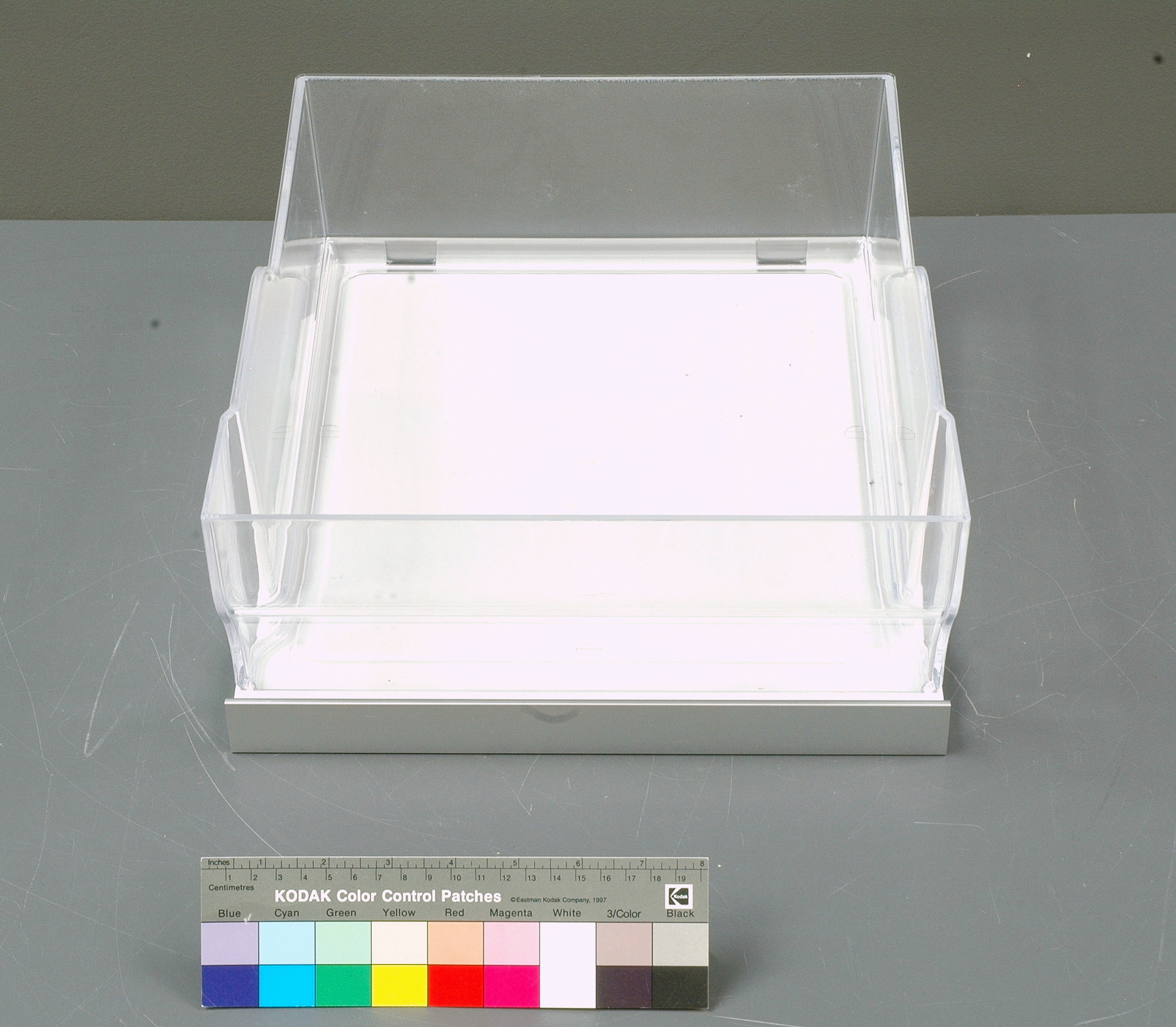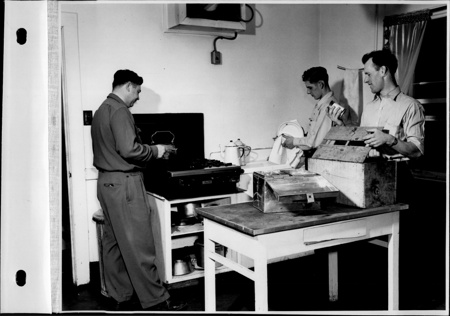Tiroir de réfrigérateur
Utiliser cette image
Puis-je réutiliser cette image sans autorisation? Oui
Les images sur le portail de la collection d’Ingenium ont la licence Creative Commons suivante :
Copyright Ingenium / CC BY-NC-ND (Attribution-NonCommercial 4.0 International (CC BY-NC 4.0)
ATTRIBUER CETTE IMAGE
Ingenium,
2016.0012.006
Permalien:
Ingenium diffuse cette image sous le cadre de licence Creative Commons et encourage son téléchargement et sa réutilisation à des fins non commerciales. Veuillez mentionner Ingenium et citer le numéro de l’artefact.
TÉLÉCHARGER L’IMAGEACHETER CETTE IMAGE
Cette image peut être utilisée gratuitement pour des fins non commerciales.
Pour un usage commercial, veuillez consulter nos frais de reproduction et communiquer avec nous pour acheter l’image.
- TYPE D’OBJET
- S/O
- DATE
- 2014
- NUMÉRO DE L’ARTEFACT
- 2016.0012.006
- FABRICANT
- Whirlpool Corp.
- MODÈLE
- Inconnu
- EMPLACEMENT
- United States of America
Plus d’information
Renseignements généraux
- Nº de série
- S/O
- Nº de partie
- 6
- Nombre total de parties
- 20
- Ou
- S/O
- Brevets
- S/O
- Description générale
- Clear synthetic drawer body, white synthetic base and wheels, with steel (possible) screws
Dimensions
Remarque : Cette information reflète la taille générale pour l’entreposage et ne représente pas nécessairement les véritables dimensions de l’objet.
- Longueur
- 38,3 cm
- Largeur
- 31,8 cm
- Hauteur
- 15,4 cm
- Épaisseur
- S/O
- Poids
- S/O
- Diamètre
- S/O
- Volume
- S/O
Lexique
- Groupe
- Technologie domestique
- Catégorie
- Traitement de nourriture
- Sous-catégorie
- S/O
Fabricant
- Ou
- Whirlpool
- Pays
- United States of America
- État/province
- Inconnu
- Ville
- Inconnu
Contexte
- Pays
- Canada
- État/province
- Nouvelle-Écosse
- Période
- 2015-2016
- Canada
-
This refrigerator was owned for 10 months by the donor while she lived in Halifax, NS. It was purchased in June 2015 and used by a family of three. The Kenmore refrigerator was purchased as it had one of the largest freezers on the market at the time. Although the owner did not like the massive size of the refrigerator, she very much enjoyed the large freezer, which suited her busy lifestyle. She had mentioned that the crisper (middle drawer) was a nice feature as it kept produce fresh. The family is moving and no longer want this huge appliance in their new house. They are aiming to get a more European style/size refrigerator, which is smaller and compact, as the owner feels that North Americans end up wasting a lot of space and food with the larger-is-better appliances. The refrigerator is in great condition with very little wear and tear, and came with an extra motor for the ice dispenser, as the ice dispensers on these refrigerators don’t always work perfectly. The owner is a mechanic and her only complain about the functionality of the fridge is that it is quite noisy comparing to the European brands, and that the ice machine doesn’t always work well. She also doesn’t always understand why fridges such as Kenmores have to take up so much insulation space. Note: Many of her comparisons were with European lifestyle and product as she is married to a European. She also lived there with her family for 10 years. She seems to prefer the sleekness and smaller size of the average European appliance. From the standard whites of the pre-1950s, to the pastels, earth tones, and vibrant colours of the 1950s, 1960s, and 1970s, to the off-whites and whites in the 1980s and early 1990s, contemporary kitchen designers and homeowners often choose stainless steel for an efficient utilitarian look. The introduction of stainless steel to fridge facades began in the late 1990s and is crossover from restaurant kitchens. Stainless steel appliances are the standard for restaurant kitchens because they withstand heavy use and because they are proven to be more sanitary for these cooking and working conditions. These standards are not necessary in most conventional home-kitchens, however stainless steel appliances are, for the moment, a status good. (From the Acquisition Proposal, see Ref. 1) - Fonction
-
To store food items in a refrigerator in a separate, controlled environment. - Technique
-
This refrigerator includes several features, which are representative of the early 21st century design: a bottom freezer, a counter height storage drawer with smooth motion crisper bins, French door, ice dispenser, and the stainless steel finish. The storage drawer uses air from the refrigerator and automatic humidity control to extend the life of fresh produce. Rollers help the bins glide smoothly even when they are fully loaded. The fridge also features dual evaporators that cool the refrigerator and freezer separately. The first refrigerators that included a freezer big enough to hold food were developed during the 1940s. At the time, frozen food became a more common consumer item rather than a luxury item. During the Second World War, canned food was shipped to feed soldiers fighting in Europe and Canadian consumers were encouraged to purchase frozen food instead. As more women entered the workforce, the freezers grew in size. Since 1949, refrigerators and freezers have been built as two separate compartments. Vast majority of refrigerators had freezers located on top of the refrigerator until the early 2000s. This allowed quick access to frozen food at the eye level. In the early 2000s, a change in the lifestyle of North Americans, who started to purchase more fresh fruits and vegetables, led to an increased demand for refrigerators that allowed to store fresh food at the eye level and frozen food in the bottom compartment. This demand is paralleled by a decrease of households that own a freezer between 1990 and 2010. In the 1930 Frigidaire introduced the “Hydrator,” a special drawer for fruits and vegetables. It was located at the bottom of the refrigerator for the ultimate temperature to store the produce. Refrigerators that feature a drawer between the fridge and the freezer section of the appliance are quite recent on the market. The drawer is often named in magazines and blogs as the most convenient change in the refrigerator design. It allows a quick access to fruits and vegetables and to snacks for children without opening the door to the appliance. French door refrigerators were first made in the early 1980s by Whirlpool but were quickly discontinued. The design came back in the 1990s, as a side-by-side freezer and refrigerator and remained even as the freezers were moved to the bottom of the appliance. The first ice cube makers were installed in the refrigerators’ door in 1965, very uncommon until late 1990s. (From the Acquisition Proposal, see Ref. 1) - Notes sur la région
-
Inconnu
Détails
- Marques
- On the proper bottom: "W10447491 T1 1/ >HIPS</ FSP [registered trademark symbol]"
- Manque
- Appears complete
- Fini
- Drawer has a white proper bottom and wheels, a clear drawer body, and a silver-coloured drawer pull.
- Décoration
- S/O
FAIRE RÉFÉRENCE À CET OBJET
Si vous souhaitez publier de l’information sur cet objet de collection, veuillez indiquer ce qui suit :
Whirlpool Corp., Tiroir de réfrigérateur, vers 2014, Numéro de l'artefact 2016.0012, Ingenium - Musées des sciences et de l'innovation du Canada, http://collections.ingeniumcanada.org/fr/item/2016.0012.006/
RÉTROACTION
Envoyer une question ou un commentaire sur cet artefact.
Plus comme ceci
